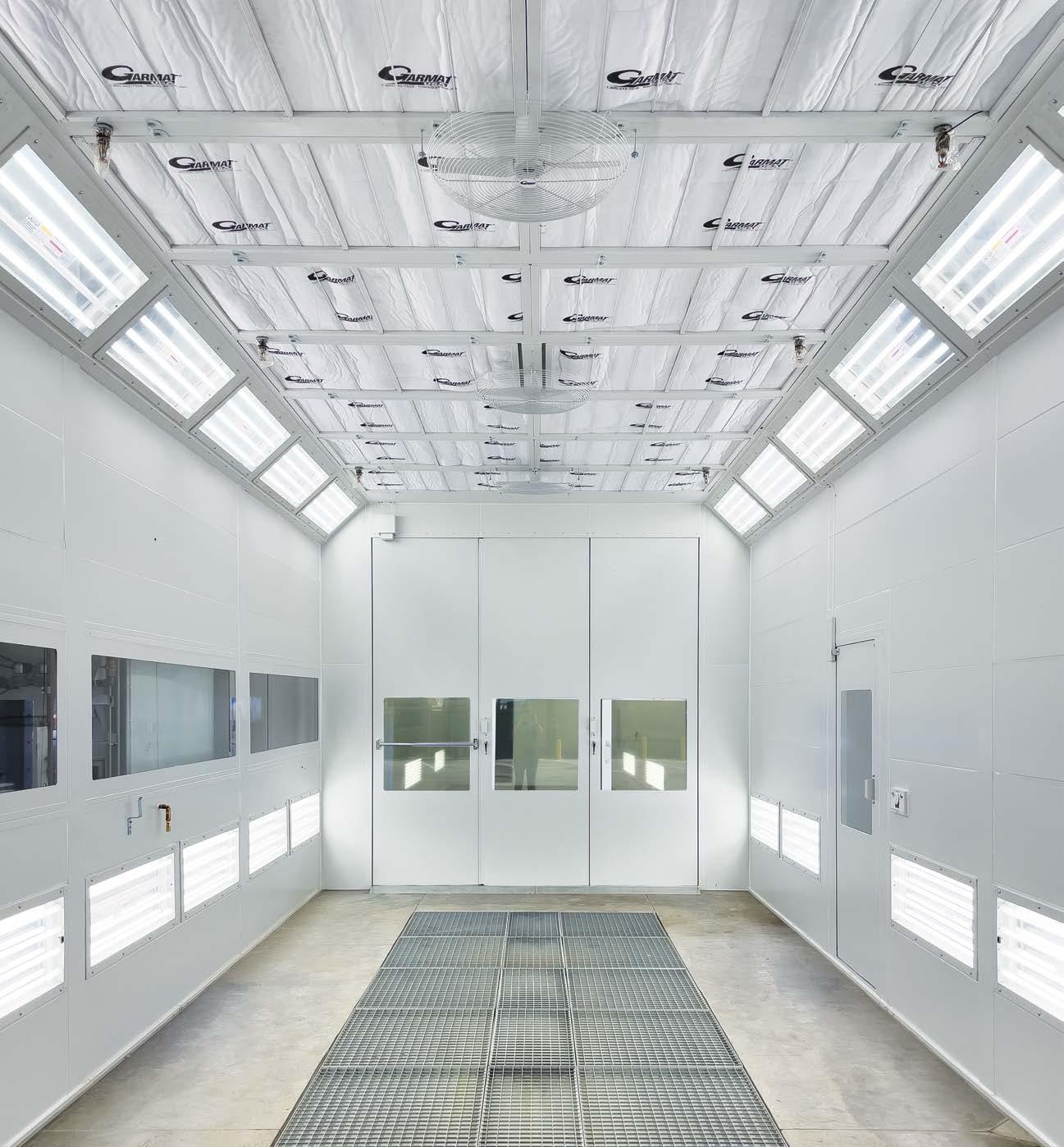




Two Dodge muscle cars, the Dodge Charger SRT Hellcat and Dodge Charger HEMI, once again top the Highway Loss Data Institute’s list of the most-stolen vehicles for model years 2020-22. Meanwhile, a viral trend targeting Hyundai-Kia vehicles propelled four Kia models into the top 20.
has increased at a stunning rate. For 2020-22 Charger SRT Hellcat models, there were 25 whole-vehicle theft claims per 1,000 insured vehicle years, up from about 18 for 2019-21 models. For comparison, the most-stolen 2017-19 model, the Infiniti Q60, had only two thefts per 1,000 insured vehicle years.
An alleged “family and friend” organized auto insurance fraud ring was thwarted by the Urban Automobile Insurance Fraud Task Force. Seven individuals were arrested in connection to this case. In total, 23 individuals face felony counts of insurance fraud and conspiracy.
Alleged ring leader Gerson Castro Martinez, 34, of San Jose, CA, was arrested July 29 on eight felony counts. Castro allegedly involved family and friends in a fraud scheme that netted defendants more than $174,000.
An investigation uncovered 33 claims that contained a similar modus operandi, where repeat damage claims were made, insurance policies purchased either with fictitious
Theft claims for the Charger SRT Hellcat were more than 60 times more frequent than the average for all 2020-22 models, relative to their numbers on the road, while theft claims for the Charger HEMI were more than 20 times higher than average, HLDI’s latest whole-vehicle theft report shows.
Charger and Challenger models with large, powerful engines have featured among the top five moststolen vehicles since model year 2011, but the frequency of claims
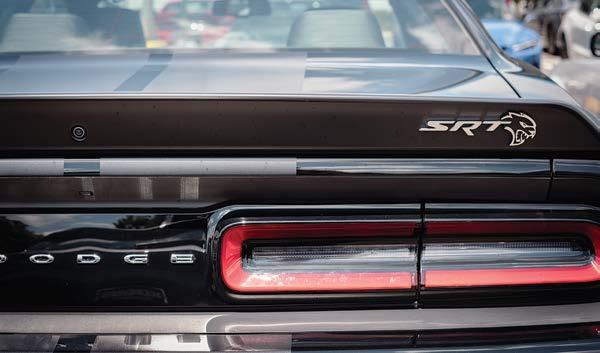
“If you own a Hellcat, you better check your driveway,” said HLDI Senior Vice President Matt Moore “These numbers are unbelievable.”
Other frequently stolen 202022 models included luxury vehicles made by BMW, Infiniti and Land Rover, and three large pickups with powerful engines.
Relatively inexpensive models from Honda, Kia and Nissan round out the list. Thefts of Hyundai and Kia vehicles soared in recent years
l CONTINUED ON PAGE 12
identities or involved parties that knew each other but reported claims as though they were strangers and had been involved in a loss. The ring used at least 40 different vehicles. Some were purchased with damage, and some sustained damages in staged collisions. They ran the scheme for four years.
“This alleged auto insurance fraud ring is a prime example of the type of fraud that increases premium prices for all California drivers,” said Insurance Commissioner Ricardo Lara. “The hard work of our multiagency task force stopped this organized insurance crime ring that operated for years stealing more than $174,000 in fraudulent auto claims.”
l CONTINUED ON PAGE 4
Two men with different backgrounds but a shared passion for vehicle repair have opened a new automobile repair shop. But this workshop isn’t staffed by mechanics—it provides vehicle owners with the needed tools to fix their cars themselves.
U Turn Garage, located at 1110 Yellowstone Ave., Suite C, in Pocatello, ID, is a fully equipped do-

l CONTINUED ON PAGE 16
Columnist Abby Andrews: NHTSA, Massachusetts Find Common Ground on State’s Right to Repair Law
The SATAjet X 5500 universe is two things: a SATA premium paint spray gun, and your key to the SATA universe – a whole world full of exclusive content, benefits and promotions. Within the SATA universe, you can participate in special raffles. You'll be among the first to know when new SATA products appear on the horizon. Immediately following your registration you will be granted access to exclusive content.
Don't hesitate to get your SATAjet X 5500 universe.
Scan the QR code on your SATA universe gun. Register. And become part of something big.


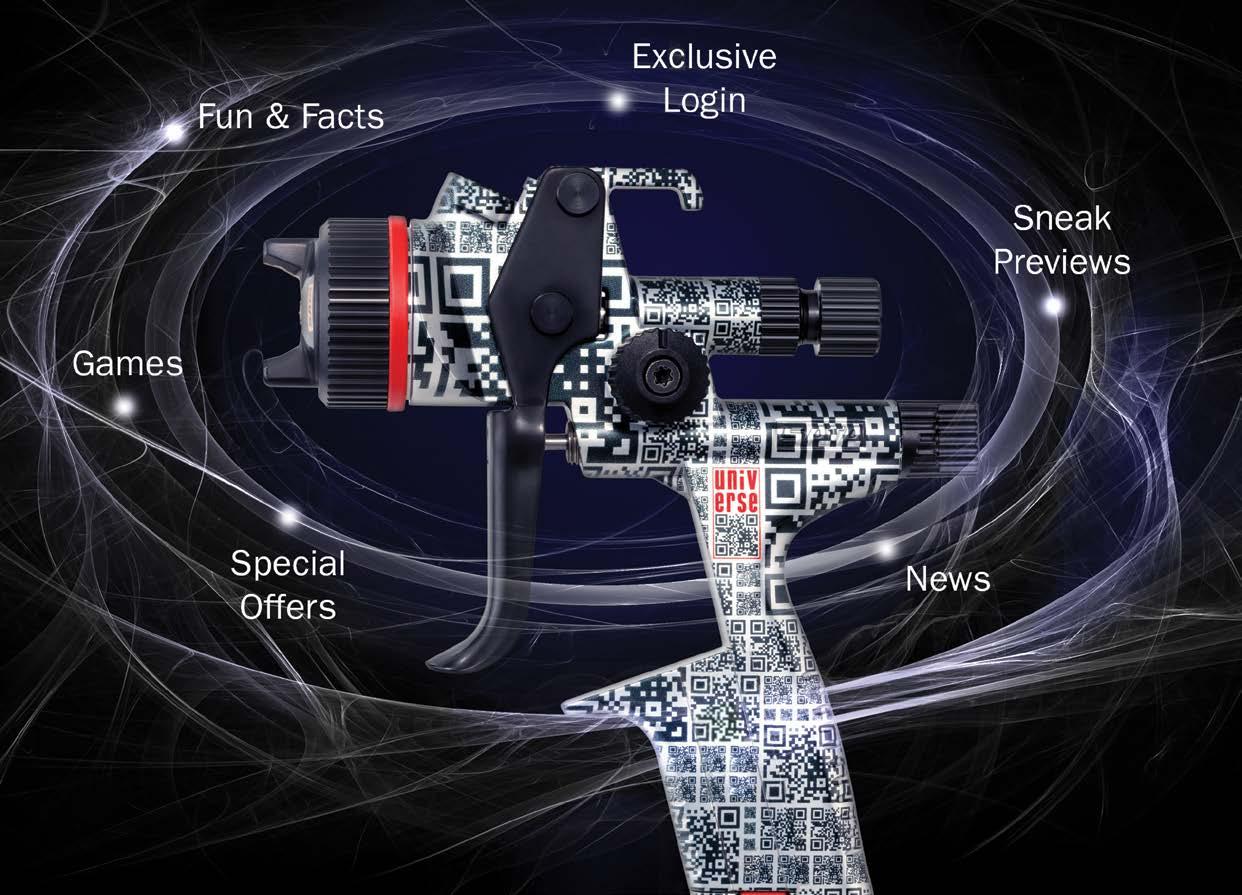
Mike Anderson Does Your Shop Lump In Unrelated Costs with ‘Paint Materials’? 30
Abby Andrews NHTSA, Massachusetts Find Common Ground on State’s Right to Repair Law 20
Toby Chess Toby Chess Names ‘Must See Kool Tools of SEMA 2023’ 14
Stacey Phillips
The U.S. Environmental Protection Agency announced a series of settlements with companies in five states, including Washington, that illegally sold “defeat devices” that altered emission control systems on vehicles.
In an Aug. 24 news release, EPA said Competition Specialties Inc. of Auburn, WA, paid a $225,368 penalty for selling 227 parts or components between 2018 and 2020 which allowed for the removal of vehicle emission control components.
An even larger penalty of $265,000 was levied against Diamond Eye Manufacturing Inc. of Athena, OR. The company was accused of selling 33,134 parts between 2017-19 that compromised emission control components. As part of the settlement, Diamond Eye destroyed its inventory of illegal parts, notified customers of the agreement with EPA, and no longer provides technical support or honors warranty claims for the illegal parts. The company will
According to Department of Insurance detectives, the fraud was uncovered when Rene Murillo Hernandez, 43, of Santa Clara, CA, alleged he hit a parked vehicle after his vehicle was struck by an unknown driver. Murillo left a note with his insurance information on the parked vehicle he struck. When the owner of the parked vehicle, another alleged member of the fraud ring, turned in a claim to the insurance company, the investigation revealed the damages were inconsistent with the two vehicles colliding with each other. Further investigation revealed the damages allegedly sustained in the incident were previously reported in a prior loss under different ownership, and that the PO Box address being used was used in several other
also post an announcement of the settlement on its website for eight weeks, EPA said.
Other companies accused of violations, such as removal of catalytic converters, and their penalties were Maxon Performance Parts Corp. of Pennsauken, NJ ($30,000) and, from California, Maxon Auto Corp. of Chino ($120,000), Remus Technology Inc. of Emeryville ($40,000), SHJY Trading Corp. of Walnut ($15,000), and WX Trading Corp. of Walnut ($15,000). Collectively, SHJY and WX Trading sold more than 2,900 parts that allowed for removal of emission control devices, EPA said.
Except for Competition Specialties Inc., the companies each paid or will pay reduced penalties because of a demonstrated inability to pay higher amounts, the agency said.
Authorities say products that “defeat” manufacturer-compliant emissions systems result in vehicles spewing increased nitrogen oxides (NOx) and particulate matter which pose known threats to public health and violate the federal Clean Air Act.
“Defeat devices enable more air pollution from vehicles to the
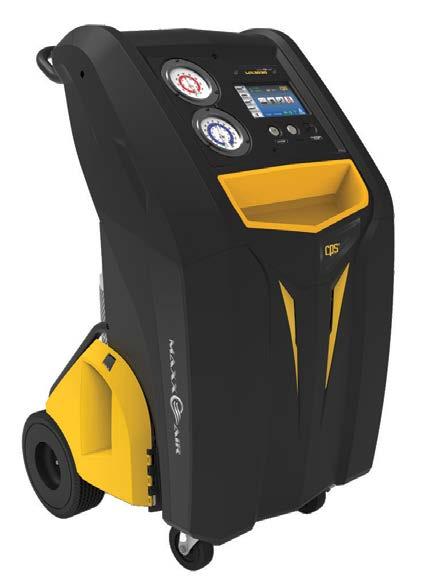
similar claims by other individuals all claiming the PO Box address was the address where their vehicles were housed.
The claims were investigated by the Urban Automobile Insurance Fraud Task Force, made up of the California Department of Insurance, Santa Clara County District Attorney Investigators, the California Highway Patrol and the National Insurance Crime Bureau (NICB).
The arrests were carried out by detectives with the California Department of Insurance, the Santa Clara County District Attorney’s Office, California Highway Patrol, Santa Clara County Sheriff’s Office and San Jose Police Department. This case is being prosecuted by the Santa Clara County District Attorney’s Office.
Source: California Department of Insurance
detriment of Americans’ health, and EPA is vigilant about holding accountable the entities that sell these illegal products,” said Martha Guzman, EPA’s Pacific Southwest regional administrator.
According to a study by EPA’s Office of Enforcement and Compliance Assurance, illegally modified diesel trucks built after 2009 and before 2020 generated more than 570,000 tons of excess NOx and 5,000 tons of excess particulate matter during the lifetime of the trucks.
EPA also cited another recent enforcement actions for violations of the Clean Air Act.
An Idaho man agreed to pay $1 million in criminal fines and may face up to two years in prison after pleading guilty in U.S. District Court in Pocatello as part of an agreement with federal prosecutors, according to an EPA news release. The defendant, Barry Pierce, is owner of two diesel performance retail outlets, GDP Tuning LLC and Custom Auto of Rexburg LLC, doing business as Gorilla Performance. He is scheduled to be sentenced Nov. 8.
According to court documents, GDP Tuning and Pierce conspired with others to sell tens of thousands of tuning devices and software which tampered with vehicles’ on-board diagnostic systems. Such OBD systems normally detect altered emissions control equipment and produce a “check engine” light on the dashboard. If not remedied, some vehicles go into “limp mode” and limit maximum speed to 5 mph—an incentive to get the vehicle repaired. The illegal tampering devices and software bypass such controls.
“The defendants in this case purposefully violated laws that protect air quality and the overall quality of life for Idahoans, especially vulnerable populations such as children, the elderly and those who suffer from respiratory conditions,” said U.S. Attorney Josh Hurwit for the District of Idaho. “My office will continue to partner with law enforcement agencies to prosecute those who seek illegal profits at the expense the public’s health and our shared environment.”
EPA also cited enforcement actions in California and New Jersey.
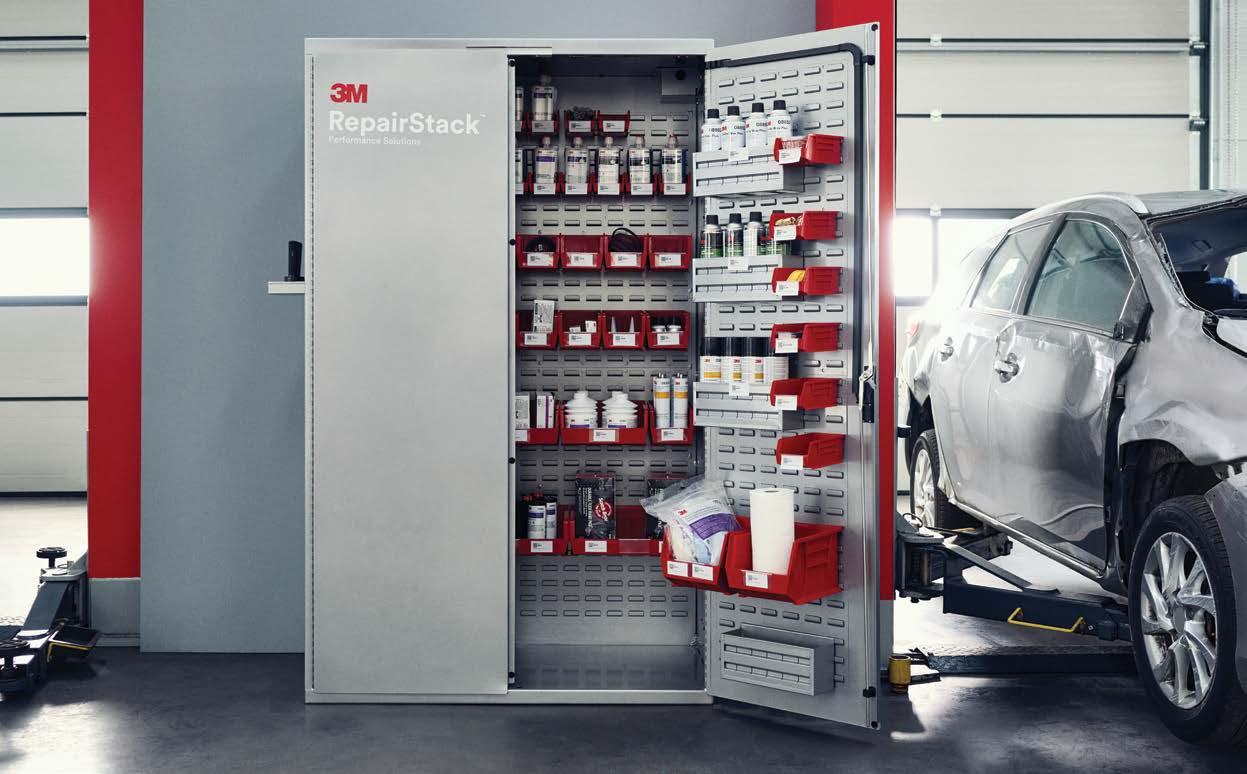





The ASE Education Foundation recently conducted a workshop to review the tasks and tools used by ASE-accredited collision repair and refinish programs in high schools and colleges nationwide.
One of the major outcomes was the creation of a new area of accreditation entitled “Collision Repair and Refinish Fundamentals.” This new area includes 121 distinct skills/ tasks and requires a minimum of 300 hours of combined classroom/lab instruction. It draws from the existing areas of accreditation but focuses on five core skill areas highly valued by employers: damaged vehicle disassembly, reassembly, small dent repair, plastic repair and prep for refinish.
The updated collision repair and refinish standards include new hybrid and EV safety tasks required for all students in ASEaccredited collision repair and refinish programs.
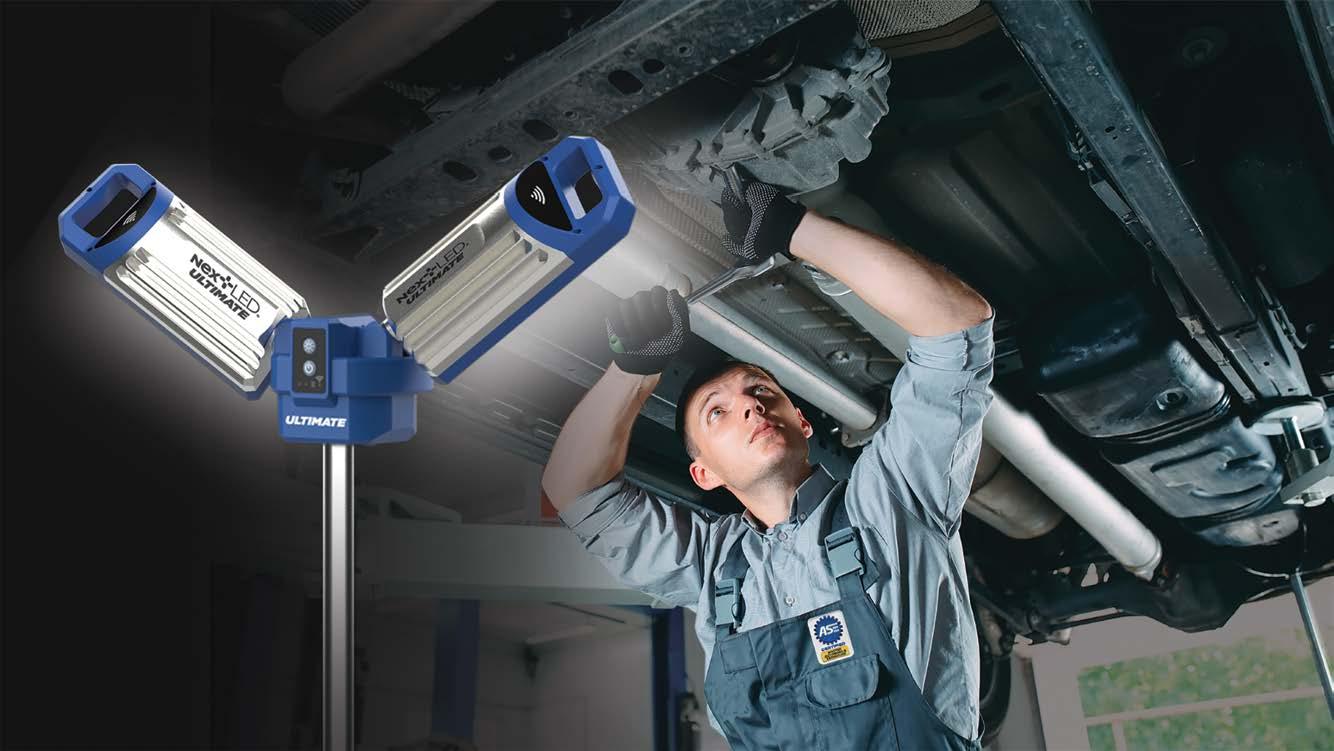
Source: ASE Education Foundation
Autel Energy, a global leader in EV technology, announced the opening of the Autel Energy Innovation Center, its new research and development campus where OEMs and strategic commercial partners can test the integration of third-party products with Autel Energy hardware and software to ensure the highest standards of performance and quality before entering the market.
The two-story, 9,424-squarefoot facility in Anaheim, CA, is the product of years of planning and development at Autel Energy and aims to revolutionize the way new products are brought to market in terms of speed, efficiency and quality control.
“The Autel Energy Innovation Center represents our commitment to our partners’ success, as well as to the success of the EV industry in the U.S. and abroad,” said Frank Li, chairman of Autel Intelligent Technology Corp., Ltd., the global leader in automotive intelligent business and the parent company of Autel Energy. “We are extremely proud of the effort our team has made to realize our grand
vision, and we look forward to the Innovation Center serving as a prized part of our operations on the West Coast.”

The Innovation Center will launch under the direction of Shane Long, CTO at Autel Energy. Long will shape the vision of the center to meet the burgeoning demands of the renewable energy industry in the U.S. The center
support engineers to the latest product features.


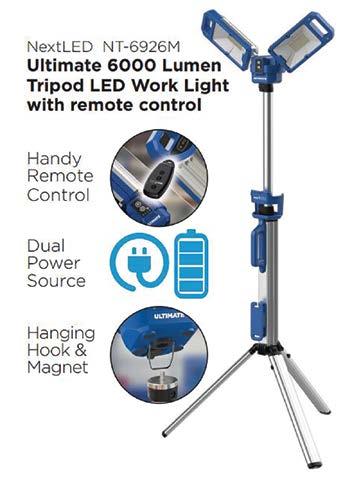
“I’m excited to invite our partners to visit us here in Anaheim,” said Long. “In addition to the latest product features, they will be able to learn about Autel Energy hardware and software installations, servicing, security and preventative maintenance. Our goal is to create a smooth transition from initial onboarding through the lifecycle of our products.”
Trainees will be able to earn certifications in the use and servicing of Autel Energy products upon completion of their courses at the center, Long added.
will provide a space for activities including product and vehicle integrations testing, as well as shed light on the performance, viability and scalability of products under development.
Plans for the site also include an executive briefing center for showcasing Autel products and technology platforms and a training center for introducing technical
The Autel Energy Innovation Center is located 12 miles from John Wayne Airport and in close proximity to Anaheim Stadium at 1355 S. State College Blvd., Anaheim, CA.
Source: Autel

has an unwavering dedication to providing superior lighting solutions and innovative designs tailored for both seasoned professionals and DIY enthusiastsSEMA Show Booth #35239



Collision repair instructors from across the country recently had the opportunity to attend a four-day training program at the new 3M™ Skills Development Center (SDC). Located in Saint Paul, MN, the multimillion-dollar, 15,000-squarefoot training center anchors 3M’s vision to provide comprehensive training to the collision repair industry.
“The automotive aftermarket is a very important segment of our business and people look to us as a leader in this industry,” said Dave Gunderson, president of 3M’s Automotive Aftermarket Division. “Being a leader doesn’t mean just selling the best products, but also responding to the needs of the industry and helping it grow.”
With a worldwide shortage of qualified technicians and increasingly complex vehicles being manufactured, 3M opened the SDC to bring awareness to the employment opportunities available in the industry, help instructors and technicians keep up with the latest technologies and ensure they are trained to repair vehicles properly.
The facility, located near the company’s headquarters, includes classrooms, a shop area with a 35-foot paint booth, workshop stations with electrical and air service, 12 welding stations and the latest equipment and tooling. Camera stations are set up through the classroom and shop areas to broadcast training sessions.
Each summer for the past 13 years, 3M has invited collision repair teachers to apply to its Collision Repair Academy Collision Repair Instructor Training program held at the former training center on the 3M Campus. Since then, nearly 250 instructors, representing 185 schools across North America, have attended. The classes, offered at no charge, are designed to help upskill instructors to be in the best position to teach their students.
To apply for the program, prospective attendees share information about themselves, their collision repair programs and why they’d like to attend. The 3M team then rates the applications based on specific attributes.
“We really want to invite wellrespected leaders who are impassioned about what they’re doing in their organizations and want to support their students,” explained
Gunderson. “We give priority to new teachers and instructors who have never attended before.”
This year, 32 instructors were asked to attend one of two four-day programs in late July and early August at the SDC.
3M instructors—Shawn Collins, Ryan Marrinan and Jason Garfoot— “trained the trainers,” using hands-on methods to reinforce key concepts supported by classroom theory and discussion. The program covered 3M-developed best practices in foundational body repair processes supported by OEM repair documentation in the areas
on OEM guidelines.
“We want them to know what they are doing really matters,” said Gunderson. “It’s not just that the car appearance looks good, but it’s repaired properly and safe to drive.”
“By introducing the Science of Why and explaining the reasoning, it allows them to understand and retain information so their behaviors change,” said Scharton.
Not only did they receive indepth training, attendees had an opportunity to bond with each other, Scharton said.
“It’s fun to see those connections and how they supported each other,” he said.
Part of the week also included a custom painting and masking competition using speedshapes.
As an I-CAR Sustaining Partner and Industry Training Alliance Partner, 3M works closely with the educational organization to develop and deliver courses that meet requirements based on defined knowledge and skill areas for different roles in the shop.
Adam Spah, application engineering manager at 3M. “While the pandemic slowed things down for a couple of years, our leadership team never wavered in their support of the team. They recognize the importance of continued skill development to the industry,” Spah said.
“We wanted this facility to be a destination to train technicians,” said Scharton.
The SDC will cater to a crosssection of students, including those entering the profession, as well as more experienced technicians and instructors.
A variety of classes will be offered, from fundamental skills new employees should know to more advanced training and upskilling.
By educating students and placing them in a collision repair facility, Gunderson said it’s exciting to see them realize they can build a career and make a really good income.
Students will have access to 3M instructors who are formally trained in their professions, articulate and have industry experience.
Scharton said their credibility as former collision technicians helps them connect with the students they teach.
of body repair tools and application techniques, panel removal and replacement, welding, corrosion protection techniques, aluminum substrate repair, dent repair methodology, paint preparation and masking, and paint finishing.
Jason Scharton, senior manager, Global Expertise Delivery for the 3M Automotive Aftermarket Division, said 3M instructors encouraged participants to push their skills, challenge their experience, advance their craft and learn from experts to expand their collision repair knowledge.

An important aspect of the program was teaching instructors how to approach the curriculum in their schools to engage students so they understand the material based on 3M’s unique training approach, “The Science of Why.”
Attendees were taught the “why” behind modern repair methods to absorb and retain practices that may vary from how things have been done over the last 30 years.
Historically, information has been passed down to technicians based on how things have always been done. Rather than teaching students to repair vehicles a certain way because someone said to, 3M explains the reasoning behind the repair process and the relevant importance based
3M also consults with OEMs to not only make sure the most up to date repair procedures are used, but also on how the training sessions integrate with their certified network requirements.
Founded in 1902, 3M was officially known as Minnesota Mining and Manufacturing Company until 2002. The American corporation manufactures a variety of products for multiple industries, including automotive, health care and consumer products. As part of the company’s mission to apply science to improve lives, 3M recognized the need to make an impactful contribution to the collision repair industry by building a world-class training facility.
Over the past several years, Gunderson has presented at a number of conferences, discussing how to encourage more people to join the industry.
“One of the biggest challenges is they just don’t know what they don’t know,” he noted. “We made this investment in the training facility to create an awareness of the opportunities available in the industry.”
From idea to completion, the path to opening the SDC has been a fiveyear journey led by project manager
“We look for what we call the ‘approachable expert,’ someone who can stand up, represent the science of why, and relate very comfortably with the technicians while speaking their language,” he explained.
3M plans to use the SDC as a test bed and learn from the model before scaling it in other major markets.
“This facility is hopefully a showpiece to allow us to do that,” said Scharton.
In addition to 3M’s other training centers around the globe, the 3M Collision Repair Academy offers online e-learning courses and videos. Plans include expanding the platform by adding virtual events and webinars.
“Our goal is to support the industry however and wherever they need it, whether that’s taking an online course to learn the process of using adhesive on a plastic repair or attending a live class at the SDC with a 3M expert to learn how to do a repair as successfully and safely as possible following OEM repair procedures,” said Scharton.
”Simply stated, we’re here to help,” concluded Gunderson.
Later this year, 3M will hold an industry grand opening of the SDC. For more information, visit 3MCollision.com/Learn or email 3MCollisionRepairAcademy@mmm. com.


In Bloomingdale, OH, Russell Achhammer teaches auto collision technology to students at Jefferson County Vocational School; 11 are male and five are female.
“The 3M training was important and provided me with the knowledge to learn the latest technology in repairing a variety of substrates and modern repair techniques and procedures,” said Achhammer, who has been teaching at the vocational school for six years. “The training and hands-on exercises gave me a lot of great ideas to help teach students.”
Achhammer plans to break down the lessons into smaller ones to educate students on modern repair techniques.
Instructor Chad Crum is in his second year of teaching at Tennessee College of Applied Technology (TCAT) in Knoxville, TN.
“Training is a necessity in our industry,” said Crum. “If repair technicians are not willing to evolve with the collision repair industry, they become obsolete and fall to the wayside.”
He said technicians should know better than anyone the importance of properly repairing damaged vehicles because lives are at stake.
“I attended the 3M training because I believe students need to learn these important procedures as soon as possible before bad habits are developed,” noted Crum.
“These procedures need to begin in our secondary and post-secondary learning institutions.”

Crum said TCAT President Kelli Chaney is fantastic about allowing him to attend training.
“At Tennessee College of Applied Technology Knoxville, we prioritize providing our instructors with relevant professional development opportunities,” said Chaney. “Through innovative training by 3M, we ensure that our college remains at the forefront of the latest technology advancements available to the industry.”
Bree Downs is in her 20th year of teaching automotive collision and refinishing technology at Seward County Community College in Liberal, KS. Despite its remote rural location, the industrial technology division prides itself on seeking out the newest technology and methods for students.
“With the way the collision repair industry is changing, training is very important to me so I can keep up to date with new materials and processes and offer the most knowledge I can to my students,” said Downs. “With the knowledge I gained at the 3M training, I will be able to teach my students the most current repair methods.”
Jeffrey Kastel’s education from 3M was his first opportunity to learn from master-level technicians. Currently in his third year of instructing at Amos Alonzo Stag High School in Palos Hills, IL, Kastel said 120 students will take his semester course this year.
He said the 3M instructor training provided him with ideas to better implement instructional practices.
“I was able to gain new understanding on proper procedures that meet the new industry standards,” said Kastel. “The experience I had during the four-day 3M instructor training was a huge help to enhance my own instructional practice that will ultimately help students on a careerready path in the collision repair industry.”
Anthony-James Hernandez and Mercedes Rodriguez teach at Lockhart High School in Lockhart,
TX. About 100 students are currently enrolled in the school’s four-year collision repair program.
Hernandez, the lead collision repair instructor, said it’s important to learn about new technologies and meeting the standard operating procedures (SOPs).
“Since we are no longer in the shop, we do not get to see or learn new vehicle technology,” said Hernandez. “3M training is by far the best training I have been to as an instructor and helps me with new and different ways to reach my students.”
In her third year of teaching at Lockhart, Rodriguez said industry training is vital for students.
“It encompasses more than just a trade,” she noted. “Industry training helps students gain practical skills and real-world experiences.”
The 3M course helped her teach students up-to-date skills, as well as how to use new tools that aid in facilitating and speeding up the repair process.
Rodriguez brought back samples of what she learned during the 3M experience to show students how important it is to learn from mistakes. “Hands-on experience is not only important but vital to student success,” she said.
With seven states taking steps to require all new passenger vehicles sold to be zero emissions by 2035, experts are looking closely at the cost and environmental impact of these cars, including their production, operation and disposal. The states include California, Massachusetts, Maryland, New Jersey, New York, Oregon and Washington.
Dr. Robert Freerks, a consultant in fuels and lubricants at RLF Enterprises, shared information during a webinar hosted by the Specialty Equipment Market Association (SEMA) about whether the current infrastructure can support the widespread adoption of electric vehicles (EVs) to meet the goal of net zero emissions by 2050.
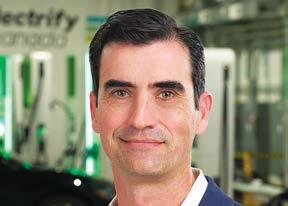

“These systems store power when electricity costs are low and supplement power during high points of consumption, helping to stabilize costs and help maximize renewable energy use,” explained Barrosa.
“To make a ton battery, which goes into a vehicle like a Tesla, you need to move between 700,000 and 1.3 million tons of earth,” he explained. “That is an incredible impact on the environment to move that much earth to get the raw materials to make a single battery.”
When evaluating the environmental impact of an EV, Freerks recommended taking a life cycle assessment, which includes looking at all energy sources and greenhouse gas emissions associated with the total lifecycle of a product.
In California, for example, Freerks said, EVs have about a 40% reduction in greenhouse gas emissions compared to an ICE vehicle. However, if that same
battery recycling and disposal.
“The number of spent batteries that are going to be generated by these EVs is skyrocketing now and it’s going to get worse in 2040 if mandates for EVs become more prevalent,” said Freerks.
Infrastructure changes will need to be made to accommodate EV growth. This includes the availability of convenient charging stations. Electrify America is taking steps to meet this challenge by investing more than $2 billion in EV charging infrastructure and education.
Barossa said Electrify America and Electrify Canada expect to double the number of chargers on the combined networks by 2026. He estimates
“Everyone thinks of them as zeroemissions vehicles but… they have emissions from all of the energy that went into producing them, as well as the energy required to make the electricity that drives them,” said Freerks, who has a Ph.D. in synthetic organic chemistry.
A main challenge, according to Freerks, is the electric grid is not set up to deliver the huge amounts of power needed to keep an EV fleet moving.
“It’s going to be an incredibly expensive increase in our electrical demand and supply to make an EV market work,” he said. “We’re not going to get there. There’s no way we are going to have zero emissions by 2050 in any realistic sense.”
However, Electrify America points to studies showing grid generation capacity is more than capable of meeting charging needs even with high EV market growth.
“There are innovative ways to support the electricity needs of the fast-growing EV industry—particularly through battery energy storage,” said Robert Barossa, president and CEO of Electrify America.
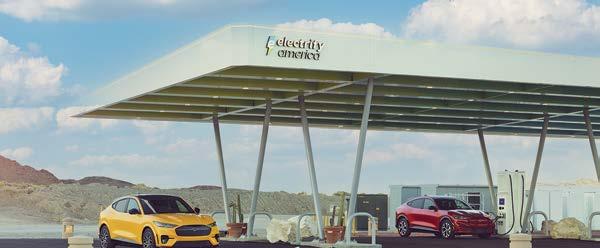
As of 2022, Electrify America installed on-site, behind-the-meter battery energy storage systems (BESS) at more than 160 DC-fast charging stations around the country, including over 90 installations in California.
Compared to an internal combustion engine (ICE) vehicle, Freerks said the raw materials needed to produce an EV are massive. While conventional cars use aluminum and iron as the primary source of their metals, EVs and their batteries rely on huge amounts of precious metals, such as copper and lithium.
“Copper is becoming in short supply and an EV has four times as much copper in it than an ICE vehicle,” he noted. “We are going to be short of a lot of raw materials that are going to make these EVs producible.”
Although there is a relatively low volume of lithium in an EV, Freerks said the price has quadrupled over the last several months. The annual average U.S. lithium carbonate price in 2021 was more than double the previous year, according to research from a U.S. Geological Survey, Mineral Commodity Summaries, in January 2022.
“Metal costs are going up quickly and are going to increase the cost of batteries, and therefore, the vehicles that use them,” he said.
This is partly due to the reliance on raw materials from other countries.
“We’re going to end up relying on other countries… for a lot of the raw materials that make our transportation system work,” observed Freerks.
Along with the seven states, Great Britain aims to go all-electric by 2035.
“If they did, they would need 7.2 million battery EVs, or about 1% of the total vehicle fleet,” said Freerks. “I can’t see that happening. It would take almost all the raw materials in the world today to make one country all electric.”
In addition to raw material shortages and rising costs, Freerks said EV lithium-ion batteries have a massive environmental impact.
car is operating in a state like Colorado, where there is a lot of coal used to make electricity, greenhouse gases are higher than a gasoline vehicle.
“There are always greenhouse gas emissions for any energy source that is produced,” explained Freerks.
Even a wind farm or solar field, for example, emits greenhouse gas emissions.
“There are ways that we can get that down to zero or even negative, but it takes a lot of effort and essentially a lot of costs to get there,” he added.
Although reports show battery costs are declining and expected to dip below $100 per cell, and advances in battery types and chemistries occur almost daily, Freerks contends the opposite.
He forecasts battery costs to continue to rise and be a significant cost of EVs moving forward due to the major shortage and cost for materials.
At the same time, battery risks remain high. Vehicle owners and manufacturers will have to contend with EV batteries catching on fire if they aren’t handled properly. According to Battery University, they must be put out with a foam extinguisher, CO2, ABC dry chemical, powder graphite, copper powder or sodium carbonate. If the fire can’t be extinguished, they need to burn in a controlled way.
There are also questions regarding
approximately 90% of Californians live within 15 miles of an Electrify America fast charger, with 96% located within 25 miles.
“When evaluating alternative energy sources and uses, one has to consider all aspects of the problem, not just the localized issues such as direct emissions from a vehicle,” noted Freerks. “EVs may not directly emit greenhouse gas emissions as they are battery-powered, but all the other aspects of battery electric vehicles have associated emissions that are a part of the global environment even if not directly part of the local environment.”
Although there are challenges transitioning to EVs, many organizations are proponents of moving forward with the widespread adoption to protect air quality and deal with the impacts of climate change.
“Transportation is a major driver of harmful emissions entering the air,” said Barossa. He estimates that before the pandemic, up to 55% of total nitrogen oxide emissions were caused by the transportation sector.
“Research shows that an EV is typically responsible for lower levels of greenhouse gases (GHGs) than the average new gasoline car,” he said. “Through more widespread EV adoption, a more sustainable world with cleaner air is possible.”
Read the full article on Autobodynews.com.
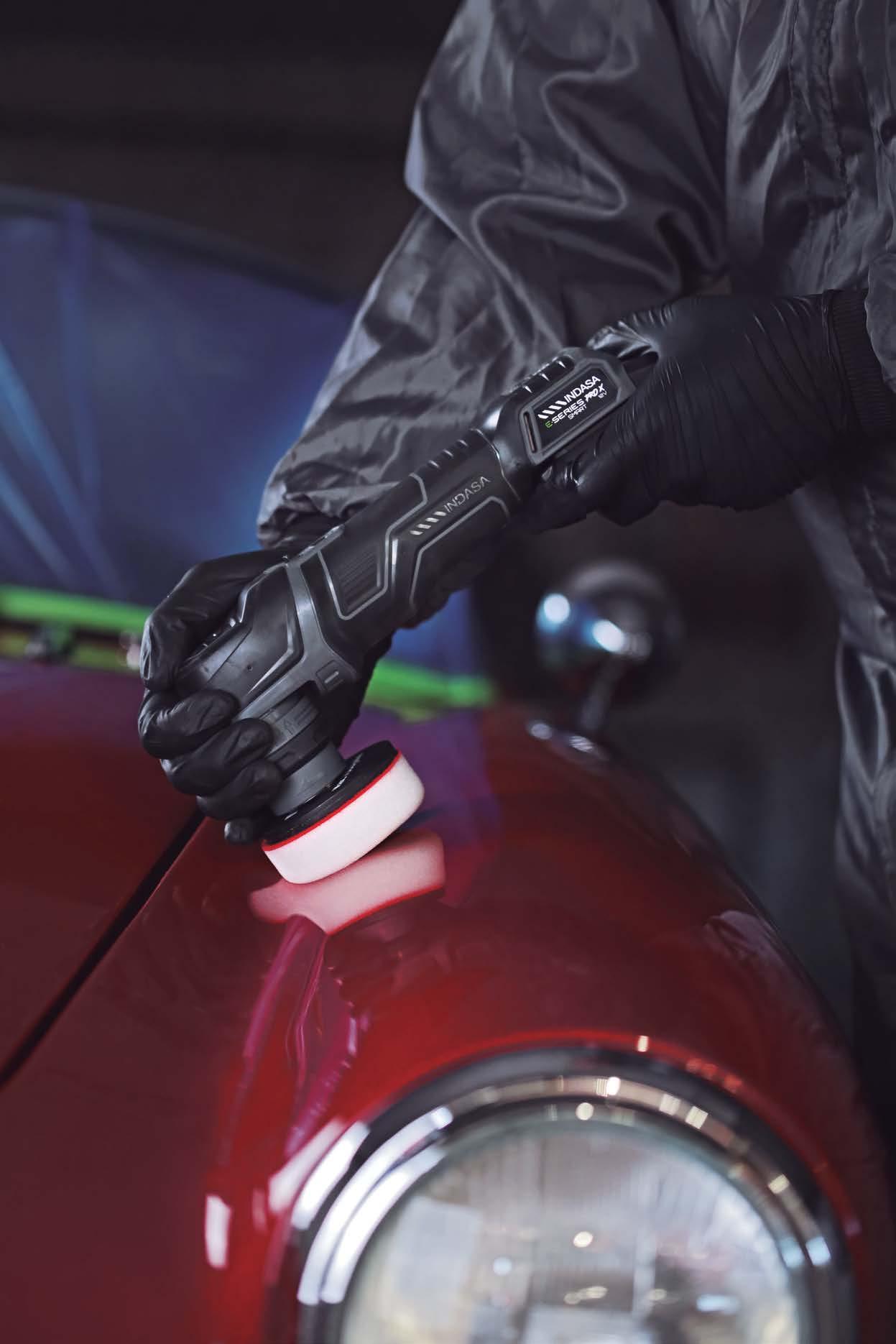

Washington
Classic Collision, LLC, announced a new closing Aug. 18—the acquisition of Lakeside Collision Kirkland in Kirkland, WA.
For more than 60 years, Lakeside Collision Kirkland has been a valuable pillar in the community.
“Our motto has been to take the pain out of an already painful situation, and we believe that Classic Collision will uphold that motto,” said Tim Pugmire, former owner of Lakeside Collision Kirkland.
“We are excited to welcome the Lakeside Collision Kirkland team to our ever-growing Classic family! We are thrilled for the addition of our fourth location in the Washington market. We recognize the need for exceptional service standards and look forward to providing more options to our customers in Washington,” said Toan Nguyen, CEO of Classic Collision.
Source: Classic Collisionafter thieves discovered that many of them lacked electronic immobilizers.
Six of the 20 models with the fewest claims for whole vehicle theft are electric vehicles, and six others are manufactured by General Motors.
Typically, electric vehicles are stolen less frequently than other models. This may be because they are often parked overnight in well-lit and comparatively secure areas for charging.
Several high-end Volvo models also rank among the least-often stolen 2020-22 models, while two variants of the Infiniti Q50 appear among the most-stolen vehicles. The Q50 has been a perennial feature on the most-stolen vehicle list since model year 2014 for reasons that remain a mystery.
By looking at claims per insured vehicle year, HLDI’s theft reports allow people to compare the relative risk of each vehicle. In contrast, other most-stolen-vehicle lists report raw numbers of thefts and are therefore dominated by the most common vehicles on the road.
HLDI’s whole-vehicle theft report differs from its standard theft report, which looks at all theft claims, including those for stolen vehicle
parts or for items taken from a vehicle.
To isolate whole-vehicle claims, HLDI compared the amounts paid for total losses under collision coverage, which is generally the residual value of the vehicle, to payments associated with each theft claim. Theft claims were considered to represent whole-vehicle thefts when the amount was around the same as what would be expected for a total loss under collision coverage for the same vehicle of the same age.
As with all HLDI analyses, the results in the whole-vehicle theft report are adjusted to account for the effect of demographic and geographic factors.
Most-Stolen MY 2020-2022
Vehicles Ranked by Relative Claim Frequency (Average=100)
Dodge Charger SRT Hellcat, 6,128
Dodge Charger HEMI, 2,197
Infiniti Q50, 878
Dodge Challenger, 766
Land Rover Range Rover 4WD, 611
Kia Sportage, 479
Land Rover Range Rover Sport 4WD, 460
Kia Sportage 4WD, 415

Honda CR-V 4WD, 409
BMW X6 4WD, 361
Kia Rio, 359
Kia Forte, 357
Ford F-350 SuperCrew 4WD, 349
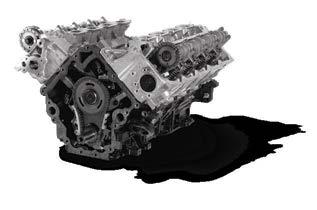
BMW X7 4WD, 338
Ford F-250 SuperCrew 4WD, 337
Honda Accord, 306
Ram 3500 crew cab long-wheelbase 4WD, 306

Infiniti Q50 4WD, 287
Nissan Maxima, 284
Honda CR-V, 270
Lowest Claim Frequency for WholeVehicle Theft, Ranked by Relative Claim Frequency
Tesla Model 3 4WD, 3
Tesla Model Y 4WD, 3
Volvo XC90 4WD, 6
GMC Acadia 4WD, 7
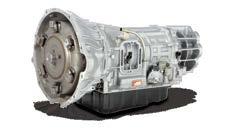
Tesla Model X 4WD, 8
Volvo XC40 4WD, 8
Tesla Model 3, 9
Chevrolet Trailblazer 4WD, 10

Lexus UX 250 hybrid 4WD, 10
Volvo XC60 4WD, 10
Buick Envision 4WD, 11
Cadillac XT5, 11
Chevrolet Traverse 4WD, 12
Land Rover Defender 4WD, 13
Buick Encore GX 4WD, 14
Nissan Leaf, 14
Mercedes-Benz GLE-Class, 15
Subaru Ascent 4WD, 15
Tesla Model S 4WD, 15
Volvo XC60, 15
Source: HDLI
As a family owned and operated dealership since 1909, Glenn E. Thomas Dodge has proudly been serving Chrysler, Dodge, Jeep and Ram customers for 105 years.
We have a long history of providing great service with honesty and integrity.
FLEXIBLE SANDING SHEETS & DISCS
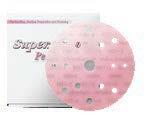
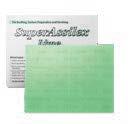
K-240 to K-800 PRIMER / PREP SANDING
K-800 to K-1200 BASECOAT / BLENDING

K-1000 to K-1500 TOPCOAT / FINISHING
Award winning flexible abrasives for scuffing, blending, basecoat, topcoat and more!
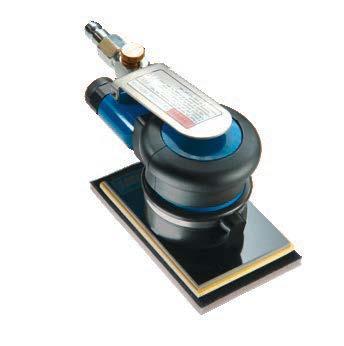


FLEXIBLE POLISHING SHEETS & DISCS

K-2000 to K-3000 TOPCOAT / POLISHING
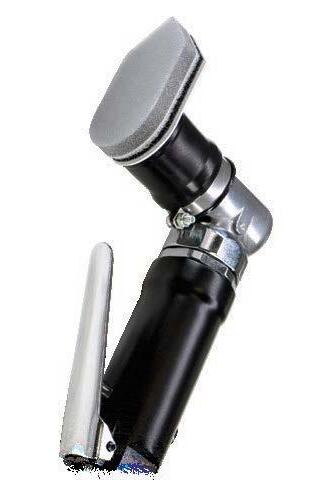



TOUCH-UP SANDING
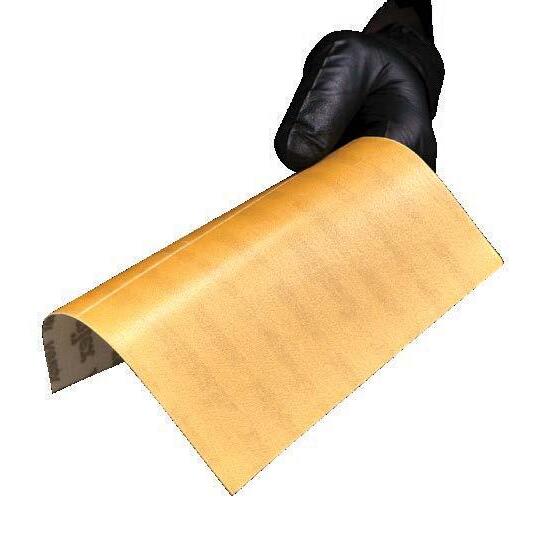
K-800 to K-1200 REMOVE RUNS & SAGS
K-1200 to K-3000 REMOVE NIBS & TEXTURE
Eliminate imperfections, not your paint job. Paint correction without the mess of water.
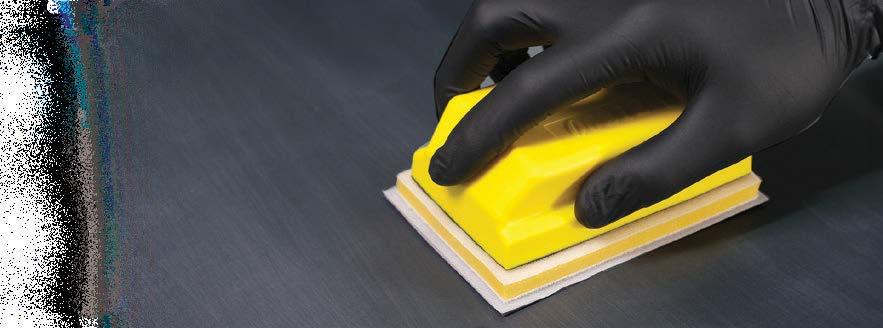
SEE US AT SEMA 2023
BOOTH #33131
Utilize the same technologies as Super Assilex to reduce buffing times by 50% or more! Available


Since 2012, I have been walking the floor of SEMA along with my partner in crime, Kye Yeung, looking for new tools and products. We would purchase the items and test them before considering them for “Kool Tools of SEMA.” You can view past presentations at www.SCRS. com.
Due to health issues and the pandemic, I relinquished everything to the SCRS Education Committee. I will still contribute, but I wanted to do something different. So here is my new project: “Must See Kool Tools of SEMA 2023.” Some are new, some are old and some are additions.

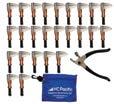




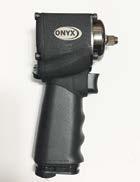
that combines the catalyst with the product in a spray can. The catalyst is activated by moisture in the air. Thusly, the spray can have a threeyear shelf life. There are five colors of DTM primers—two green, white, gray and black. It is epoxy 2K paint, the closet product to factory applied E-coat (electrodeposition primer).


The Leister heat gun, set up for plastic welding, does not use ntrogen gas and shop air. The company is more than 70 years old and a leader of plastic repair in Europe. Using the heat gun, I was able to repair a broken side mounting tab just as easy as using a nitrogen welder. It is a very affordable piece of equipment that most shops can afford.

The new HINGE tabs bring versatility and strength previously not possible for using GPR to correct pillars, dog legs, door edges, seams and body lines. Flexibility of the tab wings allow for almost infinite possibilities and promote parallel alignment for strong glue pulls on unpredictable damage.
The shape of the jaws allows the pliers to grips rounded-off fasteners, nuts and smooth pipes without slipping. The jaw design fits hex, round and square shapes. It works as a “backer wrench” for damaged fasteners or when a second wrench is handy.
The Clecos pictured are used when holes are needed for fasteners. Use the ¼ Clecos for a 6.5-millimeter hole as recommended by Ford.
The impact wrench is small and lightweight—only 3 pounds—but it has 500 foot-pounds of torque, great for getting into tight spaces.
The lateral tension tool beam design allows lateral tension to be placed near the dent. By placing tension outward of the dent, the tension reduces the pressure created by the dent to allow for easier movement of the metal. In other words, the LTT beams will create the ultimate setup for metal flow on both sides of damage, allowing technicians to have the damage area completely free and uninhibited to work.
The drill set TS20 (1/16th to ½ drills). You will notice the end of the bit is similar to a step drill. When drilling in to steel, it is recommended to start with a small bit and keep increasing the size bit until you use the desired diameter. Well, with these bits, it is not necessary to use multiple drill bits, just one. Granted they don’t come with a lifetime warranty offered by the tool trucks, but these sell for a third of the price.
Wisespray developed DTM epoxy primers with a new technology
These locking pliers are very different than most other locking plier brands. These pliers use a pull-style trigger for a quick and easy one-handed release that won’t pinch your fingers like most other brands. I discovered this company and made them a Kool Tools of SEMA. They have helped me out with tools at a discounted price for all the apprentices I support. Check them out when you are at SEMA.
The 4Plastic repair system, distributed through Kent Automotive, is one of the best new products for duplicating factor textured finish on plastic parts. A water-based product using a supplied adhesion promoter, primer and finish is all in one system. Comes in black and a color-matching gray (tint and color matching cards).
MRO Tools’ plier-operated KSG series is ideal for bonding, gluing and sealant operations. These clamps work well with all types of material. Jaw depth is 1 inch, material thickness 0-1/2 inch. Clamping force is 12-25 pounds. You will use these clamps instead of pliers. The set of five clamps is about the same price, available on Amazon, as 7-inch locking pliers.



I purchased the Fast Puller from GUNIWHEEL to help train the entry level technicians I am working with in their teardown learning module. The students use this tool to pull out damaged sheet metal for teardown access. The tool has more than 500 pounds of pulling pressure and is extremely safe to use; I added a safety cable to mine. Being lightweight and portable, it can be used anywhere in a shop as long as there is a flat surface and shop-supplied air. I also use it for added training with the KECO Glue-on Tab System to pull rocker and quarter panels—the student first needs to show proficiency with the KECO Glue-on Tab System.
This tool is not at SEMA, but available from Amazon. The Houshan Edge Pliers are a great addition to a collision tool box. Lips on doors, fenders, hood and deck lids that have a raised edge or surface can be flattened with very little effort with these uniquely designed pliers. I am able to repair the lips without using a hammer and dolly. The price is under $30.
A number of these tools will also be part of SCRS’s Kool Tools of SEMA 2023. I will scour the floor of SEMA this year looking for tools and equipment that will help speed up and/or improve the quality of repairs in your shop.


The KECO GPR system is not an add-on to a stud welding system... it is a complete replacement for stud welding.
it-yourself shop that Barry Marshall and Jesse Maple opened Aug. 28. People can make an appointment and pay for the space while having access to the shop’s toolbox and car lift.
“We’re looking forward to the opportunity to meet with people, grow the community here and let them work on their own cars,” Marshall said.
Both of them had the idea for a workshop like this brewing in their heads before they connected in the Pocatello Car Club Facebook group.
Marshall was deployed in Iraq for two years and while there, he would work on his vehicle in DIY shops on military bases.
“Coming back, I was working on my own car and (I thought), I wish I had a lift, all the (equipment and) just the spot to do it,” Marshall said.
Meanwhile, Maple was working at various mechanic shops around Pocatello. He opened a mobile mechanic service, which he still operates, and said people often always asked him the same question.
“Can we come use your lift?” Maple recounted. “I could come work on my stuff and I’ll even pay you for some
space.”
Up until now, Maple didn’t have any space he could offer people, but two months ago, he met Marshall in the Facebook group and they decided to bring their visions together.
Over the last couple months, they worked on gathering tools and other equipment. Then as Marshall was driving down Yellowstone Highway, he noticed the space available and found it was within their price range.
“We jumped on it,” Marshall said.
Now when customers drive behind the UPS Store and come to U Turn Garage for an appointment, they’ll find a spacious air-conditioned garage with the lift in the middle, alongside under hoist safety stands that also help stabilize the car. Once their car is lifted, they can turn on instructional YouTube videos with the workshop’s television and get to work on their car.
To book an appointment,
customers can go to their website and choose a date and time that works in their schedule. If they need parts for their vehicle, they can get them delivered right to the workshop. If they need a part while working on their vehicle, it can be delivered to the shop at a discounted rate, as long as it’s before 5 p.m.
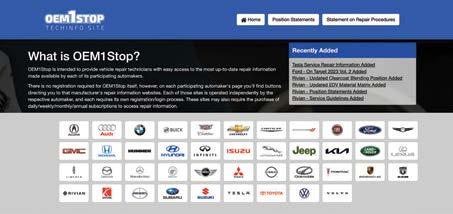
“We can have basically anything delivered on site,” Maple said.
The rate for booking an hour with the lift is $40, without the lift is $30 and veterans and first responders get 15% off. Marshall and Maple say their costs end up being cheaper than hiring a mechanic and may be faster too.
“Most shops around here or at least two weeks out,” Marshall said. “If you have the time, (our fee is) quite small compared to what it would cost, even if it took you twice as long, to do what a mechanic can do.”
People who want to call the shop can reach them at 208-252-9333.
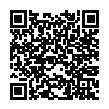


The most versatile prep station available today, the Mobile Work Station® is per fect for adding capacity and exibilit y, while maximizing your workspace and productivity.

This por table prep station provides a clean, enclosed area for prepping & limited high quality nishing any where in your shop — instantly
Runs on standard 110V Power

No ventilation or air make -up


Reduces energy use


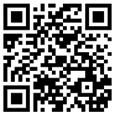



Keeps air in your shop clean and clear of overspray
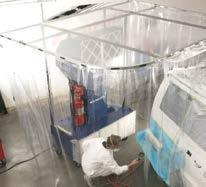






AAA’s Your Driving Costs (YDC) has been a reliable data source for the expenses associated with owning and operating a brand-new vehicle for more than seven decades.
Based on the latest figures, the average cost of owning and operating a new vehicle in 2023 has increased significantly, with an annual expense of $12,182 or a monthly cost of $1,015. This is a sharp increase from 2022 when the average yearly cost was only $10,728, or $894 monthly.
The overall average manufacturer’s suggested retail price (MSRP) of the new vehicles in the 2023 YDC study is $34,876. This is $1,575 (4.7%) higher than last year.
“It’s important for car buyers to clearly understand the costs associated with owning a new vehicle,” said Greg Brannon, AAA’s director of automotive research. “Due to global supply chain issues and constrained inventory of new vehicles, car prices rose
dramatically in 2022. And while the situation continues to improve, the spillover effects are keeping prices high.”
owning a new vehicle is also likely driven by:
• Depreciation, which is the difference between the car’s value upon purchase and the value of the car when sold. According to this year’s YDC projections, new vehicles are expected to depreciate by an average of $4,538 per year over five years of ownership, up 24% over 2022.
• The jump in new vehicle prices (up almost $1,600) compared to used vehicle values that have experienced a decline in the past year.
likely accounted for by higherthan-expected inflation, according to the U.S. Energy Information Administration (EIA).
It is important to note MSRP does not always correspond to a consumer’s actual purchase price and may vary depending on demand. Furthermore, a higher sticker price directly impacts finance costs, with this year’s vehicles boasting an average annual finance charge of $1,253, a staggering 90% increase from the previous year.
The change in the annual cost of
• Automakers across the board have focused on producing more oversized, luxurious, and expensive vehicles, loaded with extra features that bump up prices even more.
Compared to last year, one of the higher annual cost categories was fuel, but this year’s average cost per mile has decreased by roughly 2 cents per mile. It’s worth noting the cost of charging EVs has actually increased, by almost 2 cents per kWh over last year, from 13.9 cents per kWh to 15.8 cents per kWh. The increase is
Given their size, fuel economy and prices, it should come as no surprise that ½-ton pickups have the highest average driving cost among all vehicle categories covered in the YDC study. Interestingly, the pickup truck market has slowed over the last 12 months as gas prices trend high and financial costs climb. Pickup trucks excel at hauling and towing, although many buyers do not use them for these purposes. Potential buyers should remember the unique capabilities of pickups come at a high cost of more than $1 per mile.
“The once popular pickup truck is now seeing a slight decline in demand as these vehicles have become increasingly expensive, rivaling the price of many luxury cars,” said Brannon. “As interest rates continue to climb, this adds a layer of expense per month that consumers should consider when shopping for their next vehicle.”
Source: AAA
• 7 Free I-CAR classes for the entry level technicians

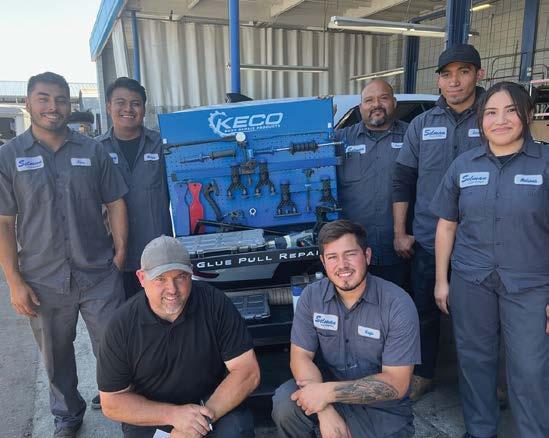
• A set of tools
• Best practices documents based on OEM procedures to help standardize the repair (also available in Spanish)
A. Best practice for Vehicle Tear Down
B. Best practice of Corrosion Protection
C Best practice of Personal Protection
D. Best Practice of Shop and Vehicle Safety
E. Best Practice for Single Sided and Two Sided Bumper Repair
F. Best Practice for Understanding Vehicle Measuring
G. Best Practice on Using Glue On Dent Repair
H. Training manual for Teaching the apprentice these Best Practices
For more information, email: Toby Chess— tcspeedster@gmail.com
“Due to global supply chain issues and constrained inventory of new vehicles, car prices rose dramatically in 2022. And while the situation continues to improve, the spillover effects are keeping prices high.”
Schaffer “Keco System & their in-house training has accelerated the dent removal process to the
that we
give all 5 techs, medium size dents with most being metal finished”


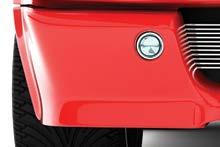
Autonomy, a national EV subscription company, and EV Mobility, LLC., an EV car-sharing platform, have entered into an agreement whereby once certain conditions are met Autonomy will acquire the technology, assets and customer accounts of EV Mobility. The acquisition will accelerate flexible (hourly, daily, weekly, monthly and yearly) access to an EV to a broader market by making an EV available to anyone with a valid driver’s license, credit card and smartphone.
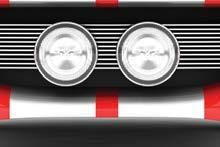

Autonomy has been providing a growing fleet of vehicles to EV Mobility over the last 12 months. EV Mobility operates a profitable, B-to-B car-share business that partners with high-end property owners and luxury hotels to provide flexible (hourly/ daily) access to an EV as an amenity to their customers. The hotel/ property owner covers the monthly cost of the vehicle, insurance and charging infrastructure. Hourly usage fees are all processed by the customer directly in the EV Mobility app, with a revenue split between the property owner and EV Mobility.
Source: Autonomy

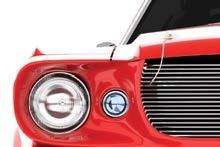
As the leading organization working to solve the technician shortage, the ASE Education Foundation engaged noted automotive expert and ASE spokesperson Bogi Lateiner to deliver her presentation, “Revving up the Diversity: Shaping an Inclusive Future in Auto Repair High School and College Shop Programs” at the recent ASE Education Foundation instructor’s conference.
Before a standing-room-only crowd, Lateiner gave a compelling speech that focused on how to develop new initiatives to create a culture of inclusiveness in schools and the workplace.
“We want to thank Bogi for providing such an interesting and inspiring presentation,” said Mike Coley, president of the ASE Education Foundation. “Instructors have incredible influence on students. Helping instructors create an inclusive environment for both male and female students attracts more and better students which translates into more entry-level technicians.”
Lateiner’s presentation started with a role-play featuring two male instructors as an automotive instructor and female student. The female student was trying to talk her way into an automotive course while the instructor was trying to talk her out of it. Although humorous, it hit home on how hard it can be for female students to be accepted into an automotive, collision or truck program.
Some of the key points Lateiner emphasized in working with both male and female students included:
· Treat them the same. Have the same expectations of work to be accomplished and knowledge to be gained. Do not “dumb down” skills for female students because of perceived strength or knowledge differences. A set of brakes doesn’t care what gender is changing them.
· Do not compare. Don’t tell the male students that the female students are showing them up. Comments like that create more of a distance between male and female students and places
unreasonable expectations on the female students.
· Create an inviting environment for everyone. A large part of Lateiner’s presentation was about the “automotive club.” As Lateiner explained it, “We are the club,” and then explained, “that nobody wants to be a part of it. That needs to change if we want to solve the technician shortage.”
“Often viewed as being sensitive, the younger generation is not necessarily sensitive, but asks for what they want and need,” said Lateiner. “In this hiring environment, employees have more power. Asking to be treated with respect, to be trained and provided with a career path while working in a collaborative environment isn’t being sensitive. It’s what every employee should have. Change starts with the instructors. They have the power to create and set the expectation of a good work environment that their students can then take to the workplace.”

Source: ASE


The National Highway Traffic Safety Administration (NHTSA) revised its stance on Massachusetts’ “right to repair” law, saying Aug. 22 it “strongly supports” right to repair and may have found a way to allow independent repairers access to vehicle data without compromising the safety of that data.
The letter came a bit more than two months after NHTSA’s last comment on the subject. On June 13, it sent a letter to 22 automakers telling them not to comply with the state’s Data Access Law, which had finally gone into effect June 1—2.5 years after being approved by voters in November 2020. In that letter,
exploit vulnerabilities at scale to access multiple vehicles, including, importantly, when vehicles are driven on a roadway. Such a short-range wireless compliance approach, implemented appropriately, therefore would not be preempted [by the federal Vehicle Safety Act.]”
NHTSA asked state officials to confirm a solution allowing wireless access when in close physical proximity to the vehicle would be compliant with the state law.
NHTSA also said, based on its discussions with the state, there is a common understanding that implementing a secure open access platform, as required in the law, is not yet available, and that vehicle manufacturers may need time to develop and test that technology, but
data, procedures and prescribed tools to accomplish a proper repair.”
Two organizations—the Auto Care Association and CAR Coalition— that have long supported right to repair laws at the state and federal levels, including Massachusetts’ law, commended NHTSA for revisiting its position, but said more needs to be done.
implement the Data Access Law safely and promptly. We look forward to the auto manufacturers’ compliance with the law.”
Under the state law, such a platform might use cellular, Wi-Fi and Bluetooth. The association said it does not support a Bluetooth solution to allowing access to that data.
“Short range wireless communication does not create the level playing field expected by the voters of Massachusetts,” it said. “The Auto Care Association looks forward to the opportunity to continue the discussion on a viable solution to implement the law that protects both drivers and their security.”
NHTSA said it had “significant safety concerns” with allowing open remote access to vehicle telematics, as required by the law.
In the Aug. 22 letter, addressed to Massachusetts Assistant Attorney General Eric Haskell, NHTSA said it has been working with the state’s Office of the Attorney General, as well as the U.S. Department of Transportation and other federal partners, to identify a solution: giving independent repair facilities wireless access to a vehicle from within close proximity, without providing longrange remote access.
Vehicle manufacturers could use short-range wireless protocols, such as Bluetooth, to allow the vehicle owner or an independent repair facility to access all “mechanical data,” as defined by the law, for that individual vehicle.
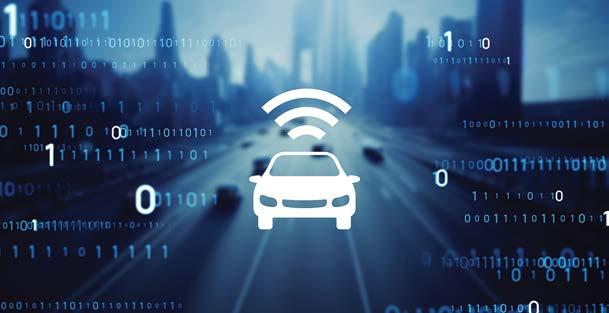
“In NHTSA’s view, a solution like this one, if implemented with appropriate care, would significantly reduce the cybersecurity risks—and therefore the safety risks—associated with remote access,” the letter said. “Limiting the geographical range of access would significantly reduce the risk that malicious actors could
NHTSA is open to continuing to work with the state and other stakeholders on that option.
In July, the Society of Collision Repair Specialists (SCRS) and the Alliance for Automotive Innovation, a trade group representing automakers, along with the Auto Service Association, signed a pact stating independent repair facilities shall have access to the same diagnostic and repair information automakers make available to authorized dealers.

Aaron Schulenburg, executive director of SCRS, said he is not certain what NHTSA’s concerns or comments surrounding Massachusetts’ law mean to the repair process, or that they have any direct impact on the pact signers’ perspective at this point.
“From our experience, independent collision repair facilities are not currently struggling to gain access to the data or tools they need to fix the vehicles properly,” Schulenburg said.
“What collision repair businesses do struggle with today are insurance claim settlement practices that place economic pressure on consumers and independent businesses and discourage the use of available repair
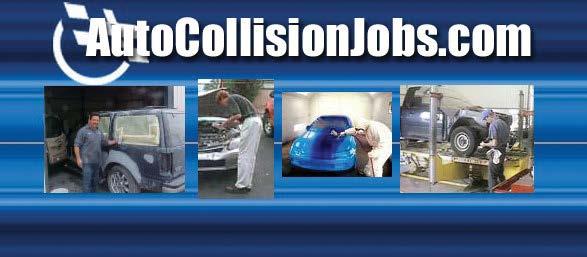
“The Auto Care Association is gratified by NHTSA’s acknowledgement the Data Access Law is not preempted by the federal Vehicle Safety Act and by its latest statement that NHTSA strongly supports the right to repair,” the Auto Care Association said in a statement. “The Auto Care Association further supports Attorney General Andrea Joy Campbell’s stalwart efforts to ensure that vehicle manufacturers
“After three years, it’s more than past time the will of the voters be recognized and that Massachusetts consumers have access to their vehicle data,” said Justin Rzepka, executive director of the CAR Coalition. “We thank NHTSA for finally agreeing that data can be shared safely with car owners but their solution is wholly inadequate and is no substitute for a federal vehicle right to repair law. Vehicle owners throughout the country deserve protections that will safeguard their rights and prevent a patchwork of state regulations.
“A short-range wireless compliance approach, implemented appropriately... would not be preempted [by the federal Vehicle Safety Act.]” NHTSA




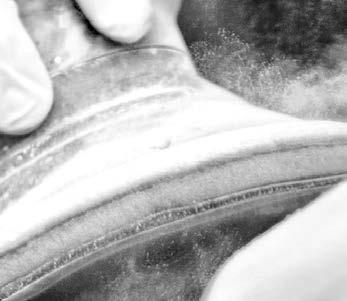


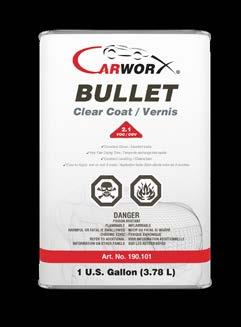

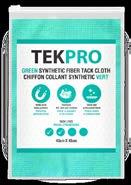
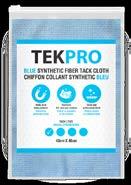

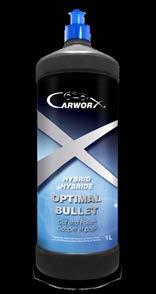




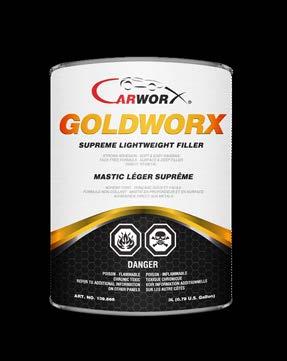

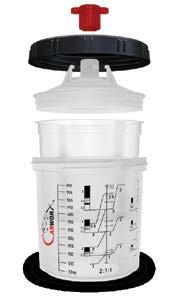
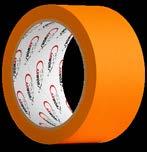




Electric vehicle makers Tesla and Rivian both sent letters of support to the signers of a “right to repair” pact between independent automotive repairers, collision repair experts and automakers.
In July, the Automotive Service Association, the Society of Collision Repair Specialists (SCRS) and the Alliance for Automotive Innovation signed the pact, affirming a 2014 national agreement on automotive rightto-repair stating “independent repair facilities shall have access to the same diagnostic and repair information that auto manufacturers make available to authorized dealer networks.”
In a letter to Congress outlining this major automotive right-torepair development, the signing organizations wrote: “This commitment was created with our mutual and valued customers in mind: vehicle owners. It affirms that consumers deserve access to safe and proper repairs throughout a vehicle’s lifecycle [and] it is built to last because it anticipates changes in automotive technologies and market evolutions.”
Now, Tesla and Rivian have pledged their support of the pact.
In a letter signed by Tesla Vice President of Public Policy and Business Development Rohan Patel, the EV maker said it agrees customers should have access to safe and proper repairs throughout a vehicle’s lifecycle, it agrees with the standards laid out in the pact and is happy to support the effort.
“Tesla’s mission to accelerate the world’s transition to sustainable energy includes empowering independent repairers to service electric vehicles as the global fleet grows,” Tesla’s letter said. “Through a comprehensive library of publicly available manuals and guides, Tesla already provides extensive information for independent and doit-yourself repairers. Current Tesla owners have numerous options to repair their vehicles.
“The commitment aligns with Tesla’s mission and our focus on supporting our customer’s rights while protecting their safety and security,” the letter concluded.
Rivian sent a letter signed by Chief Policy Officer Alan Hoffman, saying
it also agrees customers should have access to safe and proper repairs throughout a vehicle’s lifecycle and supports the independent repair community as provided in the pact.
Rivian said it owns and operates service centers and mobile service, and also offers several independent repair options for owners to service and repair their vehicles including a growing network of third-party Riviancertified collision centers, wheel and tire service through a certified national provider and third-party glass repair and ADAS calibration.
“Rivian supports third-party collision centers by providing access to Rivian repair manuals, service parts, tools and training— enabling them to safely repair Rivian vehicles,” the EV maker said. “Rivian intends to leverage similar approaches as we increase thirdparty and do it yourself options.”
Rivian said it also aims to lead in self-repair by developing features which enable third parties and individuals to increasingly perform service on the vehicles.
Source: Tesla, Rivian
Axalta entered into a partnership with Xaar, a leading manufacturer of drop-on-demand inkjet technologies, to introduce Axalta NextJet™, a next generation, sustainable digital paint technology for the transportation industry.
Digital paint, also referred to as overspray-free application, is an advanced paint application that will allow for precise paint placement. Through Axalta and Xaar’s patented technology, Axalta NextJet™ enables design flexibility for two-tone vehicles and allows customers to create patterns, details and images in a sustainable way.
The award-winning digital paint coating technology also eliminates masking and reduces labor, energy and waste while increasing productivity and efficiency rates. This can contribute to a 30% reduction in CO2 emissions and significant cost savings for twotone vehicle manufacturers. The combined technology solution is being tested with customers and could be in production as early as 2024.
Source: Axalta
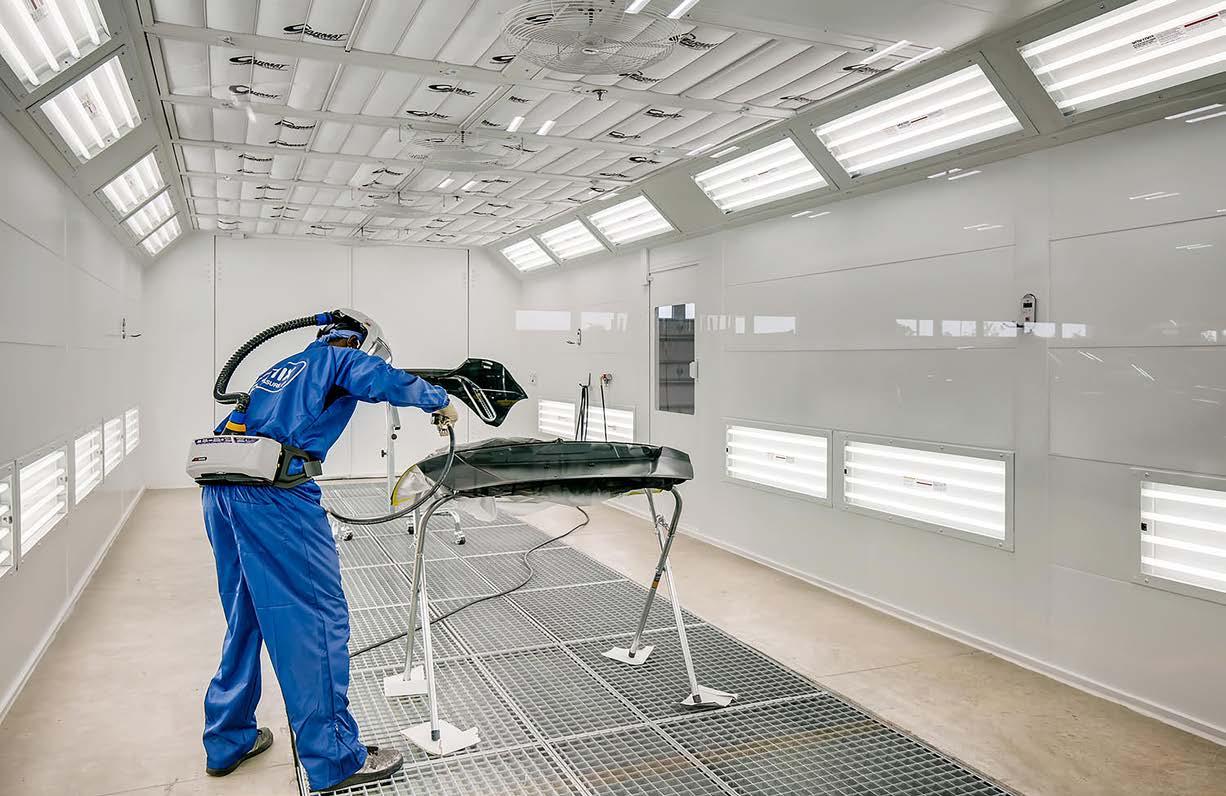
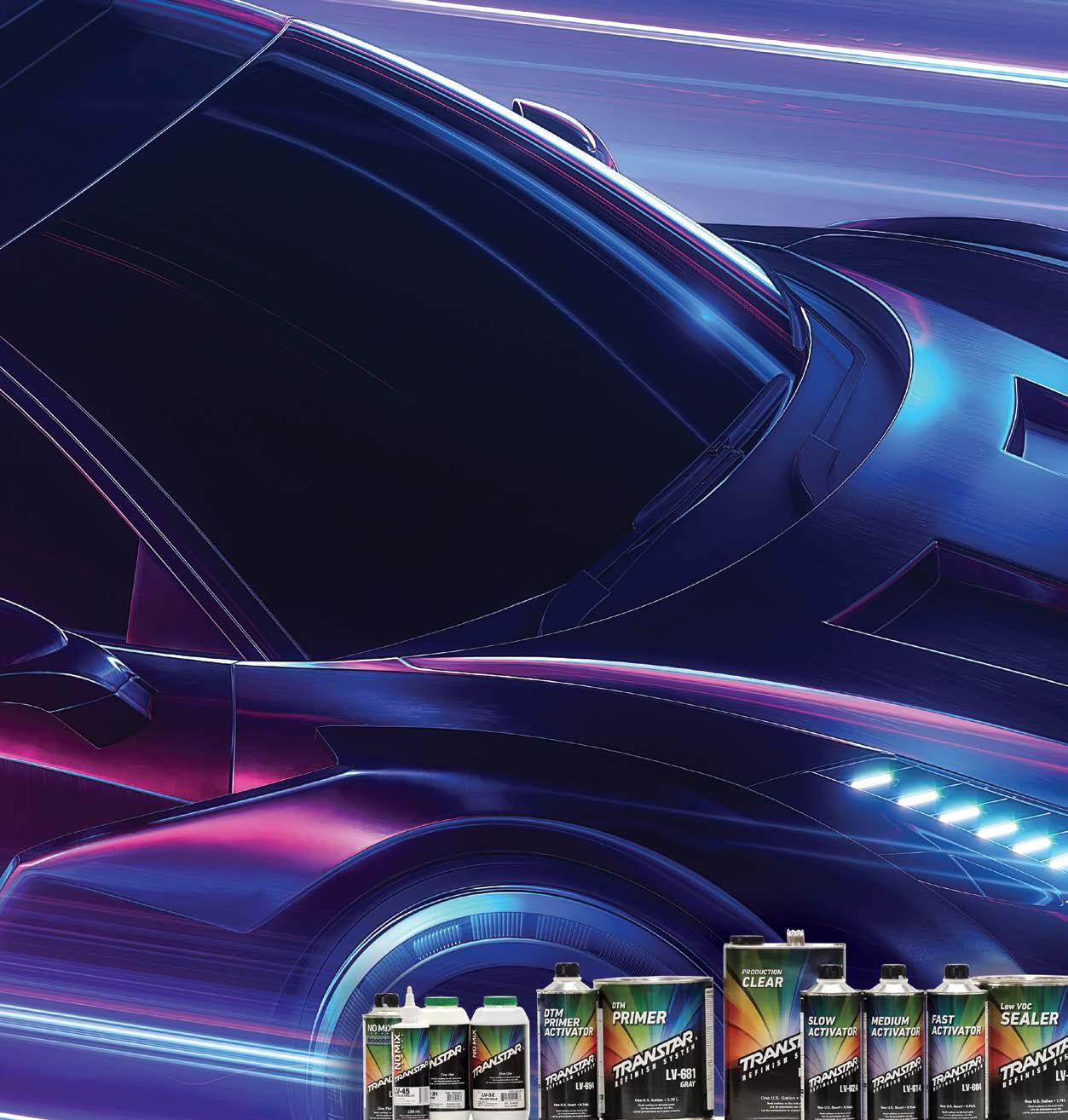
Small business owners are feeling the pain of inflation-driven interest rate hikes, another difficulty for those owners to overcome as they continue to recover from the COVID-19 pandemic-era shutdowns.
A rash of federal spending and an increase in the money supply in recent years have fueled inflationary pressures. Prices soared during the beginning of the Biden administration, making it hard for Americans to make ends meet.
To push down inflation, the U.S. Federal Reserve hiked interest rates nearly a dozen times to the highest level in 22 years. As The Center Square previously reported, the U.S. Bureau of Labor Statistics’ Producer Price Index, a key marker of inflation, has increased nearly
borrowing money much more expensive.
“Congress spent trillions upon trillions in recent years both in its irresponsible response to the pandemic and simply for further bloated increases for federal programs and agencies,” Joel Griffith, an economic expert at the Heritage Foundation, told The Center Square. “The central bank— the Federal Reserve—printed nearly $5 trillion, in part to finance this deficit spending. These newly created dollars flowed into the economy at a rapid pace. More dollars chasing too few goods sparked inflation.”
The average mortgage prices recently hit 7.09%, the highest in two decades. The same time last year, the average rate was about 5.13%. Interest rates on business loans have risen as well.
“In addition, when banks lend
Recently released survey data gives a window into the impact of those policies, reporting many small business owners cite interest rates as a major problem.
“Over half (58%) of small business owners who borrowed or tried to borrow reported high interest rates as their largest complaint in accessing financing,” the National Federation of Independent Business said.
NFIB’s monthly survey of business owners shows the percentage who cite interest rates as their biggest concern has ticked up as well.
Those businesses are also generally concerned about the banking sector, which has seen multiple bank collapses and fear of a domino effect.
“The health of the financial system is essential to small business operations,” said Holly

Crash Champions on Aug. 29 announced Eric Pitt has joined the executive leadership team as chief financial officer.
Pitt joins the Crash Champions executive leadership team after previously serving as CFO at HGreg, a major independent automotive dealer with locations across the U.S. and Canada.
Pitt joins Crash Champions at a time of significant growth, having added more than 400 repair centers to its network since the start of 2022. Crash Champions operates more than 600 locations across 36 states and Washington D.C.
Throughout his career, Pitt has overseen large-scale accounting and finance teams that have supported the acquisition and integration of more than 150 automotive dealerships accounting for north of $15 billion in revenue.
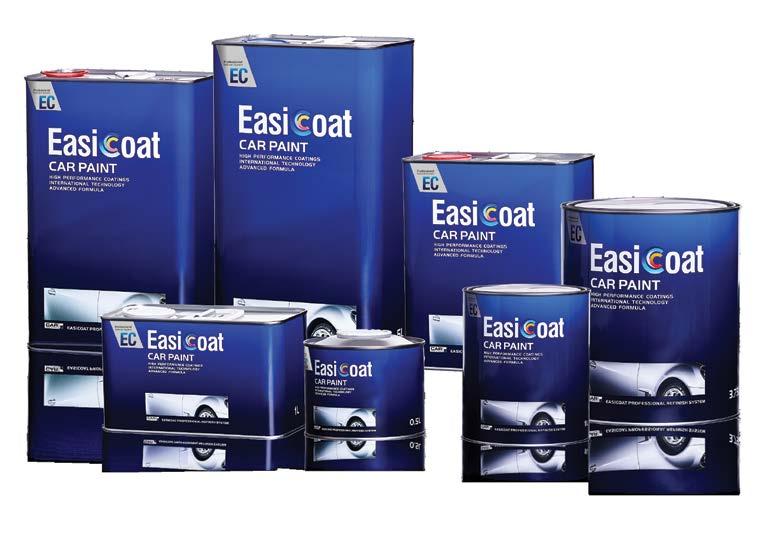
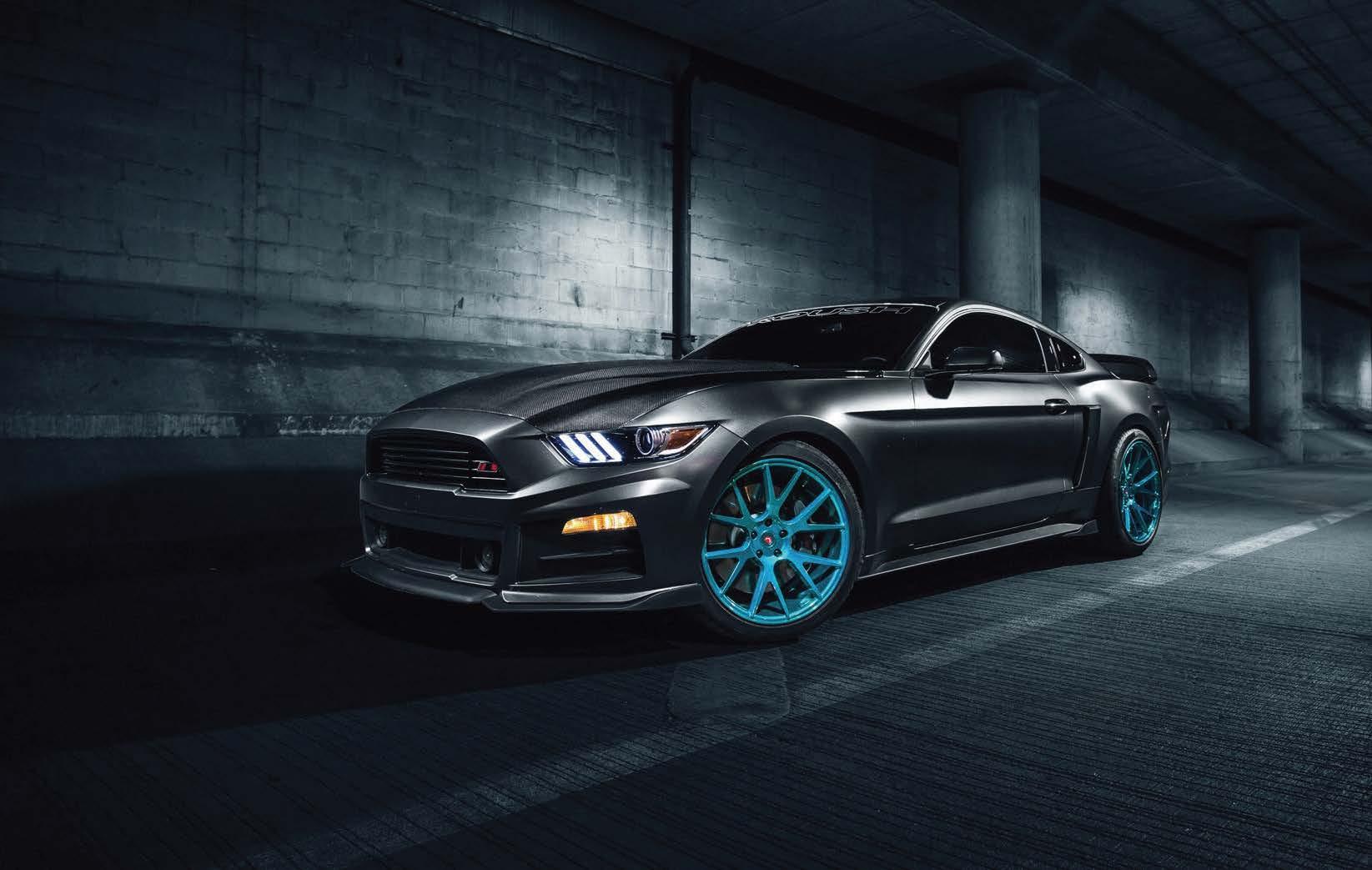
LIGHTWEIGHT, LOW PROFILE precision balanced design delivers superior control
RUBBERIZED DYNAGRIP delivers reduced vibration and increased insulation resulting in greater operator comfort and reduced fatigue
TOOL CAN RUN 5" OR 6" PADS
DUAL RUBBER SUPPORTS provide incredible stability when the machine is not in use
SINGLE-ACTION LOCK TRIGGER
ERGONOMICALLY-DESIGNED EXTENDED HANDLE for increased operator comfort during use

2 TOOLS - IN -1
#RespectTheFinish
Follow us on Instagram: @dynabrade_auto
Cuts like a rotary, finishes like a DA!
 20' SWIVEL CORD
Model DB8
20' SWIVEL CORD
Model DB8
As the summer comes to an end, estimating system labor times associated with evacuation and recharging of vehicle air conditioning systems with R1234yf refrigerant remain a heated issue for some in the industry.
The Database Enhancement Gateway (DEG) has received at least 40 inquiries in recent years related to that issue. Although the estimating system providers have long provided a way for anyone in the industry to submit inquiries related to missing or potentially inaccurate information in the systems, the DEG was created by a number of shop trade associations as an easier and centralized way to submit—and monitor what happens to—such inquiries.
Danny Gredinberg, DEG administrator, said the three major estimating system providers have generally said after review of the air conditioning related inquiries, no change was needed. But he pointed out the costs of the R1234yf equipment—and of the refrigerant itself—are higher than those related to earlier systems using other types of refrigerant, and the time to perform



the process has changed.
“But one thing that hasn’t changed is the labor time [in the estimating systems],” Gredinberg said at a recent Society of Collision Repair Specialists (SCRS) meeting. “That has stayed the same from the beginning of time.”
Shop owner Barry Dorn of Dorn’s Body & Paint in Mechanicsville, VA, said he and one of his technicians compiled lists of the steps needed to evacuate and recharge a system with R134a refrigerant, and significantly longer lists of the steps required to evacuate and recharge a system with R1234yf refrigerant.
“We are seeing the times spent on these operations more than double the generic times the [estimating systems] are claiming that it should take,” Dorn said.
The DEG overall fielded 1,020 inquiries related to the three major estimating systems in the first half of this year, putting it on pace to match last year’s total of more than 2,000. One DEG inquiry submitted in mid-April, for example, questioned the roof refinish time for the 2020 Ram 3500 in the Mitchell estimating system given the size and height of the vehicle, “requiring additional effort to go up and down to prep and refinish.” After review, Mitchell increased the refinish labor time from 2.8 hours to 4.3 hours.
Gredinberg said 55% of this year’s inquiries resulted in some change to an estimating system database, including more than 850 paint or body labor hours being added to operations, and more than $9,000 in missing parts added to the systems.
“You can see this is a useful resource to the industry,” Gredinberg said. “All we want is fair and accurate information in the systems that’s visible to both sides.”
Also at the SCRS meeting, the association pushed back against several organizations that have
been critical of an agreement SCRS—along with the Automotive Service Association (ASA)—recently announced with a coalition of automakers. The agreement reaffirms that “independent repair facilities shall have access to the same diagnostic and repair information that auto manufacturers make available to [their] dealer networks.”
Several organizations, which also represent industry segments beyond mechanical and collision repair shops, say that agreement lacks enforcement and does not diminish the need for federal right-to-repair legislation.
But SCRS Executive Director Aaron Schulenburg said he doesn’t have collision repairers telling him they can’t get the OEM information they need. He said SCRS believes consumers should be able to choose an independent repair shop to work on their vehicle, and those shops should continue to have access to the OEM repair information—and that’s what the agreement is all about.
“I think any [organization] that challenges or objects to that shared position between two leading repair organizations and an automaker organization should be questioned,” he said.
“All we want is fair and accurate information in the systems that’s visible to both sides.”
DANNY GREDINBERG DEG ADMINISTRATOR
Oct 31 - Nov 3


Electric vehicle (EV) owners experience more problems with advanced technology than do owners of internal combustion engine (ICE) vehicles, according to the J.D. Power 2023 U.S. Tech Experience Index (TXI) Study, released Aug. 24. The study focuses on the user experience with advanced vehicle technology as it first comes to market and is an early measure of problems encountered by vehicle owners.
Seventeen of the 21 advanced features offered on both fuel versions have more quality problems per 100 vehicles (PP100) for EVs (excluding Tesla) than for ICE vehicles. In addition, satisfaction is lower for EVs across 86% of the advanced techs compared with those on ICE vehicles. Features such as remote parking assistance (27.4 PP100 among EVs vs. 10.7 PP100 among ICE vehicles) and interior gesture controls (49.6 PP100 among EVs vs. 31.2 PP100 among ICE vehicles) have some of the largest gaps between the two fuel versions.
These study findings also are consistent across the J.D. Power 2023 Initial Quality Study (IQS) and 2023 Automotive Performance,
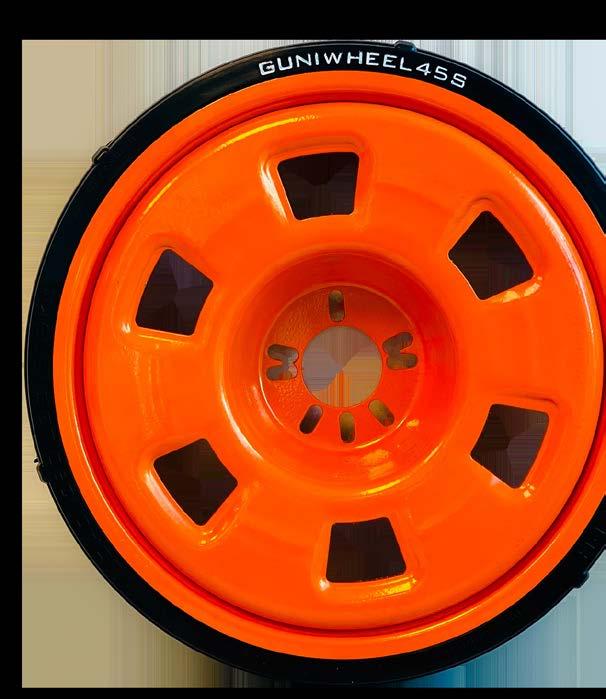
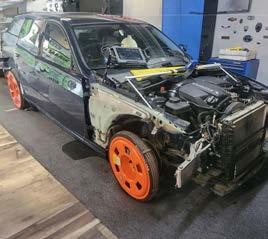

Execution and Layout (APEAL) Study. The total vehicle problems in the IQS is 46% higher among EVs (excluding Tesla) than ICE vehicles and satisfaction is lower among owners of EVs across nine of 10 APEAL categories than among owners of ICE vehicles.
senior director of user experience benchmarking and technology at J.D. Power. “The perception in the industry is that most EVs should offer many advanced technologies to compete with high-tech entrants like Tesla. Success will be dependent on those manufacturers
2023 study : Warning bells—disruptors are coming: New manufacturers (e.g., Tesla, Rivian, Lucid and Polestar) are making a very strong debut in the U.S. market in terms of their advanced tech offerings. While some brands have small sample sizes and state registration restrictions prohibit ranking, most of the innovation of these newer brands far exceeds that of traditional manufacturers—except for Genesis—and significantly outpace the Innovation Index premium average (588 on a 1,000-point scale). Innovation and tech offerings are high for new manufacturers, but they are not providing a problem-free experience. Average problem levels for advanced technologies among new manufacturers, except for Polestar, are well above the premium average of 24.3 PP100 and are among the highest in the industry.
“Innovation through a strong advanced tech strategy is crucial for all vehicle manufacturers, especially those working to build their reputation in the electric vehicle space,” said Kathleen Rizk ,
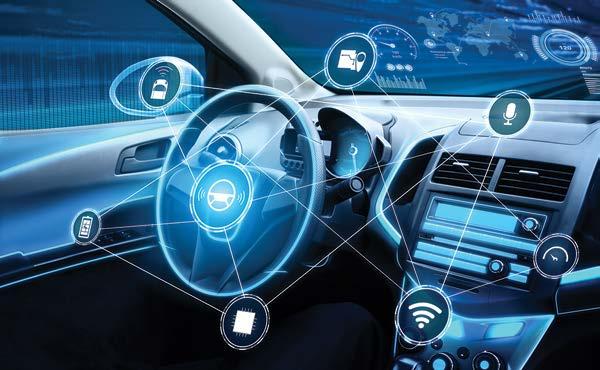
that can execute flawlessly, while ensuring the user experience is the same for those who are tech savvy and those who are not.”
Following are key findings of the
Owners don’t see eye-toeye with biometrics: In terms of accuracy, biometrics that monitor behavioral characteristics (e.g., eye movement) are less problematic than those that monitor physiological characteristics
(e.g., facial recognition) but are more annoying. Regardless of the biometric type, owners say they do not consider them to be useful (fingerprint reader rating of 7.24 (on a 10-point scale); facial recognition
7.48; and direct driver monitoring
7.75). Despite continued usage, biometric technologies have low desirability in terms of owners wanting them in their next vehicle compared with other advanced technologies.
Owners charged up about plug and charge: The plug-and-charge technology is well liked by owners even though new tech in EVs can often be problematic. After plugging into a public charger, the charger identifies the vehicle, validates the charge and starts the charging process. Payment and billing occur automatically upon completion of the charge. Nearly three-fourths (72%) of owners say they want the technology on their next vehicle. With just 6.0 PP100 and overall satisfaction of 8.89 (on a 10-point scale) across the industry, plug and charge is well executed across most manufacturers and
of many safety and advanced driver assist systems (ADAS) technologies have declined slightly year over year, most notably reverse automatic emergency braking (-4 percentage points); safe exit assist (-3); and automatic emergency steering (-3). While usage rates are still relatively high, small declines across several technologies is a worrying sign that reinforces the need for automakers to remain diligent on providing a positive customer experience so that trust and perceived feature usefulness are not negatively affected.
Highest-Ranking Brand s Genesis ranks highest overall and highest among premium brands for innovation, with a score of 656. In the premium segment, Cadillac (533) and Lexus (533) each rank second in a tie.
Hyundai ranks highest among mass market brands for innovation with a score of 547. Kia (528) ranks second and GMC (505) ranks third.
sustainability; and infotainment and connectivity. Only the 30 technologies classified as advanced are award eligible.
Chevrolet Corvette is the premium model receiving the convenience award for ground view camera technology. Toyota Sequoia is the mass market model receiving the convenience award, also for ground view camera technology.
Genesis GV80 is the premium model receiving the emerging automation award for front cross traffic warning. Hyundai Palisade is the mass market model receiving the emerging automation award for reverse automatic emergency braking.
BMW iX receives the award for energy and sustainability in the premium segment for one pedal driving. MINI Cooper receives the award for energy and sustainability in the mass market segment, also for one pedal driving.
BMW 3 Series receives the award for infotainment and connectivity in the premium segment for augmented reality
mass market segment.
The 2023 U.S. Tech Experience Index (TXI) Study is based on responses from 82,472 owners of new 2023 model-year vehicles who were surveyed after 90 days of ownership. The study was fielded from February through May 2023.
The U.S. Tech Experience Index (TXI) Study complements the annual J.D. Power U.S. Initial Quality Study (IQS) and the J.D. Power U.S. Automotive Performance, Execution and Layout (APEAL) Study by measuring how effectively each automotive brand brings new technologies to market. The U.S. Tech Experience Index (TXI) Study combines the level of adoption of new technologies for each brand with excellence in execution. The execution measurement examines how much owners like the technologies and how many problems they experience while using them.
Source: J.D. Power
Global Finishing Solutions (GFS) is dedicated to helping body shops be more productive, efficient and profitable, while achieving flawless paint finishes. Whether you are investing in your first paint booth or looking to increase throughput within your current footprint, we will work with you to find the right solution for your needs.

www.globalfinishing.com See Us at SEMA Booth #31067
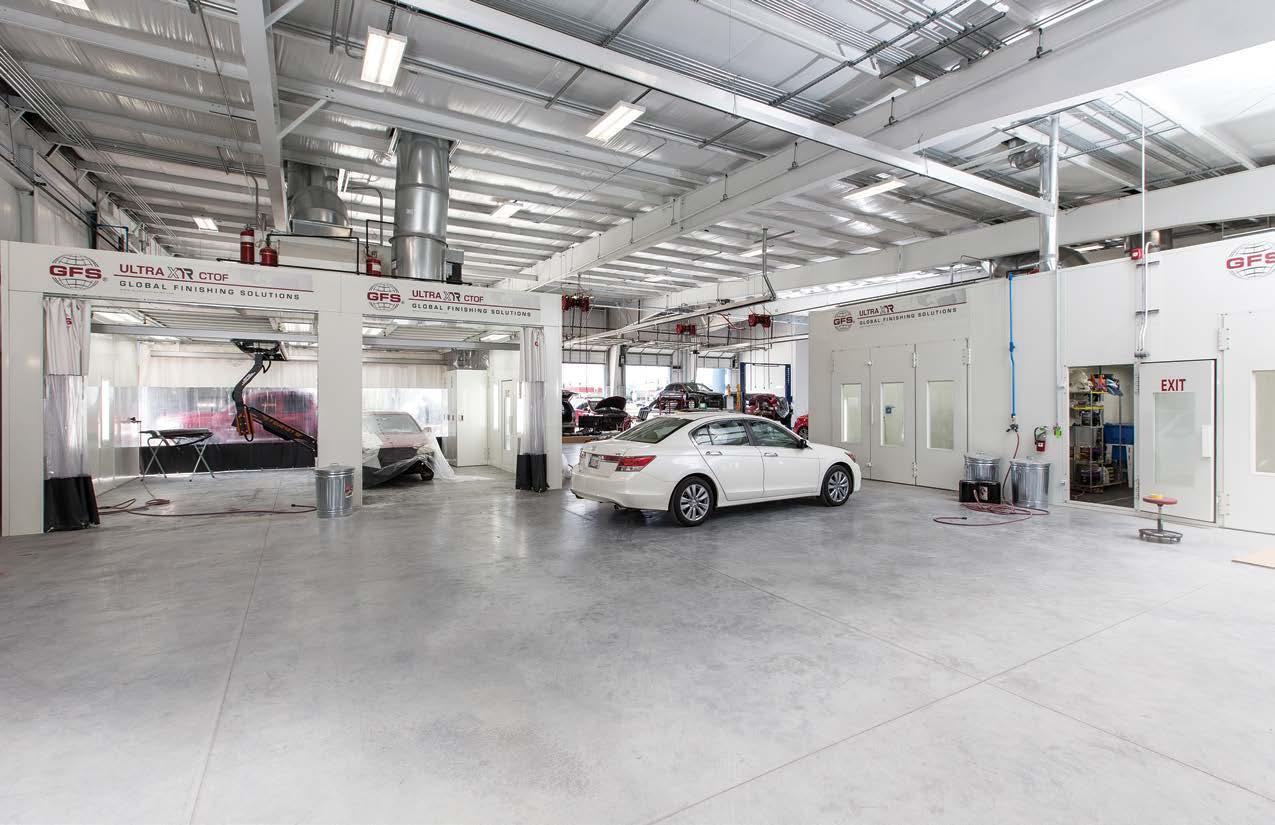
A reader recently sent me a question related to refinish materials. This is the second in a series of articles prompted by that question, all related to refinish issues—the first appeared in the September issue of Autobody News.
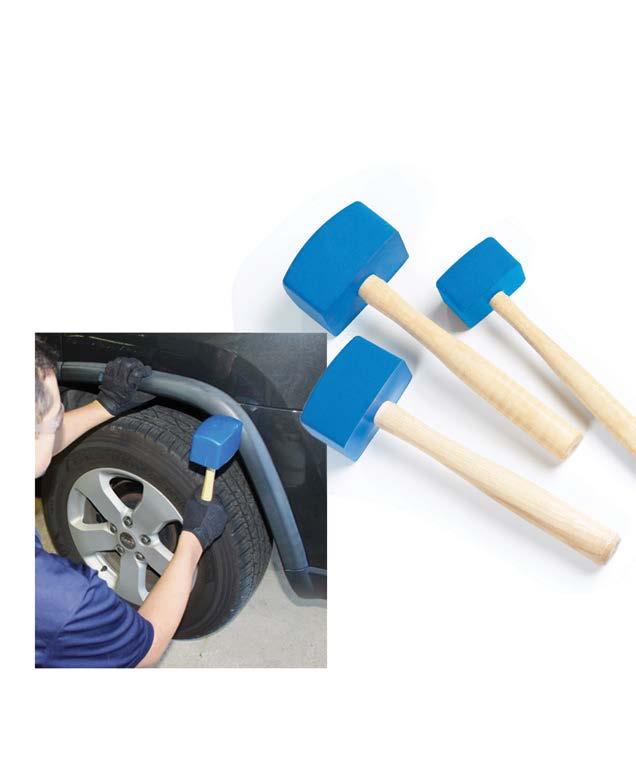

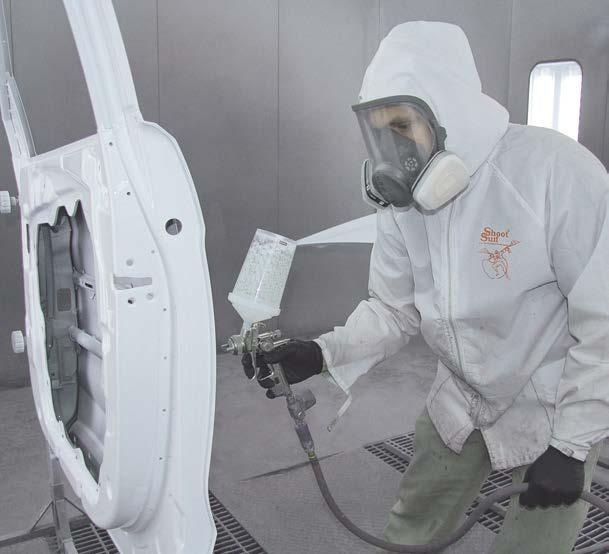
screen from our portal where we track the performance of many shops we consult with. It shows the shop spent $16,379 with their jobber in the month of July. Now some shops might just look at that as their cost of materials, and
that should be itemized and billed out on the estimate. Things like seam sealer, undercoating, cavity wax, weld-through primer, clips and fasteners. Not paint materials costs. This shop spent about $367 on safety items: paint suits, respirators, dust masks, gloves. Not paint materials costs.
as paint materials. Of course it would look like the shop wasn’t making any money on paint materials if all those other costs were included.
Some jobbers or distributors will send their customers multiple invoices or statements that help break the total costs down to simplify bookkeeping. But that’s
One of the most common questions I get from shops is something like, “Mike, can you help me, I’m not making money on my paint materials.” As I mentioned in my previous column, I first want to see what their average paint labor hours per repair order are, and then what their paint materials sales are as a percentage of their total revenue.
But I also want to look at their paint material costs as a percentage of sales. In other words, how much do they pay for materials compared to what they collect? I often see their costs are very high. Now there’s several reasons why this could be. It could be their painters are having to redo a lot of jobs. There could be other waste. There even could be theft.
But often what I see is a shop classifying costs as paint materials that really aren’t paint materials costs.
To illustrate this, I can pull up a
measure their paint materials sales against that number.
But that’s not accurate because most shops buy far more from their jobber or distributor than just paint materials. In our example, just over half—$8,891—of the $16,379 paid to the jobber was for liquids: primers, sealers, colors, clear. All paint materials.
The shop also bought allied products: sandpaper, tape, masking materials, mixing materials, etc. For this shop, those purchases were more than $2,800 of the $16,379 total. I consider things like gravel or chip guard, tack rags and things of the nature part of a miscellaneous category under paint materials. And all of that is legitimately paint materials costs.
But look at what else this particular shop spent with its jobber in July. About $1,120 of the $16,379 was for stock parts, things
The shop bought body supplies, a $1,476 piece of equipment, $507 worth of shop supplies, and small tools costing $720. Not paint materials.
If this shop was posting all those costs against their paint materials sales, that’s just not an accurate measure of what they are making on paint materials. That jobber bill includes about $5,000 spent on items that should not be classified
usually four or five sub-invoices at the most, and I think there’s actually a dozen or more different categories. Some shops buy software from their jobber, for example. Others buy aftermarket parts. You can’t just take all these things you buy from your jobber and post them to paint materials because it’s not all paint materials.
More on this topic in my next column.
“But often what I see is a shop classifying costs as paint materials that really aren’t paint materials costs.”
MIKE ANDERSON




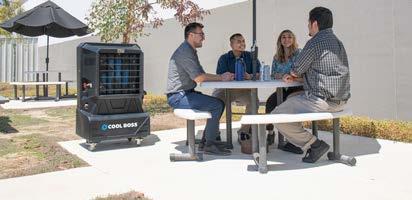


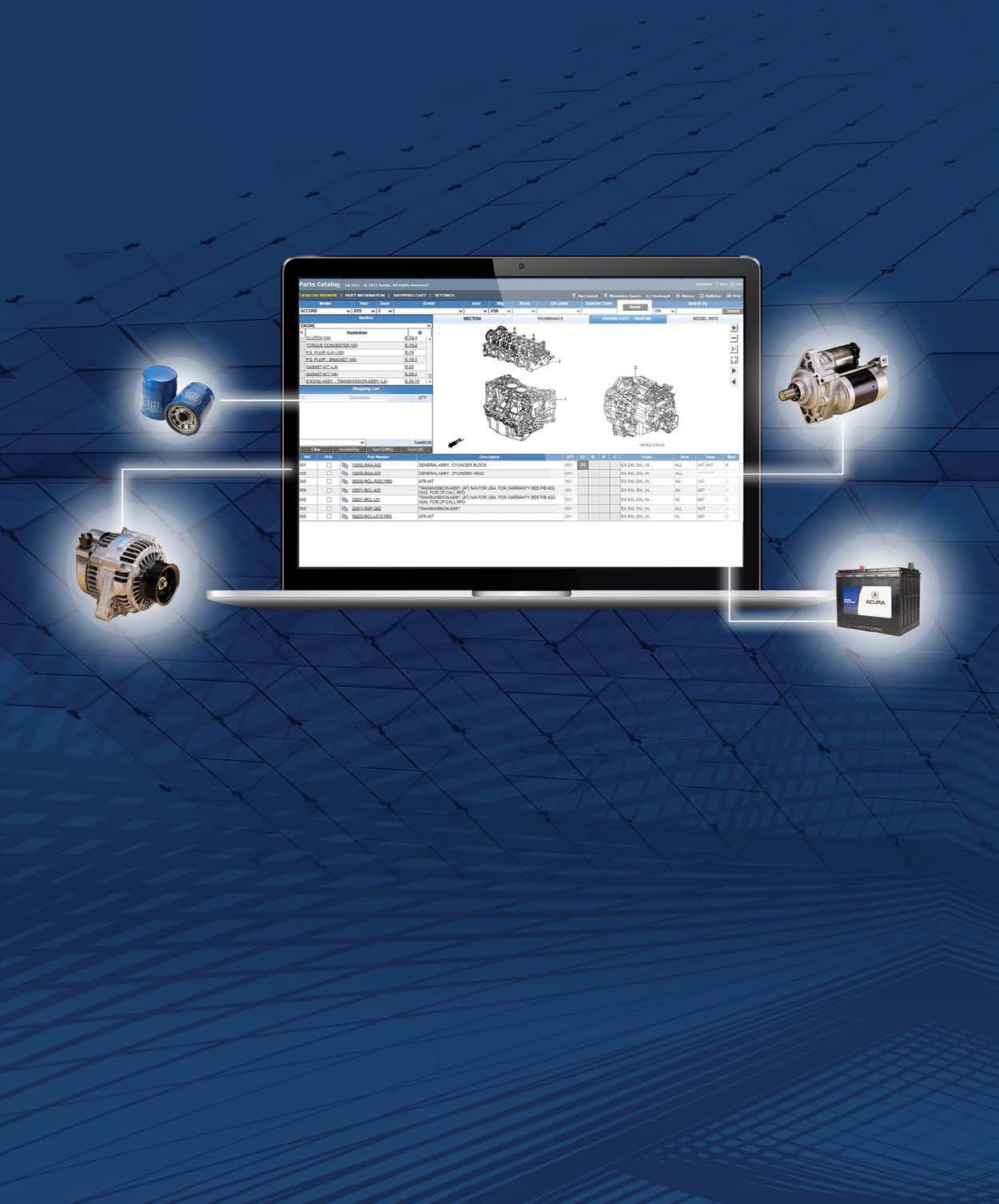
Please contact these dealers for your Honda or Acura Genuine parts needs.
Barber Honda Bakersfield
661-396-4235
Dept Hours: M-F 8-5:30 bestchoice@barberhonda com
Capitol Honda San Jose
408-445-4412
Dept Hours: Mon-Sat 7:30-6; Sun 8-5 sbettencourt@penskeautomotive com
Concord Honda Concord
925-825-8016
Dept Hours: M-F 8-6 kevin valenzuela@concordhonda com
Galpin Honda Mission Hills
800-GO GALPIN
818-778-2005
Dept Hours: M-F 7:30-6; Sat 8-2 mteeman@galpin com
Honda of El Cajon
El Cajon
619-440-5851
Dept Hours: M-F 7-6; Sat 7-5 parts@hondaofelcajon com
Honda of Hollywood Hollywood
800-371-3719
323-466-3205
Dept Hours: M-F 8-6 parts@hondaofhollywood com
ACURA
CALIFORNIA
Acura of Concord Concord
925-680-4233
Dept Hours: Mon-Sat 7-6 keith�whisten@cacargroup�com
Acura of Fremont Fremont
888-435-0504
510-431-2560
Dept Hours: M-F 8-6; Sat 8-5 mike ohare@acuraoffremont com
Acura of Pleasanton
Pleasanton
888-985-6342
925-251-7126
Dept Hours: M-F 7:30-6; Sat 8-6 mitch cash@hendrickauto com
Honda of Pasadena Pasadena
800-433-0676
626-683-5880
Dept Hours: M-F 8-6; Sat 8-4
Honda of the Desert Cathedral City
760-770-0828
Dept Hours: M-F 7-6; Sat 7-5 mpartridge@honda111 com
Keyes Honda Van Nuys
818-756-6549
Dept Hours: M-F 8-6; Sat 8-5 malvarez@keyeshonda com
Larry Hopkins Honda
Sunnyvale
408-720-0221
408-736-2608
Dept� Hours: M-Sat 8-5 parts1@hopkinsdirect com
Metro Honda Montclair
800-446-5697
909-625-8960
Dept Hours: M-F 7:30-5:30; Sat 7:30-4 wholesaleparts@metrohonda�com
Pacific Honda San Diego
858-565-9402
jgardiner@pacifichonda com
San Francisco Honda San Francisco
415-913-5125
Dept Hours: M-F 8-5 partsws@sfhonda com
Scott Robinson Honda Torrance
310-371-8320
Dept Hours: M-F 7-6:30; Sat 7-5 mluna@scottrobinson com
Selma Honda Selma
800-717-3562
559-891-5111
Dept Hours: M-F 7-6; Sat 7:30-4:30 hondapartsmgr@selmaautomall com
Larry H. Miller Honda Boise
888-941-2218
208-947-6060
Dept Hours: M-F 7-6; Sat 8-5
Hinshaw’s Honda
Auburn
253-288-1069
Dept Hours: M-F 7-6; Sat 7:30-4:30 rickb@hinshaws com
McCurley Integrity Honda Richland
800-456-6257
509-547-7924
Dept Hours: M-F 8-5:30; Sat 8-4 hondaparts@mccurley net
South Tacoma Honda
Tacoma
888-497-2410
253-474-7541
Dept Hours: M-F 7:30-6; Sat 8-5 bgregory@southtacomahonda com
AutoNation Acura Torrance
310-784-8664
310-539-3636
Dept Hours: M-F 7-7; Sat 8-5 alvaradow1@autonation com
Bakersfield Acura
Bakersfield
661-381-2600
Dept Hours: M-F 7:30-5:30 bakersfieldacuraservice@yahoo com
Marin Acura
Corte Madera
800-77-Acura
415-927-5350
Dept Hours: M-F 8-5:30; Sat 8-4 parts@marinacura com
Metro Acura Montclair
800-446-5697
909-625-8960
Dept Hours: M-F 7:30-5:30 wholesaleparts@metrohonda com
Acura of Honolulu
Honolulu
866-931-9086
808-942-4557
Dept Hours: M-F 8-5; Sat 8-4
Johara@lithia com
Tokuda@lithia com
RayleenGarcia@lithia�com
Hinshaw’s Acura Fife
253-926-3331
Dept Hours: M-F 7-6; Sat 8-5 johnny@hinshaws�com
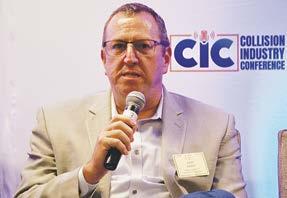
 By John Yoswick Autobody News
By John Yoswick Autobody News
The Collision Industry Conference (CIC) offers an opportunity for the industry to hear the latest collisionrelated news from the automakers, and this past summer’s meeting held in Indianapolis was no exception.
the site does not correlate with the number of Nissan vehicles being repaired.
“I don’t think if there’s 100,000 repairs, I have to have 100,000 logins,” Dent said. “But when I’m a lot less than that, that reflects on the operators [of] the majority of the body shops.”
Shops and technicians can’t continue to rely on “doing what we’ve always done,” he said.
But Dent also was asked about the challenge of even a small job requiring hours of research.
“We know that’s a problem. We see that,” he said, noting he and a colleague worked on an estimate that required more than four hours of research. But he also pointed to other sources of information that could help bridge the gap, noting that using OEConnection’s RepairLogic for that same estimate shaved hours off the research time.
provide a parts list for a vehicle after an accident.
“But it is highly possible to start using some of that information in the not-too-distant future for proper triaging of vehicles,” Cid said. “You may not know the parts list on it, but you’ll know how severe that impact
Vehicles are getting better at selfdiagnosing problems, he said, but there are too many variables related to collisions.
“You have an accident and it shows the headlight is bad. But is the headlight bad? Or did the wiring harness get damaged in the accident and there’s actually nothing wrong with the headlight?” Logan said.
Logan said shops working on Rivian vehicles—or others for which owners have a cell phone app—need good procedures for ensuring those vehicles are placed in service mode during repairs.
Dan Dent, who oversees the certified collision repair network for Nissan, said the automaker has launched a new virtual academy for training, and is enhancing its shop locator to allow Nissan and INFINITI owners to schedule appointments and request photo estimates. That system will use Carwise so appointments and estimate requests will arrive at the shop “in a format you’re used to seeing it in,” Dent said.
But the change in the program he announced that actually drew applause from meeting attendees was some new dealership training launching this fall.
Dent asked shop owners at the meeting to all raise their hand, then said they should lower their hand if they’d ever had a customer say, “I talked to the dealership service advisor, and they said I didn’t need to do that,” referring to something the body shop said needed to be done. Every raised hand in the room dropped. Dent said Nissan is working with Collision Advice on training that will help service advisors “completely understand the situation you’re in on a daily basis.”
“So when they ask about calibrations, what does that really mean, how do we answer that,” Dent said as an example. “Dealers will have about 90 days to complete that training once that class is out.”
Using the OEM Repair Information
Dent described Nissan’s TechInfo website as “the baseline truth for everything when it comes to our repairs,” but noted current usage of
“Is it 100%? No, but it’s better than what you’re doing” if you’re not looking up any of the automaker’s information, Dent said. “I have endorsed RepairLogic to say at the very least why aren’t you using that?”
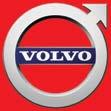
was. You can start to get an idea of whether it’s drivable or not.”
Kelly Logan, director of the Rivian collision repair program, concurred that an accurate parts list through vehicle telematics won’t be available soon.
“That’s the ultimate goal [but] it’s going to take a long time to get there,” he said.
“It’s not about disconnecting the customer from their vehicle,” he said. “But in certain instances you can open doors or open the hood or honk the horn. I’ve known of probably two instances where there was a car in a paint booth and someone decided to [remotely] open a hood that was all masked off. If you’re a technician working on the front end of a car and all of a sudden the horn blares, you’re really not going to be too happy about that.”
The next CIC meeting is taking place Oct. 31 in Las Vegas during SEMA week.
Other automaker representatives offered a variety of insights during discussions at CIC. Anita Rexwinkle , who oversees the aftersales parts program for Mazda North America, said the message she’s heard during recent industry meetings is that more collisionrelated position statements are needed from Mazda.
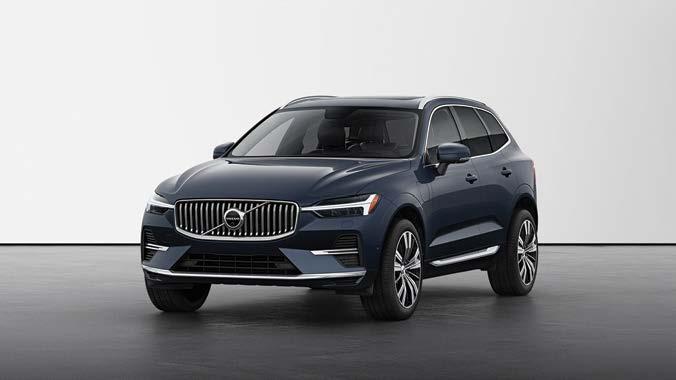
“That’s a big issue of mine, to support you repairing a car properly, and having the directives to be able to utilize when you’re writing estimates,” she said. “I’m glad to say that’s finally starting to move.”
Ben Cid, collision manager for Mercedes-Benz USA, said the industry shouldn’t look any time soon for vehicle telematics to
“That’s a big issue of mine, to support you repairing a car properly, and having the directives to be able to utilize when you’re writing estimates.”



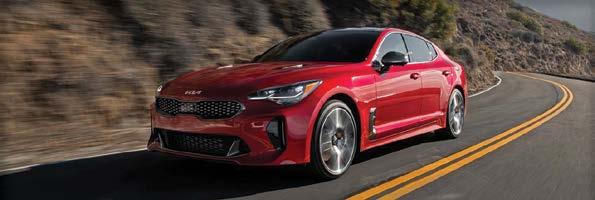



















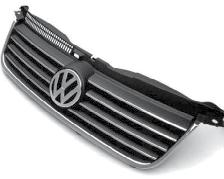

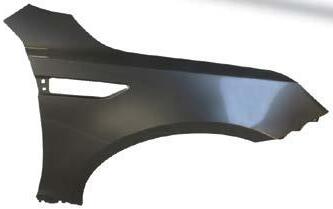




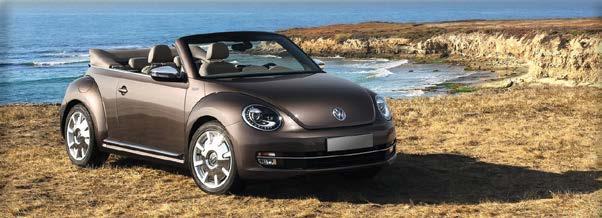


Ford is planning to discontinue the Escape, Edge and Transit Connect to make more capital available for its EV push, a major point of CEO Jim Farley’s plans to return Ford to its once industry-leading position.
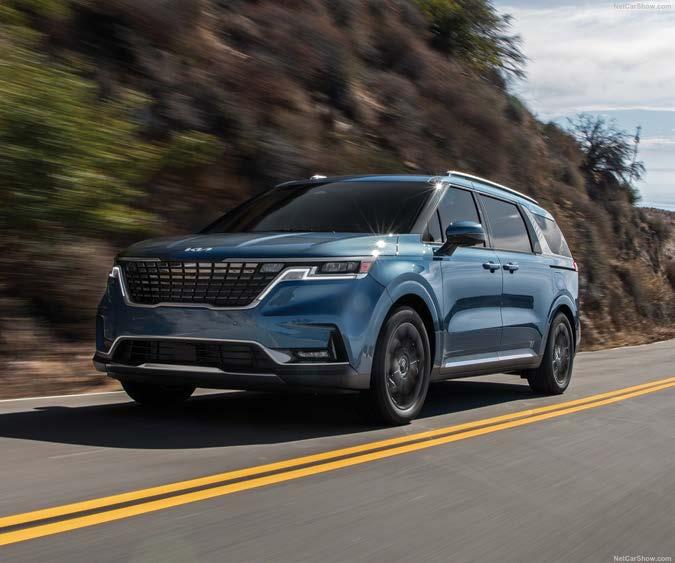
Ford, one of the longeststanding car companies in the world, has ultimately decided to transition away from the gas-powered models that have brought it so much success for a century.
Ford has been one of the most committed legacy OEMs in terms of EV adoption and has also been one of the most successful to do so since putting its cards on the table and admitting it will need EVs to run a top-notch and sustainable business into the next few decades.
According to Automotive News, Ford is planning to get rid of the two SUVs and commercial
van due to higher-than-expected losses in 2023—Ford is set to lose $4.5 billion more than it previously expected, according to the report.
Ford has bolstered its EV production with expansions of various facilities and has even set aside billions for a dedicated production facility for EVs and batteries in Tennessee.
However, its 400,000-unit annual production goal set to be achieved in 2024 has been pushed back. It planned to quadruple that number by 2026 and bring 2 million EVs to customers that year, but that figure is also being reexamined.

It would not be the first time a company didn’t reach its annual production goals for EVs. Many automakers have set out to produce a figure that seemed extremely lofty at the time, only to come up short as the production and manufacturing processes are seemingly more complex than initially thought.
But Ford still has a lot going for it on the EV front. It has plans to bring a next-gen pickup to its brand sometime within the next couple of years, and the F-150 Lightning and Mustang Mach-E are becoming more popular with every quarter as the automaker continues to reduce prices and achieve more scalability.
The Edge will be discontinued as the Oakville, Ontario, Canada, plant the car is built in will be retooled to make way for a threerow all-electric SUV. Meanwhile, the Transit Connect will only be removed from U.S. showrooms, but the European market will have access to the vehicle.
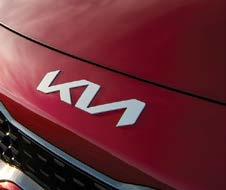

The Escape is one of Ford’s most popular models, and there is currently no set date for the SUV to be removed from production. It is more than likely going to be built for the next few years, but there are no plans to make an electric iteration of the Escape, at least for now.


USAA released data on distracted driving trends in the U.S. during the first half of 2023. The data, compiled from USAA’s SafePilot® telematics app, offers valuable insights into the states where drivers are most and least prone to distractions behind the wheel. The data comes at a time when more drivers have returned to the roads as more Americans are working from offices.
Through the first half of the year, USAA has seen an 18% increase in miles driven over the same period in 2022, along with a 10% increase in distracted driving behaviors, providing an opportunity to raise awareness on the importance of avoiding distractions on the roads as it remains a leading cause of accidents and fatalities for Americans.

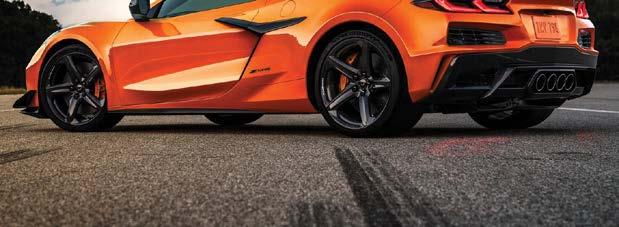
According to the most recent data from the National Highway Traffic Safety Administration (NHTSA), distracted driving claimed 3,522 lives in 2021, a 13% increase over pre-pandemic figures from 2019.
Distracted driving is particularly dangerous because it diverts
a driver’s attention away from the road, increasing the risk of accidents. Common distractions include texting, talking on the phone, eating or using in-car entertainment systems.
“At USAA, we are committed to helping create safer roads for everyone,” said Randy Termeer , USAA president of Property & Casualty. “By staying focused on the road and avoiding distractions, we can protect lives, reduce accidents and make our communities safer for all.”
USAA has compiled data highlighting the top 10 states with the most and least distracted drivers based on their smartphone distraction rates (percentage of driving time that was distracted).
These states exhibited the highest levels of distracted driving incidents, including texting, phone calls and other smartphone distractions that divert drivers’ attention from the road.
1. Mississippi, 17.8 %
2. Louisiana, 16.8 %
3. South Carolina, 16.5 %
4. Alabama, 16.2 %
5. North Carolina, 15.8 %
6. Georgia, 15.5 %
*District of Columbia, 14.9 %
7. Arkansas, 14.7 %
8. Tennessee, 14.5 %
9. Texas, 14.0 %
10. Kentucky, 13.8 %
Top 10 States with the Least Distracted Drivers (January–June 2023)
These states demonstrated a commitment to safe driving practices, with fewer incidents of smartphone distractions compared to the national average of 12.1%.
State, Distraction Rate
1. Vermont, 6.8 %
2. Oregon, 8.0 %
3. Minnesota, 9.1 %
4. New Hampshire, 9.5 %
5. Maine, 9.6 %
6. Washington, 10.1 %
7. Montana, 10.2 %
8. Colorado, 10.3 %
9. Nevada, 10.3 %
USAA encourages all drivers, regardless of their state’s ranking, to prioritize safety behind the wheel. By taking simple precautions, we can collectively make the roads safer for everyone. USAA remains dedicated to promoting safe driving habits and will continue to raise awareness about the importance of distraction-free driving.
Driving data from SafePilot, USAA’s behavior-based insurance app, leverages telematics technology to provide feedback on driving behaviors. SafePilot rewards safe driving with premium discounts; members who enroll receive up to a 10% discount for signing-up and continued policy discounts up to 30% for exhibiting safe driving behaviors. By incentivizing safe driving practices, SafePilot aims to reduce accidents, improve road safety and reward participants with discounts on their insurance.
SafePilot is currently available in 47 states plus Washington D.C.
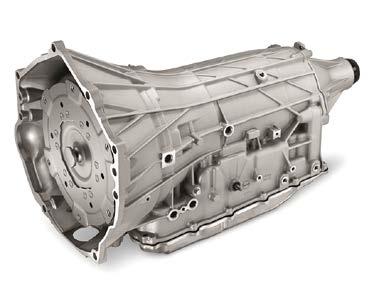

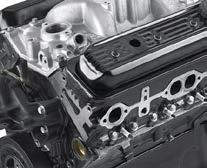


Source: USAA

Women in Auto Care, a community of the Auto Care Association, set a new record for its scholarship program, distributing 86 awards in both cash scholarships and starter toolkits, totaling $413,500 in value. The awards benefited female students across the U.S. interested in a career in the auto care industry. The incredible success of this year’s program was supported by the generosity of Women in Auto Care community sponsors and member donations.
Over the last year, Women in Auto Care continued its partnership with Garage Gurus to award five $7,000 cash scholarships totaling $35,000, introduced its largest cash scholarship of $10,000 in partnership with Dorman, awarded 20 toolkits valued at $9,000 each through its continued partnership with NAPA and partnered with Acuity to award an additional 10 toolkits valued at $4,250 each.


For more information about scholarship opportunities, visit autocare.org/women-in-auto-care.
Source: Auto Care Association
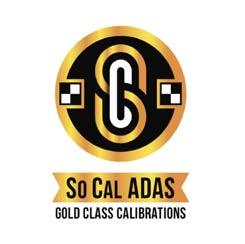



A federal campaign to combat COVID-19 fraud resulted in 718 enforcement actions, including criminal charges against 371 defendants, for crimes related to more than $836 million in alleged COVID-19 fraud.
The U.S. Department of Justice announced the results of the campaign Aug. 23.
“The Justice Department has now seized over $1.4 billion in COVID-19 relief funds that criminals had stolen and charged over 3,000 defendants with crimes in federal districts across the country,” Attorney General Merrick Garland said in a statement.
Deputy Attorney General Lisa Monaco made the announcement at a roundtable meeting of senior Justice Department officials, law enforcement partners and Office of Inspector General executives. Monaco also announced the launch of two additional COVID-19 Fraud Enforcement Strike Forces: one at the U.S. Attorney’s Office for the District of Colorado, and one at the U.S. Attorney’s Office for the District
of New Jersey.
Those two strike forces are in addition to the three strike forces launched in September 2022 in the Eastern and Central Districts of California, the Southern District of Florida, and the District of Maryland.
“The two new Strike Forces launched today will increase our reach as we continue to pursue fraudsters and recover taxpayer funds, no matter how long it takes,” Monaco said in a statement.
The 718 law enforcement actions include criminal charges, civil charges, forfeitures, guilty pleas and sentencings, with a combined total actual loss of more than $836 million, according to the Justice Department.
Criminal charges were filed against 371 defendants, and 119 defendants have pleaded guilty or were convicted at trial during the sweep. More than $57 million in court-ordered restitution was imposed. Prosecutors worked with law enforcement to secure forfeiture of more than $231.4 million.
Michael Horowitz, chairman of the Pandemic Response Accountability Committee, said
early mistakes cost taxpayers.
“Agency decisions in the early months of the pandemic that prioritized speed over accuracy in delivery of relief funds led to brazen fraud and outright theft of millions of dollars,” he said in a statement.
Horowitz testified in February that federal agencies failed to use some of the tools at their disposal to prevent fraud, including the Do Not Pay list. The U.S. Department of the Treasury had set up the list of suspicious payees whoshould trigger additional screening. He said advance screening with the U.S. Department of the Treasury Do Not Pay list could have saved taxpayer money.
“The two new Strike Forces launched today will increase our reach as we continue to pursue fraudsters and recover taxpayer funds, no matter how long it takes.”
— LISA MONACO DEPUTY ATTORNEY GENERAL
Public charging is a common concern for new EV buyers and current owners alike, and local charging infrastructure can depend heavily on where a person lives. In a recent study, one organization looked at each U.S. state to assess the maturity of their local charging infrastructure, demonstrating some of the places where it may be easiest—and hardest—to own an EV.
In a joint study from research firm SBD Automotive and locationdata company Here Technologies, researchers analyzed the number of public charging across all 50 U.S. states and the District of Columbia to determine which had the best and worst charging infrastructures, via Green Car Reports.

The research used data from Here’s EV Charge Points API and the U.S. Department of Energy’s Alternative Fuels Data Center (AFDC.)
The study looked at multiple categories of charger density from 2020-2022, including charging points per road length, average charging power, the state’s EV market share (2022 only), and the number of EV fleets per charging point. Using the category breakdowns, the two parties then assigned scores to states based on these factors.
Washington D.C. ranked first on the index, ahead of state leaders Connecticut, Vermont, Massachusetts, Maryland and Maine. Making up the rest of the top 10 states were New York, Colorado, Rhode Island and California.
The index also includes a simple infographic demonstrating the number of EVs per charging point in 2022. The graphic shows New Jersey as the charging density leader, with states including Florida, Texas, California and many others trailing just behind. Following the study, researchers suggest a rate of one public
charger for every eight or nine EVs.
Most EV owners charge their vehicles at home, work or other consistent locations rather than at charging stations. However, anyone planning to use their EV on a road trip or a long commute may need regular access to public charging. With EV adoption rates rapidly increasing, public charging will need to follow to accommodate the increasing number of vehicles on the road— and to prevent current chargers from getting too full.
The study comes after several announcements of automakers switching from Combined Charging System (CCS) charging hardware to Tesla’s North American Charging Standard (NACS) plugs in the U.S. The shift will see vehicle manufacturers such as Ford, GM, Rivian, Honda and more building future cars with the NACS plug, some as soon as next year, which will also give them access to the Tesla Supercharger network.
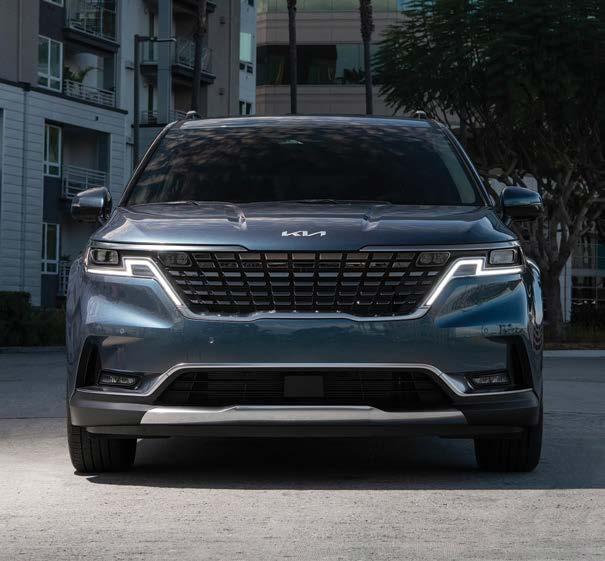
The University of the Aftermarket Foundation (UAF) has awarded 378 scholarships to students throughout the country, totaling $640,250 for the upcoming school year. A complete list of scholarship recipients can be found at AutomotiveScholarships. com/scholarship-alumni.
Those awarded with scholarships will be attending a two-year or fouryear college or university or an accredited automotive vocational program. While the majority of the students are studying to become mechanical, collision or heavyduty repair professionals, others are pursuing degrees in such fields as business, engineering and IT/ cybersecurity that will lead to a career in the automotive aftermarket. In addition, many named scholarships were awarded on behalf of a variety of individuals and organizations.
To be considered, scholarship candidates applied online. Once the teams of volunteer scholarship reviewers evaluated completed applications, recipients and their corresponding schools were notified of the awards.
Source: University of the Aftermarket Foundation
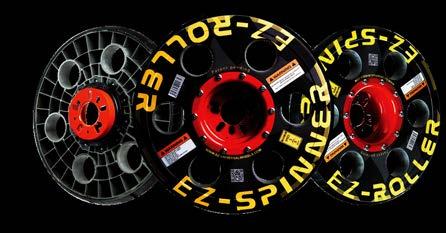

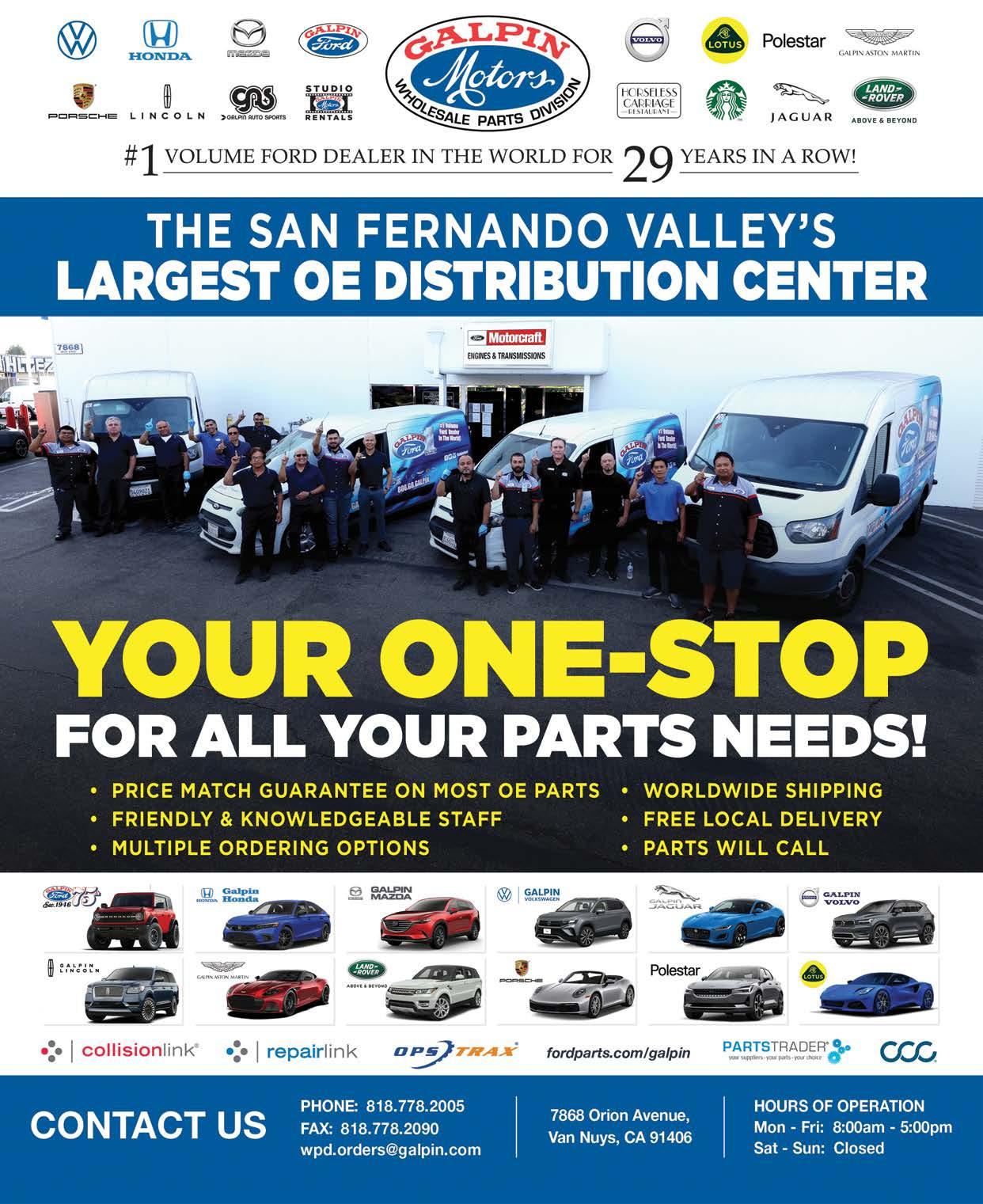
Tesla received a special order from the National Highway Transportation Safety Administration (NHTSA) regarding its Autopilot investigation launched in June 2022, which was upgraded from a preliminary evaluation initiated in August 2021.
On July 26, the NHTSA wrote a letter to Tesla’s senior director of legal expressing concerns about Autopilot and its ability to alert drivers of their attentiveness, or lack thereof, when using the driver assistance feature.
“Recently, NHTSA became aware that Tesla has introduced an Autopilot configuration that, when enabled, allows drivers using Autopilot to operate their vehicles for extended periods without Autopilot prompting the driver to apply torque to the steering wheel,” the letter said. “NHTSA is concerned that this feature was introduced to consumer vehicles and, now that the existence of this feature is
known to the public, more drivers may attempt to activate it. The resulting relaxation of controls designed to ensure that the driver remain engaged in the dynamic driving task could lead to greater driver inattention and failure of the driver to properly supervise Autopilot.”
Tesla was instructed to respond to the special order by Aug. 25 or face fines of up to $26,315 daily.


the software update “that reduces or eliminates instances in which Autopilot prompts the driver to apply torque has been enabled.”
3. Detailed steps or conditions necessary to revert a vehicle whose software update was activated to its ordinary state.

4. Differences between the setting in the software update that “reduces or eliminates instances in which Autopilot prompts the driver
authority.
6. Tesla’s basis or purpose in installing the subject software in road consumer vehicles “beyond the Tesla engineering vehicles, including but not limited to the justification for which consumer vehicles or vehicle owners were eligible for the subject software update.”

7. Any lessons learned/findings from driving vehicles with subject software update enabled.
8. Documents explaining subject software’s functionality.
9. Test plans or instructions given to Tesla engineering staff responsible for driving engineering vehicles with the software update.
Bloomberg initially reported on the NHTSA’s special order. The NHTSA shared the documents with Teslarati.
Tesla was required to submit the following to the NHTSA:
1. Details and dates of software updates, when they were introduced to Tesla engineering and then to consumer vehicles.
2. Steps to activate the setting in
to apply torque when enabled and when not enabled to Autopilot’s driver monitoring system, including the amount of time Autopilot is allowed to operate without prompting application of torque, and any warnings or chimes that


10. Crash and incident reports from collisions or near-misses involving vehicles with software update enabled.
NHTSA Administrator Ann Carlson said the Autopilot investigation would “get to a resolution…relatively soon.”




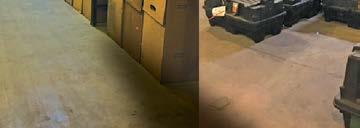


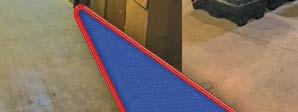
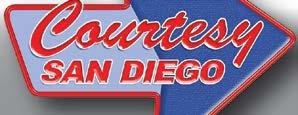












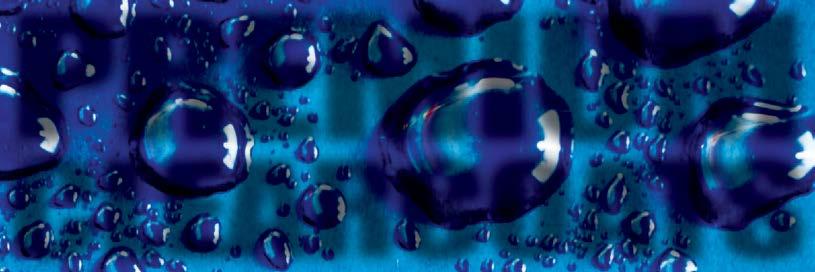
Farmers Insurance announced it will part ways with approximately 2,400 employees—11% of its workforce across all lines of business.

“Decisions like these are never easy, and we are committed to doing our best to support those impacted by these changes in the days and weeks to come,” Raul Vargas, president and CEO of Farmers Group, said in a statement Aug. 28.
The Los Angeles-based insurer said the moves are being made to better position itself for longterm profitability by creating a more streamlined organizational structure, and follow a thorough evaluation and reduction of operational expenses across the company.


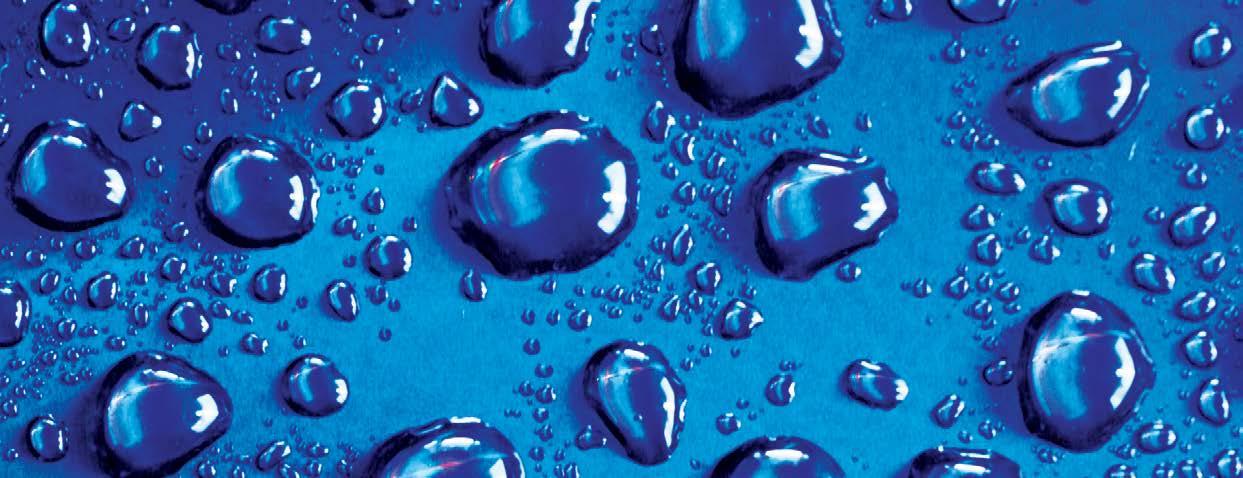
“Given the existing conditions of the insurance industry and the impact they are having on our business, we need to take decisive actions today to better position Farmers for future success,” Vargas said.
Farmers, one of the country’s largest providers of home, auto and small business insurance, said it would in the future share details of a plan to “reinvent how insurance is delivered, simplifying systems and introducing innovation” for employees as well as its exclusive and independent agents.





as 100,000 homeowner, auto and umbrella policies.
In July, the carrier announced it would limit new homeowners insurance policies in California, citing higher costs and wildfire risks. Another plan to issue thousands of nonrenewals to Georgia homeowners had to be revisited thanks to state law.
Vargas said in a statement Farmers must manage risk and prudently align its costs as the industry continues to face macroeconomic challenges.
EVgo Inc., one of the nation’s largest public fast charging networks for electric vehicles, and General Motors have surpassed 1,000 fast charging stalls as part of their longstanding collaboration to expand fast charging infrastructure. First announced in 2020 and expanded upon in 2021, the collaboration will lead to the development and installation of 3,250 DC fast charging stalls in major metro markets.
The layoffs come after Farmers has pulled back from Florida and California in recent months.


Farmers said in June it would halt sales of new homeowners policies in Florida, citing higher costs. In July, Farmers advised the Florida Office of Insurance Regulation it would further reduce business in the state by discontinuing Farmers-branded auto, home and umbrella policies. The pullback could affect as many
“Our leaner structure will make us more nimble and better able to pursue opportunities for growth and ultimately make Farmers more responsive to the needs of our insured customers and agents,” said Vargas.
Vargas, who took over as CEO at the start of the year, recently ordered workers to return to the office in a hybrid model, reversing the company’s policy on allowing most workers to do their jobs from home. Employees within 50 miles of a Farmers office must come in to work at least three days per week starting in September.
To date, EVgo and GM have opened fast charging stalls across nearly 230 locations in 39 markets covering 27 states, with the majority featuring highpower 350kW fast charging. EVgo and GM are working together to broaden access to public charging where EV drivers already spend time, such as grocery stores, retail centers and city centers, while also serving the need for customers who are unable to charge at home or work, such as renters and those living in multifamily dwellings. For more information, visit www.evgo.com.
Source: GM

Stellantis and its U.S. dealership network are driving toward their electrified future. Working with its 2,600-plus dealers, the company is focused on the transition to EV sales and service.
The addition of AGI’s electrical engineering, project management, fabrication and maintenance capabilities will provide an additional significant resource for Stellantis dealers to help accelerate their electricvehicle (EV) readiness. The move adds AGI to the Stellantis U.S. roster of EV infrastructure and training partners, including Future Energy and Vehya.
“As we accelerate the drive toward EVs, Stellantis is in full-execution mode with an electrification strategy designed specifically to address the needs of our dealership network,” said U.S. Head of Sales Jeff Kommor “We are working lockstep with our national dealer council to develop and support their longterm plans during this industry-
changing transition. From business operations and inventory management to service centers and employee culture, our goal is to work directly with our dealers to best prepare for, be successful in and address any challenges they may face as the automotive industry continues to move toward electrification.”
“Stellantis recognizes the importance of dealer EV readiness and customer experience, both at the dealership level and as a leading global OEM. With the push toward electrification, having the right electric vehicle supply equipment (EVSE) for charging, installed in the optimal location and with continuous uptime and in clean, proper working order is critical to delivering this overall experience,” said Dave Clower, SVP and GM of AGI’s Electrical Lighting and Maintenance Division. “AGI has been helping our customers build out EV charging capabilities for nearly a decade, and as one of the leading EVSE
providers in the nation we are excited to expand our relationship with Stellantis dealers as an approved, turnkey EV charging solutions provider.”
Stellantis unveiled its strategic plan for the coming decade, Drive Forward 2023, that will drive Stellantis employees to be “second to none” in value creation for all stakeholders. Stellantis has committed to becoming the industry champion in the fight against climate change, reaching carbon net zero emissions by 2038. As part of that leadership, the company plans to offer more than 25 BEVs by 2030.
Stellantis is one of seven world’s leading automakers, including BMW Group, General Motors, Honda, Hyundai, Kia and Mercedes-Benz Group, creating a joint venture to accelerate the transition to electric vehicles in North America by making EV charging more convenient, accessible and reliable.
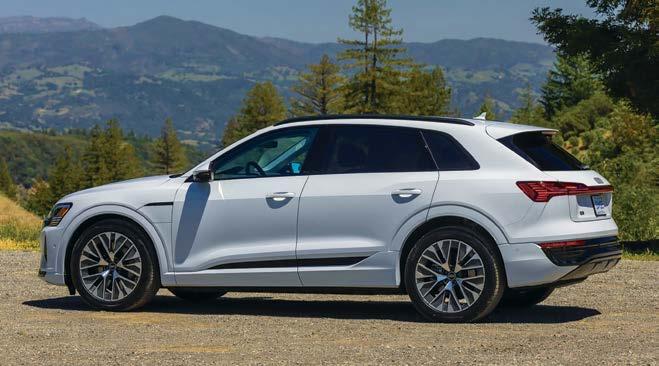
Source: Stellantis
Audi Burlingame Burlingame
888.737.5738
650.348.0883
650.348.0837 Fax
M-F 7:30am-4:30pm parts@rectormotors.com

Audi Rocklin Rocklin
866.948.0048
916.836.1286
916.836.1293 Fax
M-F 7:30am-6pm Sat 8am-5pm parts@audirocklin.com
Audi Long Beach Long Beach
562.610.4170
562.343.5088 Fax
M-F 7:30am-5pm wholesale@audilb.com parts@audilb.com www.audilb.com
Niello Audi Sacramento
916-480-2851
916.483.1963 Fax
M-S 8am-5pm audi.parts@niello.com www.audi.niello.com
Santa Monica Audi Santa Monica
310.481.8216
310.393.6982 Fax
M-F 7:30am-5pm
wholesale@santamonicaaudi.com www.santamonicaaudi.com
WASHINGTON Audi Seattle Seattle
206.634.8200
206.547.1581 Fax
M-F 7am-6pm parts@uvwaudi.com www.audiseattle.com
Regardless of the age of your customer’s Audi, Audi dealers have access to over 200,000 part numbers and are supported by a nationwide network of distribution centers to help ensure non-stocked parts are delivered the next day.
Hyundai and Kia’s car theft legal battles are set to continue after a federal court judge declined a proposed settlement agreement worth $200 million.
In May, Hyundai Motor America and Kia America tried to settle rather than go to court in a high-profile class-action lawsuit. As part of the $200 million settlement, Kia and Hyundai agreed to compensate around 9 million owners who suffered losses due to car damage and increased insurance premiums. The South Korean manufacturers also agreed to reimburse customers who purchased antitheft devices. A new software update to stop future thefts was also part of the settlement agreement.
According to the Associated Press, the above was not good enough. U.S. District Judge James Selna said the settlement fails to provide “fair and adequate” relief.
Selna remained concerned about whether the software update would work and the calculation of payouts to customers. Selna was likely spurred on by a letter from six attorneys general, asking Selna to force the manufacturers to install anti-theft technology and implement a buyback program. These measures would replace the software update and cash payments Hyundai and Kia suggested.
Hyundai and Kia have been swatting flies since those infamous TikTok videos emerged. Hyundai developed an anti-theft software update for the 8.3 million vehicles affected. Still, this move wasn’t good enough for State Farm, which announced it would no longer insure certain Hyundai and Kia models, including popular cars like the Hyundai Tucson and Kia Sorento.
Hyundai eventually found an alternative insurance solution for its customers, which likely came with a hefty premium over what they used to pay.
A Ford rearview camera recall has been announced for dealerships to replace the 360-degree rearview cameras in about 170,000 of these vehicles:
* 2020-2023 Lincoln Aviator

* 2018-2021 Lincoln Navigator
* 2022-2023 Ford Transit
* 2021 Ford Bronco
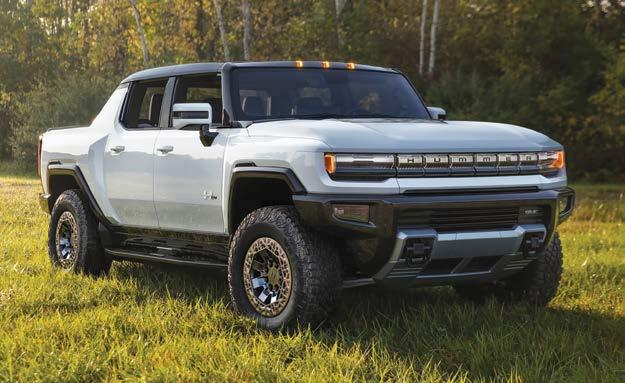
The backup cameras may not display any rearview images when the vehicles are shifted into reverse. Instead, a driver may see a black or blue screen.
Between April 24, 2018, and Aug. 3, 2023, there were 3,486 warranty reports regarding rearview camera failures, two alleged crashes but no reports of injuries.

In September 2021, Ford recalled the Explorer, Lincoln Aviator and Lincoln Corsair for rearview camera failures, and in January 2023 the same vehicles
were recalled again. Owners reported their backup camera images were blue or black even though the vehicles had been repaired.
Then in May, Ford recalled more than 422,000 Ford Explorer, Lincoln Aviator and Lincoln Corsair vehicles due to problems with the 360-degree rearview cameras.
This latest recall includes models not previously recalled.



Ford’s engineers now believe the backup camera failures can occur due to the image processing module software. In addition, there can be problems with the camera hardware and the wiring retention.
Ford expects to mail rearview camera recall letters Oct. 2.
Ford and Lincoln owners may call 866-436-7332 and ask about recall number 23S48.


Concord Kia Concord
(888) 811-3058
(925) 685-2952 Fax
M-F 8am - 5:30pm
Sat 9am - 1pm
Rosesville Kia
Roseville
(916) 783-8129
(916) 783-1005 Fax
M- F 7am-6pm Sat 8am-4pm
parts@rosevillekia.com


www.rosevillekia.com

AllStar Kia
San Bernardino
(909) 763-4755
(909) 763-4744 Fax
M-F 8am - 6pm Sat 8am - 2pm
parts@allstarkia.net
www.allstarkia.net
Car Pros Kia Glendale
Glendale
(818) 745-1103
(818) 244-0017 Fax
M-F 7am - 6pm
duncan@carpros.com
Car Pros Kia Huntington Beach Huntington Beach

(714) 274-6178
(714) 847-4410 Fax
M-F 7am - 6pm Sat 8am - 4pm
jasonr@carpros.com
Citrus Kia Ontario
(800) 583-7042
(909) 390-0948
(909) 390-0982 Fax
scunningham@citrusmotors.com www.citrusmotors.com
M-Sat 7am - 6pm
Free Local Delivery
Ask for Ike, Jimbo, Chris, Juan, Sean, Jeff Se Habla Español
Kearny Mesa Kia
San Diego
(800) 635-6669
(858) 560-5033
(858) 560-9648 Fax
Largest wholesaler in San Diego with 17 delivery trucks
Kia of Alhambra
Alhambra
(626) 289-7803
(626) 289-8807 Fax
kip@kiaofalhambra.com
Kia of Carson Carson
(310) 221-9101
(310) 507-8595 Fax
M-Sat 7am - 7pm Sun 8am - 5pm
www.KiaofCarson.com
Kia of Downtown LA Los Angeles
(213) 342-0923
(213) 342-0980 Fax
M-F 7am - 7pm
www.kiaofdtla.com
Kia of Irvine Irvine
(855) 847-3592
(949) 777-2342 Fax
North County Kia
Escondido
(760) 945-9939
(866) 888-3074 Fax
parts@autogrp.com
www.northcountykia.com
M-F 7am - 6pm
In San Diego Over 10 Years
Valley Hi Kia
Victorville
(888) 264-6075
M-F 7am - 6pm Sat 7am - 4pm
smeyer@valleyhi.com
www.valleyhikia.com

Jim Marsh Kia Las Vegas
(877) 274-3820
(702) 946-6084 Fax
M-F 8am - 6pm Sat 8am - 2pm
johnd@jimmarshauto.com
Towbin Kia Henderson
(702) 868-1234
(702) 567-0037 Fax
M-F 7am - 6pm Sat 7am - 4pm
jmoore@towbinkia.com www.tkwholesale.com
WASHINGTON
Car Pros Kia Renton Renton



(425) 204-6635
(425) 793-3889 Fax
M-F 7am - 6pm Sat 8am - 5pm
jgaeir@carpros.com
Lee Johnson Kia Kirkland
(425) 823-0188
(425) 284-1790 Fax
M-F 7am - 5:30pm Sat 7am - 5pm
tthompson@leejohnson.com
Two former Tesla employees are currently facing a lawsuit filed by the EV maker over the leak of the “Tesla Files” earlier this year. The leaked data reportedly includes information—such as social security numbers and other personal identifying information—of more than 75,000 individuals.
Tesla outlined its response to the issue in an advisory notice published by the Maine Attorney General’s Office. The letter included a background into the issue, as well as the steps the company has taken to address the leak.
As noted by Tesla, it was informed by German media outlet Handelsblatt on May 10 that it had obtained confidential information. Later investigations revealed the leak was from two former Tesla employees.
As part of its response to the

data leak, which was reported by the German media outlet as the “Tesla files,” the EV maker said it filed the appropriate legal action against its two former employees. The electronic devices of the two ex-Tesla workers were reportedly seized as well, and the company has obtained court orders that would prevent the former employees from further disseminating the leaked data.
Tesla said it is offering to those affected by the data leak a complimentary membership to Experian’s IdentityWorks, which provides credit monitoring as well as identity detection and resolution services. The company also advised its users to be extremely vigilant against possible phishing attempts, and be extremely thorough with their account statements and credit history.
Source: J.D. PowerThe U.S. government estimated unemployment fraud during the pandemic cost taxpayers up to $135 billion, or about 11% to 15% of the total amount of unemployment insurance benefits paid during the pandemic.
That’s according to the latest report from the U.S. Government Accountability Office, which the U.S. Department of Labor disputes.
“The full extent of [unemployment insurance] fraud during the pandemic will likely never be known with certainty,” according to the report.
The Department of Labor took issue with Government Accountability Office’s fraud estimate, saying it was likely overstated. However, the Government Accountability Office disagreed.
“The unprecedented
demand for UI benefits and the need to quickly implement the new programs during the pandemic increased the risk of fraud,” according to the report. “The increased significance of the UI system during the pandemic drew attention to its vulnerabilities and susceptibility to fraud, waste, abuse and mismanagement.”
Expenditures across the UI system totaled about $900 billion from April 1, 2020, through May 31, 2023, according to Department of Labor. This includes about $230 billion under the regular UI and Expanded Benefits programs and about $670 billion under the pandemic UI programs that expired on Sept. 6, 2021. Twenty-four states ended their participation in at least one of the pandemic UI programs before the programs expired.
www.autobodynews.com

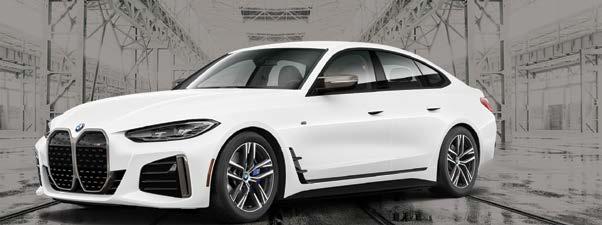
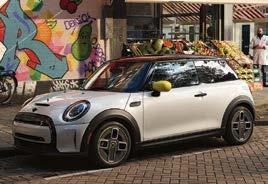
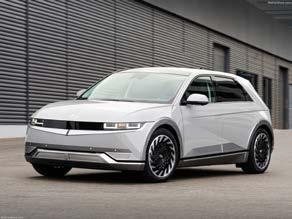

No. California
American Chevrolet MODESTO
209-491-7810
209-575-2564 Fax
M-F 7:30 am - 5:30 pm Sat 9 am - 2 pm gmparts@americanchevrolet.com www.americanchevrolet.com
Blackstone Chevrolet Wholesale Parts FRESNO
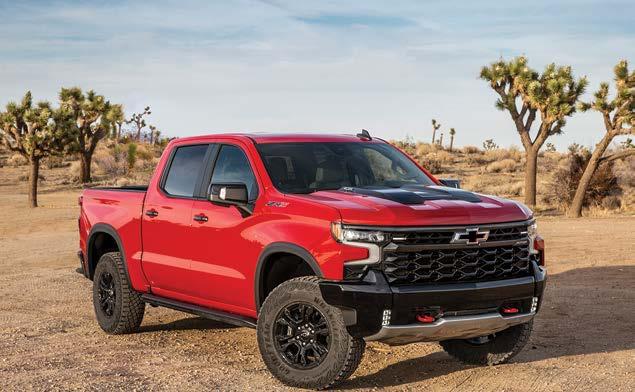
559-438-5875
559-438-4345 Fax
M-F 7:30am – 5:30pm Sat 8am – 4:30pm bharman@blackstonegm.com
Chase Chevrolet STOCKTON
209-475-6620
209-475-6708 Fax
M-F 7am - 5pm Sat 7:30am-4:30pm cesar@chasechevrolet.com
Dublin Chevrolet Cadillac Buick GMC DUBLIN
925-828-8251
925-829-2941 Fax
M-F 7am - 6pm dublinchevyparts@cacargroup.com www.dublinchevrolet.com
No. California
FH Dailey GM Parts Center SAN LEANDRO
800-4A-GMPART
510-351-0534
M-F 8 am - 5 pm Sat 8 am - 4 pm parts@fhdailey.com www.fhdailey.com
Michael Stead Cadillac WALNUT CREEK
925-934-5022
925-934-0336 Fax
M-F 8 am - 5 pm Sat 8 am - 3 pm steadparts@gmail.com
Courtesy Chevrolet SAN DIEGO
800-336-1404
619-297-4023 Fax
M-F 7am - 6pm Sat 8am - 5pm www.courtesysandiego.com
Paradise Chevrolet VENTURA
888-5-CHEVY-5
(888-524-3895)
805-642-0134
805-644-7214 Fax
M-F 7:30am - 6pm Sat 8am - 3pm
So. California
Rydell Automotive Group SAN FERNANDO VALLEY
818-832-1660
818-832-1692 Fax
M-F 6am - 7pm Sat 8am - 5pm nrparts@rydells.com
Thorson Motor Center PASADENA
626-793-0454
626-795-6872 Fax
M-F 7:30am - 6pm Sat 8:30am - 2pm parts@thorsonmotorcenter.com
Denny Menholt Chevrolet BILLINGS 406-896-3111
406-896-3924 Fax
M-F 7 am - 6 pm tsoltis@dennymenholt.com
Nevada
Corwin Buick GMC RENO 775-333-8777
775-322-1837 Fax
M-F 8am - 5:30pm ahardie@corwinauto.com www.corwinbuickgmc.com
Michael Hohl Motor Company CARSON CITY 775-884-8619
775-884-8645 Fax
M-F 7 am - 6 pm Sat 8 am - 5 pm gmparts@michaelhohl.com
Camp Chevrolet SPOKANE 509-456-7860 509-458-3792 Fax
M-F 7:30am - 5pm zacharydeason@lithia.com www.campchevrolet.com
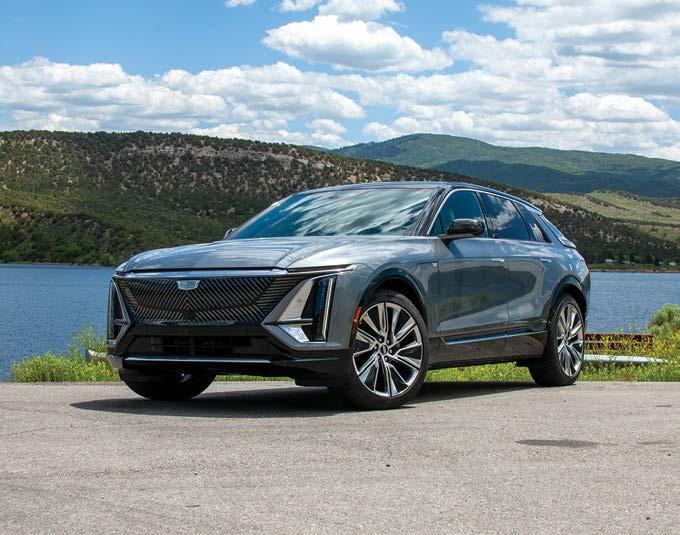
Teamster-supported legislation that would require a trained human operator in autonomous vehicles weighing more than 10,000 pounds overwhelmingly passed the California Senate on Sept. 12 with strong bipartisan support, and heads to Gov. Gavin Newsom, the Teamsters announced in a news release.
California Assembly Bill 316, first introduced in January by Cecilia Aguiar-Curry, D-Winters, Laura Friedman, D-Glendale, Tom Lackey, R-Palmdale, and Ash Kalra, D-San Jose, received votes in favor from all but four state senators.
“During the pandemic, Gov. Newsom thanked Teamster truck drivers for risking their lives to keep the economy afloat. But he actually needs to prove that he cares about workers by signing AB 316. If Gov. Newsom vetoes this bill, he is putting the livelihoods of hundreds of thousands of truck drivers at risk, while jeopardizing public safety,” said Teamsters General President Sean M. O’Brien. “The Teamsters rightfully stand against such dangerous technology. We will fight to make sure AB 316 becomes law.”
“I am thrilled that AB 316 passed the California Senate with bipartisan support,” said Aguiar-Curry, assembly speaker pro tempore.

“The people of California have spoken—they are scared of moving too fast with this technology, before it can be proven to be safe. Furthermore, the rush to profits while ignoring the impact on public safety and jobs must not happen.”
The Sept. 12 vote comes on the heels of new public polling showing nearly three-fourths of Californians across party lines, gender, geography and all other demographics support AB 316, which would help keep California roads safe and protect goodpaying jobs. The poll also highlights an overwhelming number of Californians are uncomfortable being on the road alongside driverless vehicles. The Governor’s Office of Business and Economic Development recently voiced opposition to AB 316 via an agency letter.
The Teamsters will rally in Los Angeles and Sacramento, alongside thousands of labor allies, elected officials and California public safety
officials in support of AB 316.
AB 316 is supported by the Teamsters and the California Labor Federation.
On the same day, the International Brotherhood of Teamsters released a guiding document for federal policymakers to address issues with autonomous vehicles (AVs). The framework, Autonomous Vehicle Federal Policy Principles, arrives at a critical time when accidents caused by self-driving cars and trucks increasingly harm families and put communities at risk across the nation.

The Teamsters outlined five key principles for Congress and federal regulators to follow for a federal AV policy that protects workers and enforces safety standards, including:
Regulating the vehicle: The federal government has authority over vehicle manufacturing and performance standards and must apply these authorities to selfdriving cars and trucks
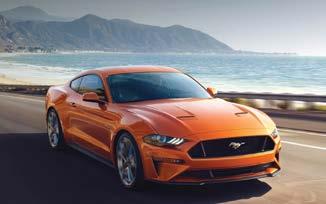

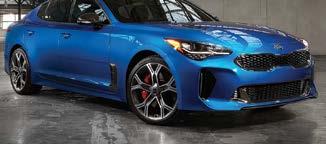
Regulating the operator: Federal Motor Carrier Safety Administration (FMCSA) regulates the driver of commercial vehicles,

and the circumstances and safety conditions in which they operate
Regulating operations: The Department of Transportation and FMCSA possess numerous regulatory authorities related to the safe operations of vehicles and the ability of carriers to receive authority to begin and continue operations

Interaction with other laws: Congress must consider issues that may arise from the relationship between existing law and the efforts to legislate and regulate AVs
Workforce impacts: Congress cannot entertain any legislative package dealing with self-driving cars and trucks that does not directly and forcefully address issues related to the workforce, and any changing operational or economic conditions that occur as the result of AV commercialization.

DOWNEY NISSAN
Downey
562-334-1188
(562) 334-1195 Fax
M-F 7-5
wholesaleparts@downeynissan com
MOSSY NISSAN
ESCONDIDO
Escondido
888-292-0402
(760) 746-4300
(760) 739-5794 Fax
M-F 7:30-5
mikebe@mossy�com
RonH2@mossy com
NISSAN OF BAKERSFIELD

Bakersfield
888-402-6915
(661) 835-0389 Fax
M-F 7-6, Sat. 8-5
www nissanofbakersfield com
NISSAN OF VAN NUYS
Van Nuys
818-374-4421
(818) 787-8400
(818) 908-9520 Fax
M-F 7-6:30, Sat. 7-6
wholesaleparts@vannuysnissan com
www nissanofvannuysparts com
TEMECULA NISSAN
Temecula
951-972-8430
(951) 972-8396 Fax
M-F 7-6, Sat. 7-6, Sun. 8-5
wholesaleparts@temeculanissan�com
INFINITI
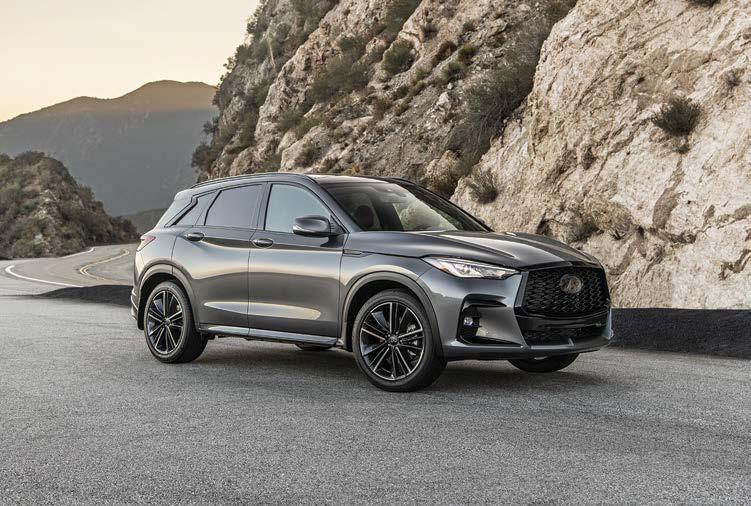
INFINITI OF VAN NUYS
Van Nuys
818-374-4493
(818) 787-8400
(818) 809-2727 Fax
M-Sat. 8-5

wholesaleparts@vannuysinfiniti com
www infinitiofvannuys com


FUTURE NISSAN
Roseville
916-677-5251
(916) 786-0743 Fax
M-Sat. 7:30-6
wholesale@futurenissan com
Parts FutureNissan com
MOSSY INFINITI OF ESCONDIDO
Escondido
888-292-0402
(760) 746-4300
(760) 739-5794 Fax
M-F 7:30-5
mikebe@mossy com
RonH2@mossy com
Kamehameha Schools welcomes Rivian to its tenant ‘ohana in Kapalama Kai, as the electric vehicle manufacturer prepares to open its first service center in Hawai‘i by the summer of 2024.
Located a block from Dillingham Plaza at 1603 Dillingham Boulevard, the 15,181-square-foot facility will be fully equipped to manage vehicle deliveries, along with comprehensive bumperto-bumper maintenance and repairs for Rivian’s R1 vehicles and commercial vans.
“Enhancing the resiliency of Kapalama Kai requires attracting businesses and opportunities that spark innovation and drive industry growth,” said Bobbie Lau, senior asset manager at Kamehameha Schools. “Being home to Rivian’s first Hawai‘i location aligns with
Founded in 2009, Rivian is known for its tailored online ordering system and direct-to-consumer approach. The company’s lineup includes the all-electric R1T pickup and R1S sports utility vehicle, both built on an innovative skateboard platform that integrates essential components beneath the wheel height, optimizing interior space while housing the battery pack, drive units, suspension, braking and thermal system. The R1T and R1S boast 400 and 390 miles of range, respectively.
To help customers make the most out of their Rivian adventure vehicles, the company offers both remote and field service backed by a fleet of Rivian Service Technicians who can perform the majority of service needs right at customers’ homes or wherever

mobile operations teams for the local region.
The new service center is a key element of Rivian’s strategy to expand its service network by more than 100% in the upcoming year. The company is actively recruiting for service technicians and support staff for the location with plans to bring on several dozen local employees.
“We’re excited to begin the development of our Honolulu Service Center, which will provide full service to Rivian vehicles on the island of O‘ahu,” said Noe Mejia, vice president of service operations at Rivian. “In addition to O‘ahu, this service center will serve as a hub for mobile service throughout the state.”
To learn more about Rivian’s vehicles and comprehensive customer support services, visit www.rivian.com.
Source: Rivian

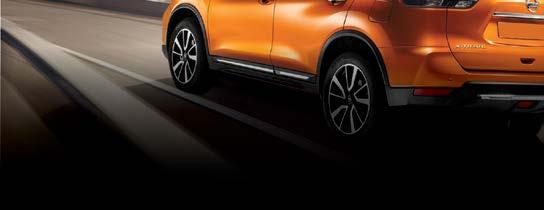

Mitchell, an Enlyte company, on Aug. 24 announced the availability of a new feature in Mitchell Cloud Estimating that automatically detects a completed scan or calibration and gives users the ability to quickly add it as a line on the collision-damage appraisal.

This enhanced integration between carrier and shop workflows helps ensure estimates include the appropriate diagnostic procedures performed. It is also designed to assist independent, staff and shop appraisers with maintaining accurate records while giving vehicle owners added visibility into the repair work completed.
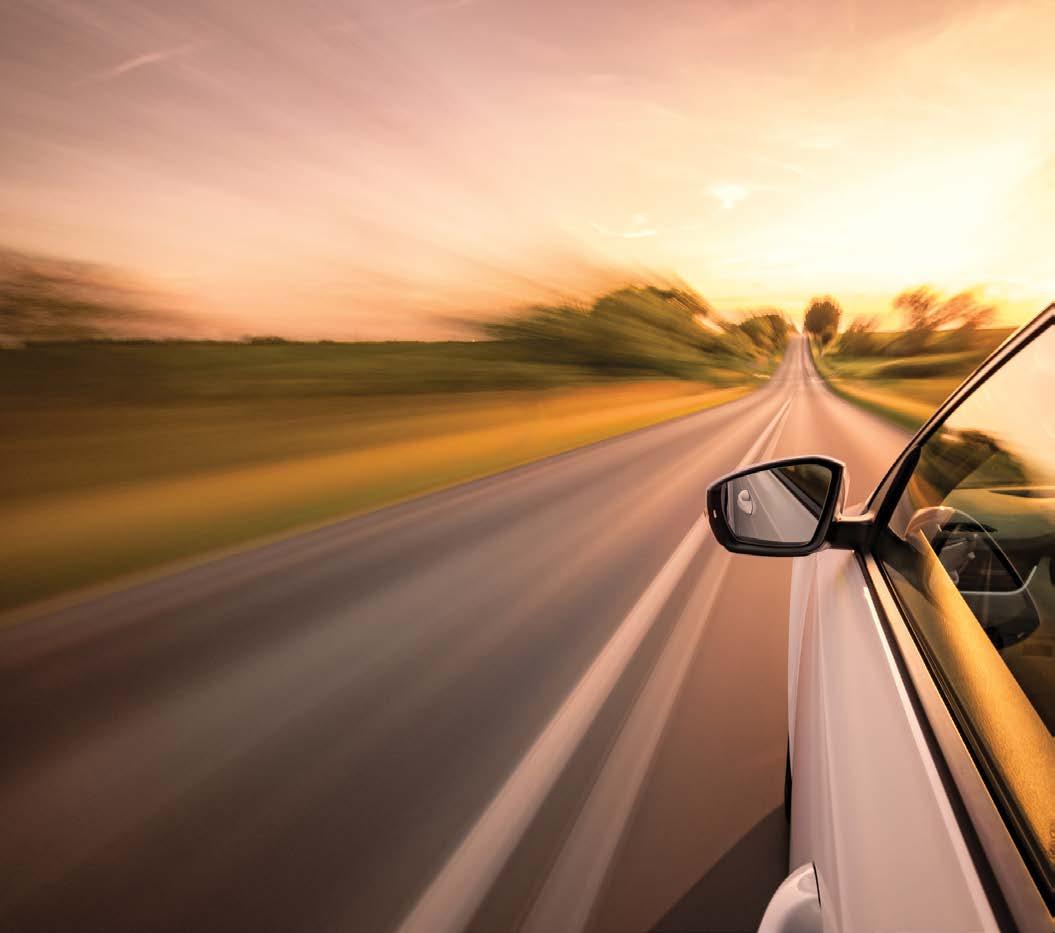
When configured, the new feature automatically detects diagnostic procedures performed on the vehicle with a Mitchell Diagnostics device and indexes the related scan and calibration documents associated with a claim. Then, in the estimating system, it surfaces a list of available scan and calibration operations related to the automobile.
Source: Mitchell

The 2023 SEMA Show New Products Showcase, the world’s largest display of new automotive aftermarket products, is relocating to the North Hall of the Las Vegas Convention Center. Accessible exclusively to SEMA Showgoers during the Oct. 31-Nov. 3 trade show, the New Products Showcase is the top buyer and media destination and serves as a one-stop shop to easily discover thousands of the hottest products in the industry.
“The New Products Showcase is the most comprehensive collection of what is coming next in the automotive industry, providing attendees a virtual glimpse into the future of the market,” said SEMA Vice President of Events Tom Gattuso. “It is where SEMA Show attendees can also envision how to utilize the latest products and services in their own businesses by learning details about the products, including the exhibitor’s booth number, so they connect directly with the manufacturer
on the Show floor. Exhibitors can maximize their ROI by participating in the New Products Showcase, which results in increased brand exposure and more visitors to their booths.”
All SEMA Show exhibitors qualify to submit one New Products Showcase entry at no cost, and they can enter additional products at a cost of $95 before Oct. 6 and $150 after. There is no limit to the number of entries a company can submit. Learn more and get involved at semashow. com/newproducts.
All New Products Showcase entries receive the added benefit of being featured in SEMA News, listed in the SEMA Show app and possibly winning multiple Best New Product awards, which are presented in 18 categories, including electric vehicle (EV) and advanced driver-assistance systems (ADAS), during the official SEMA Show Kickoff Breakfast on Oct. 31.
“The New Products Showcase provides exhibitors a great opportunity to generate leads and exposure for very little cost,

especially if they take advantage of early deadlines,” added SEMA Trade Show Director Andy Tompkins. “Having access to thousands of products in one location makes trend-spotting easy for buyers and media. Plus, our mobile app allows attendees to ‘favorite’ products so they can
automotive specialty-equipment industry. It is the place where professionals come to connect with product experts from the exhibiting companies for quality one-on-one discussions, demos and presentations.
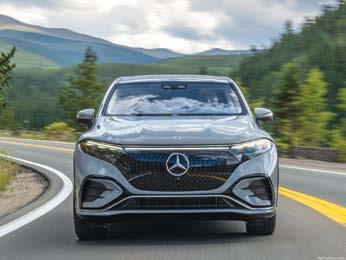

SEMA Show management is dedicated to making the event as cost-effective as possible for all. Registration is $60 through Sept. 29 and $120 after that date.
maximize their time at the Show and use the app as a year-round resource. It is like putting the future in your pocket.”
The 2023 SEMA Show, taking place Oct. 31-Nov. 3 at the Las Vegas Convention Center, is the ultimate business gathering for the

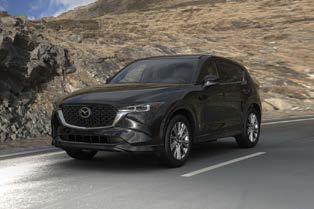
Registering early allows attendees to take advantage of the best rates and receive all the necessary information for planning their SEMA Show experience. Early registration also ensures that attendees will receive their badges in the mail before this year’s event.
Get started on your road to the 2023 SEMA Show by registering today at SEMAShow.com/register!
To learn more or to register to attend the 2023 SEMA Show, visit semashow.com.
Source: SEMA
Matt Ebert, founder and CEO of Crash Champions, will serve as emcee for the 2023 MSO Symposium, Oct. 30 at The Mirage Convention Center in Las Vegas.
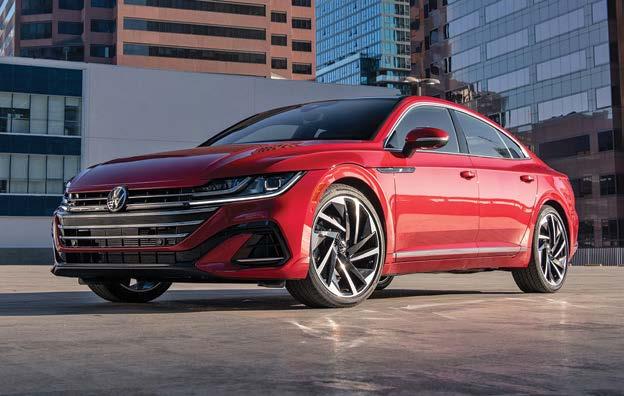
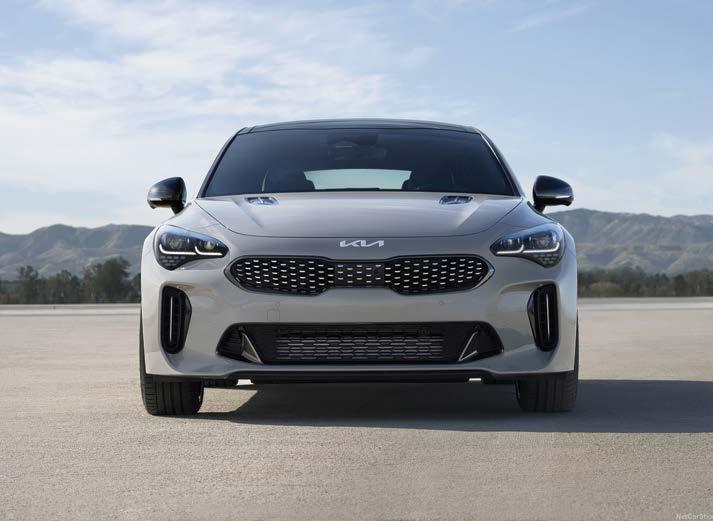
“Throughout its history, the MSO Symposium has earned a reputation as a dynamic platform that brings together top MSO leaders and executives,” Ebert said. “As a lifelong collision repair professional and MSO founder, it’s a true privilege to serve as emcee for this year’s event.”
Ebert is a passionate entrepreneur who founded Crash Champions in 1999 as a single local repair center serving New Lenox, IL. He has overseen the rapid expansion of the brand into the third-largest MSO in the U.S. Today, Crash Champions serves customers at more than 600 locations in 36 states as the largest founder-led MSO in the country.
“The MSO Symposium has served as the genesis of many significant advancements and innovations in our industry,” Ebert added. “And I believe the 2023 edition of the MSO Symposium will continue that proud tradition.”
This year’s MSO Symposium encompasses extensive networking opportunities and a very informative agenda. The program will assist small, medium and large MSOs and growing independent repair facilities in understanding current influences on their business and the data behind it.
was recently named a winner of the Midwest Ernst & Young (EY) Entrepreneur of the Year award.
“Matt’s participation and experience instantly had a positive impact on the program. We are pleased to have him serve as emcee at our 12th annual event,” said Roy Schnepper, former chair and current board member of the MSO Symposium.
The program runs from 9 a.m.-7 p.m. Oct. 30 with sessions that include discussions on private equity, the economy, consolidation trends, expanding streams of income and an outlook on the industry’s future.
Ebert joined the MSO Symposium’s Advisory Board in 2022. He was named the 2022 MSO Executive of the Year and
To join leading executives from the largest and most successful collision repair facilities in North America at this exclusive annual event, those who qualify may register by following this link. To meet the attendance requirements, one must be an owner or executive of any size MSO, an employee of an independent collision repair facility operating with greater than $3 million in annual sales, or a representative of a vehicle manufacturer (OEM) or insurance company. The only exception is the limited number of sponsors that help underwrite the program.


Additional information can be found at msosymposium.com or by calling 281-819-2332.
Polyvance now has a dedicated phone number for making video calls with its customers. Between the hours of 7 a.m. and 4 p.m. Central time, Polyvance will be accepting phone calls, text messages or video calls on the company’s new cell phone. This cell phone can accept video calls using the most popular video calling programs like WhatsApp, FaceTime, Zoom, Skype and Google Duo. The phone number is 256-717-9477.
Jobber or body shop customers with a question about plastic repair, products or plastic welder setup and maintenance can start a video call to easily show the Polyvance representative their situation. The Polyvance representative will work together with the customer to resolve the issue. Polyvance is also offering a new form of courtesy training that uses the video calling feature. If a customer purchases a Polyvance nitrogen plastic welder and needs immediate training, they can request a video call training session with a representative from Polyvance’s factory.
For more information, email training@polyvance.com.
Source: Polyvance
“Throughout its history, the MSO Symposium has earned a reputation as a dynamic platform that brings together top MSO leaders and executives,”
MATT EBERT FOUNDER AND CEO OF CRASH CHAMPIONS
The U.S. Environmental Protection Agency (EPA) excluded collision repair facilities from its proposal to increase required reporting under a revised Air Emissions Reporting Requirements (AERR) regulation.

The Automotive Service Association (ASA) applauded the move. Without the exclusion, ASA said, the rule would inflict considerable economic costs upon many small businesses while providing the government data of negligible value.
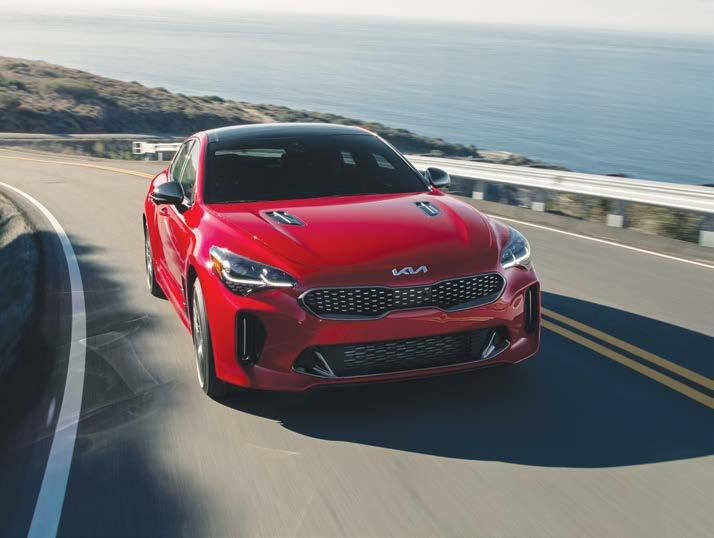
The Small Business Advocacy Review (SBAR) panel, convened by the EPA to assist in developing the proposal, selected ASA to serve as a Small Entity Representative (SER). ASA’s appointment as an SER provided the collision repair industry a platform to offer insight for the recommendations of the SBAR panel, which was comprised of the EPA’s small business advocacy chairperson, the director of the EPA’s Air Quality Assessment Division in the Office of Air Quality Planning and Standards, the administrator of the Office of Information and Regulatory Affairs within the Office of Management Budget, and the chief
counsel for advocacy at the Small Business Administration.
ASA recognizes and supports the federal government’s important role in ensuring the air remains healthy for everyone to breathe. Thousands of collision shops submit emissions data to various government agencies each year. In fact, the EPA already receives much of the same collision industry’s hazardous air pollutants (HAP) data proposed to be added to AERR. After SER meetings with the SBAR panel and submission of comments by ASA, the panel provided EPA more information to better understand the concerns of ASA’s members. The EPA followed with an analysis that, as summarized in the official regulatory proposal, revealed:
“…the collision repair industry… is unique in that it has the most small entities of any industry that the EPA is considering including in the proposed rule…and that much smaller number of the number of largest collision repair facilities (around 2,000) are estimated to fall within the emissions reporting thresholds under consideration. Given that the EPA is already receiving data through states from about 2,300
of such sources, the EPA is unlikely to reduce the number of facilities for which emissions data must be reported below the number it is already receiving. The EPA reviewed other [industries] in this way, but no other [industry] presented a similar situation. In other industries, the EPA either estimates that many more sources would need to report based on these proposed requirements or the EPA lacks sufficient existing emissions data for facilities [from those industries] to perform the same analysis.” Based on this information, the EPA concluded excluding collision repair shops would still allow them to accurately gauge air quality while avoiding unnecessary burdens for small businesses.
“This proposed revision to AERR accounts for the concerns that ASA shared with the EPA,” said ASA Board of Directors Chairman Scott Benavidez, AMAM. “We are encouraged that the EPA appears to have taken our perspective to heart. At the same time, we will remain vigilant and communicative with the EPA to ensure that the exclusion remains in the potential revision’s final iteration.”
Polyvance announced the immediate availability of its new budget-friendly 6180 Mini-Fuzer Hot Air Plastic Welding Station. The Mini-Fuzer completes Polyvance’s plastic welder lineup, filling the gap between the 5700HT Mini-Weld airless plastic welder and the professional quality Nitro-Fuzer nitrogen plastic welders.
The Mini-Fuzer includes both a hot air welder and an airless welder for making repairs to a wide variety of plastic materials. The hot air welder can be used to make fast, strong repairs on meltable plastics, and the airless welder can be used to repair thermoset polyurethane parts.
The kit is packaged with 10 plastic welding rod types and stainless steel wire mesh for reinforcement. The Mini-Fuzer is great for repairing virtually any plastic found on cars, trucks, motorcycles, ATVs, kayaks, canoes, recreational vehicles, agricultural equipment and more.
More information about the 6180 Mini-Fuzer Hot Air Plastic Welding Station can be found by visiting www.polyvance.com or by calling 800-633-3047.
Source: Polyvance
The following dealerships are eager to serve your needs. Call your local Subaru collision parts specialist today!
’re focused on getting you the Genuine Parts you need — fast and competitively priced. Put us to the test on your next Subaru repair or service job.


Subaru of San Bernardino San Bernardino (909) 888-8686 (909) 571-5483 Fax
Mon.-Fri. 7:30-7; Sat 7:30-5 parts@subarusb.com
www.sbsubaru.com
Elk Grove Subaru Elk Grove (877) 475-0659
(916) 509-8559 Fax
Mon.-Fri. 8-6 shawnh@elkgrovesubaru.com
www.elkgrovesubaru.com
Santa Cruz Subaru
Santa Cruz (888) 844-7131
(831) 420-1402

(831) 420-1923 Fax
Mon.-Fri. 7:30-6; Sat. 8-5 parts@santacruzsubaru.com
www.santacruzsubaru.com
Eastside Subaru
Kirkland
(425) 820-1676
Mon.-Fri. 7-4
ldarwin@eastsidesubaru.com
Kendall Subaru of Marysville
Marysville
Parts Hotline (866) 662-2819
(360) 716-2553 24 Hr Fax
Mon.-Fri. 7-6; Sat. 8-4:30
wholesaleparts@kendallauto.com
scotteney@kendallauto.com
www.kendallsubarumarysville.com
Niello Volkswagen Sacramento 916-482-5790
Fax: 916-481-9579
Mon-Sat 8am-5pm vw.parts@niello.com


WASHINGTON University Volkswagen Seattle

206-634-8200
Fax: 206-547-1581
M-F 7am-6pm parts@uvwaudi.com www.universityvw.com


Stellantis announced its partnership with Charge Enterprises, Inc., in which Charge has become an EV charging installation partner for Stellantis’ 2,600+ U.S. dealer network. Charge becomes the fourth recommended partner for dealer EV readiness for Stellantis dealers across the U.S., joining Future Energy, Vehya and AGI.

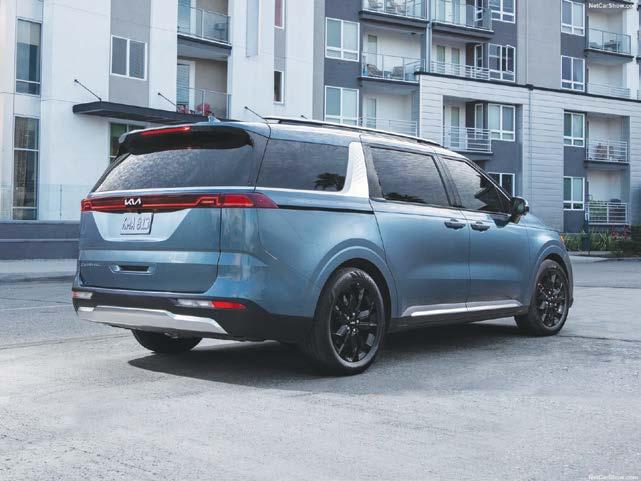

In another key step to ready its 2,600-plus dealerships for the automotive industry’s electrification plans, Stellantis is partnering with Charge Enterprises to support implementation of its required timeline. Charge differentiates itself with more than 150 years of automotive OEM leadership expertise to enhance the dealers’ experience and support the requirements to provide infrastructure implementation.


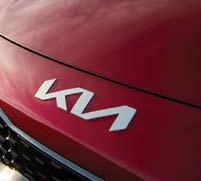
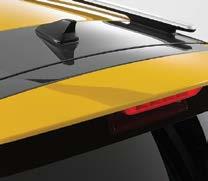


As an experienced infrastructure partner, Charge’s client education, project management, design, engineering and installation will provide a full-service solution for dealers.



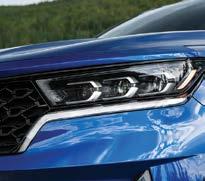



The U.S. Department of Transportation’s National Highway Traffic Safety Administration has issued a proposed rule which requires automobile manufacturers to equip vehicles with seat belt use warning systems for the right front passenger and rear seats to increase seat belt use.
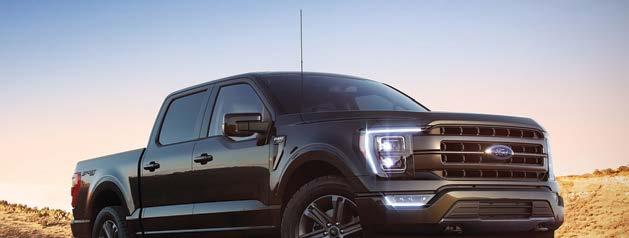
The new requirements would apply to passenger cars, trucks, most buses and multipurpose passenger vehicles with a gross vehicle weight rating of 10,000 pounds or less.
“Wearing a seat belt is one of the most effective ways to prevent injury and death in a crash,” NHTSA Acting Administrator Ann Carlson said. “In 2021, almost 43,000 people lost their lives on America’s roads, and half of those in vehicles were unbelted. This proposed rule can help reduce that number by getting more to buckle up.”
Seat belt warning systems use visual and audible alerts to encourage seat belt use. The proposed rule would amend Federal Motor Vehicle Safety Standard 208 “Occupant Crash Protection,” which currently requires a seat belt warning for the driver’s seat but does not





require a warning for other seating positions. The proposed rule would also update current driver seat belt warning system requirements.
warning for the driver and right front passenger seat that remains active until both the driver and right front passenger seat occupants are belted.

• An audio-visual change-ofstatus warning for both the driver and right front passenger seats that remains active until the unfastened seat belt is refastened.

light trucks and vans.
NHTSA’s proposed rule would implement the following requirements for rear seats:

• A visual warning on vehicle startup lasting at least 60 seconds to notify the driver of the status of the rear seat belts.


• An audio-visual change-of-status warning lasting at least 30 seconds if a rear seat belt is unbuckled while the vehicle is in operation.
NHTSA’s proposed rule would also implement the following requirements for front seats:
• An audio-visual seat belt use warning for the right front passenger’s seat.


• An audio-visual seat belt use
Manufacturers would have the flexibility to adjust warning signal characteristics—such as frequency and volume—to make the warning both effective and acceptable to vehicle owners.

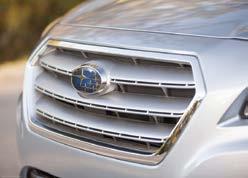

NHTSA estimates the proposed requirements would prevent approximately 300 non-fatal injuries and more than 100 fatalities annually. While seat belt use is much higher than it was a decade ago, there is room for improvement. Usage rates for rear seat passengers have consistently been below those for the front seats. For rear seat occupants, seat belts reduce the risk of fatality by 55% for passenger cars and 74% for light trucks and vans. For front seat occupants, seat belts reduce the risk of fatality by 44% for passenger cars and 63% to 73% for
This proposed rule seeks to establish industry-wide consistency to improve seat belt use and save lives. In 2019, NHTSA published an Advance Notice of Proposed Rulemaking seeking comment on a variety of issues related to potential rear seat belt warning requirements. The feedback from the 45 comments received was incorporated into the development of the newly issued NPRM.
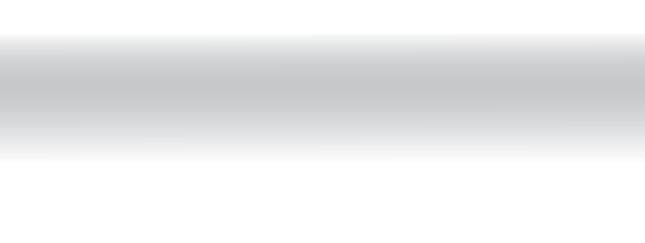
In January 2022, USDOT released the National Roadway Safety Strategy, a roadmap to address the national crisis in motor vehicle fatalities and serious injuries.

DOT also launched the next phase of the NRSS, the Call to Action campaign, and released a one-year progress report with accompanying data visualizations that highlight the extent and magnitude of the U.S. roadway safety problem and ways to eventually bring the number of deaths on our roadways to zero. NHTSA will be taking public comment on the proposed rule for 60 days.
Source: NHTSA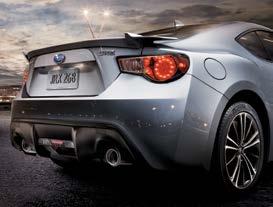
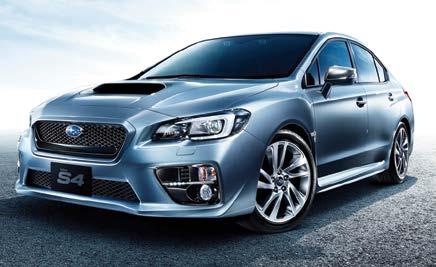
Stellantis is expanding its SPOTiCAR program into the U.S. SPOTiCAR, which first launched in 2019 across 11 countries in Europe, was created to simplify the individual purchasing experiences of customers and businesses, supported by a digital offering and specialized dealerships.



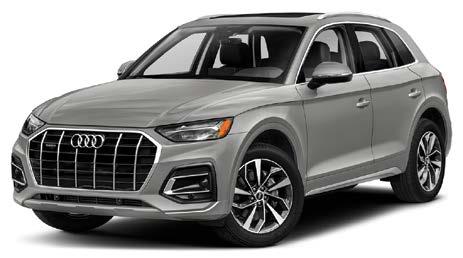


SPOTiCAR offers a selection of pre-owned vehicles across the Alfa Romeo, Chrysler, Dodge, FIAT, Jeep®, Ram and Wagoneer by Jeep brands that are selected, appraised and prepared by specialists across Stellantis, giving customers access to a broader range of vehicles and services. SPOTiCAR vehicles go through comprehensive multipoint checks before they are sold to customers, which include a minimum three-month warranty and available extended warranty, three months of roadside assistance, vehicle history and mileage check, available connected-vehicle services, trials and subscriptions (if equipped), rental car reimbursement, finance options, manufacturer retail experience from trusted brands and professional advice and support.

Source: Stellantis




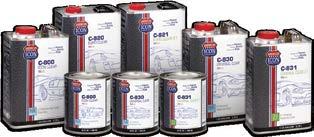







Former Porsche Cars North America president and CEO Kjell Gruner has joined electric vehicle manufacturer Rivian Automotive as chief commercial officer and president of business growth, Rivian announced Sept. 1.
Gruner reports directly to Rivian founder and CEO RJ Scaringe and oversees the company’s commercial functions, including sales, marketing, customer care, delivery, service and fleet.
Before his tenure with Porsche’s North American operation, Gruner was the German automaker’s global vice president marketing and chief marketing officer, responsible for development of the global Porsche brand, marketing and product.
He has also served as director of strategy for Mercedes-Benz.

“We will rely on Kjell’s talent and experience as we position ourselves for growth domestically and internationally, the launch of a new platform in R2 at a
new facility, and the continued success of our commercial vehicle line,” Scaringe said in a news release. “I look forward to working closely together as we tackle this next great wave of opportunity.”


Gruner said he is coming to Rivian at an “important time in its success story,” as the company has created “an exceptional brand” with its R1T pickup, R1S SUV and “category-defining” commercial van.
“As we build a strong brand,” he said, “I look forward to charting paths into new markets, building new partnerships and customer experiences, and engaging with our community while constantly embracing a clear and consistent strategy for the future.”
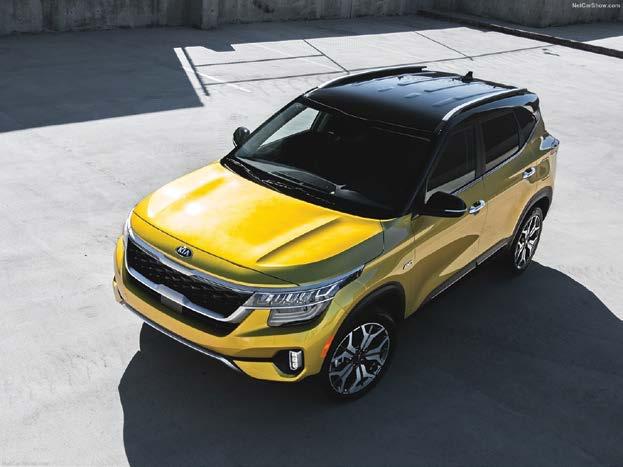
Co-President & Publisher
Nathan Gregory
Co-President & Publisher
Paul Stepanek
Editor
Abby Andrews
Contributing Writers
Mike Anderson, Stacey Phillips, Cole Strandberg, John Yoswick
Advertising Sales
Joe Momber, Norman Morano
Office Manager
Kelly Cashman
Digital Marketing Manager

Bryan Malinski
Art Director
Rodolfo Garcia
Senior Designer
Vicki Sitarz
Accounting & HR Manager
Heather Priddy
Permissions Editor
Randi Scholtes
Serving Alaska, California, Hawaii, Idaho, Montana, Nevada, Oregon, Washington and Wyoming. Autobody News is a monthly publication for the autobody industry. Permission to reproduce in any form the material published in Autobody News must be obtained in writing from the publisher.

©2023 Autobody News, LLC.

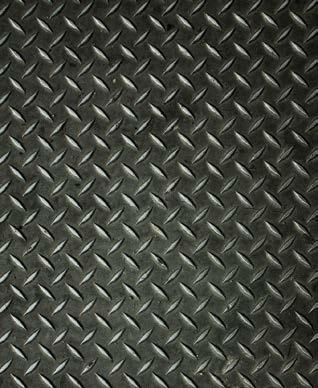

Autobody News P.O. Box 1516 Carlsbad, CA 92018 (800) 699-8251 (760) 603-3229 Fax www.autobodynews.com editor@autobodynews.com

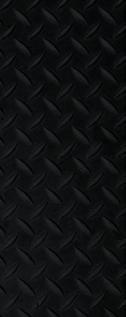
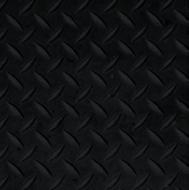
We’re excited to announce Californiabased entrepreneurs Nathan Gregory and Paul Stepanek have acquired Autobody News, based in Carlsbad, CA, effective August 2023.
Gregory and Stepanek bring a potent mix of content production, advertising, business management and growth experience necessary to lead Autobody News. With a combined professional history spanning over two decades across diverse sectors such as entertainment media, infrastructure construction, real estate investment, online media and consumer products, they bring a wealth of knowledge and entrepreneurial spirit to the business.
With our experience in entertainment media, we set out to acquire a media business that served a durable, stable and essential market. Upon our introduction to Autobody News, it became evident this platform
matched our strategic objectives. Recognizing its robust brand identity and foundational strength, we are excited to integrate our experience in content production, digital media and advertiser relationship management. Our aim is to enhance the brand’s prevailing reputation while increasing and improving content and advertising opportunities that resonate with the industry’s evolving needs. The collision repair industry represents a critical segment of the market, and we are committed to providing more and better national, regional and local news and content, bolstering the unique position Autobody News holds in the market.
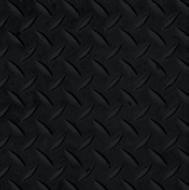
“Autobody News is more than just a publication; it’s a legacy,” said Stepanek. “With this acquisition, our vision is to tap into the core strength of Autobody News by further enhancing its content, especially the unique regional offerings. We understand the trust and expectations associated with this, and we’re committed to delivering.”
“Having a clear digital roadmap is crucial in today’s media landscape,” added Gregory. “We’re thrilled about
infusing our digital media expertise into Autobody News, ushering in an era of improved digital content and advertising opportunities that resonate with the industry’s evolving needs.”
We value the support and loyalty of

continue to provide the top-notch content and excellent client service Autobody News is known for.




We are proud of the multiyear relationships the company has developed with its talented columnists and will continue to rely on their expert coverage of the industry.
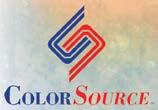

coverage.




For advertisers, we plan to leverage cutting-edge digital advertising technology for improved opportunities based on our expertise in this area.
We will uphold and elevate the standards set by Autobody News since its inception.

Autobody News was founded in 1982 by a body shop owner in Southern California. After recognizing its great brand equity and growth potential, Barbara Davies and Jeremy Hayhurst purchased the publication 16 years ago.
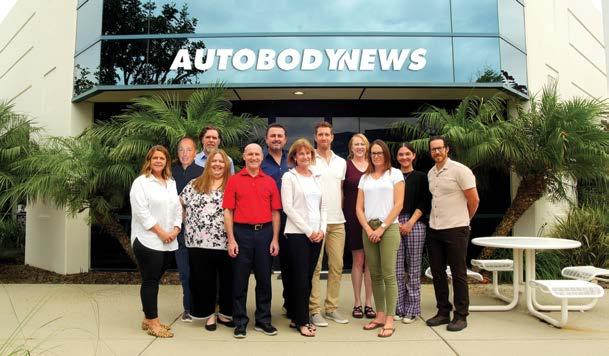
When they took over in 2007, there were only two regional editions circulated in seven states. Over the next four years, they expanded to all 50 states and printed five regional editions, enabling the company to reach body shops nationwide. Since then, the company has stayed true to its core mission of providing shops with regional and national news.

a dependable news source.

“Barbara and I didn’t know anything about the collision repair market when we purchased Autobody News but found everyone to be welcoming and helpful as we got up to speed,” recalled Hayhurst. “It’s a very tight-knit community and we’re grateful for the many personal and professional relationships we have developed.”
“Over the years, the passion and integrity of the Autobody News team have been the backbone of our success,” said Davies. “In Nathan and Paul, I saw not just entrepreneurs but custodians for the magazine’s future. Their vision, coupled with their digital prowess, made them the ideal choice to helm Autobody News’s next chapter.”
Autobody News is committed to providing essential news and information required by shops to stay competitive.
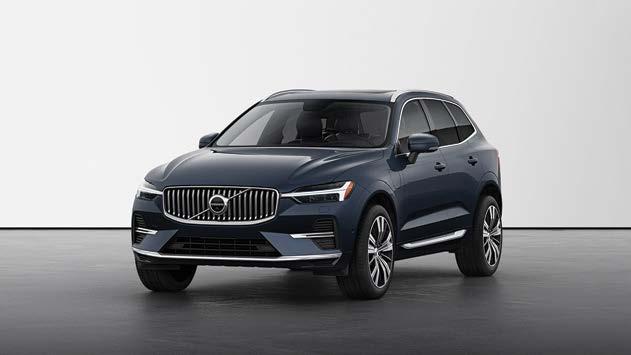
readers and advertisers and want to assure our stakeholders that operations will continue as normal. As a top industry publication, we will
For readers, we understand the importance of providing regional news for shops across the country and will continue to expand our
In addition to the five print issues, Autobody News provides digital news offerings, such as email newsletters, a podcast, social media platforms
As the only independently owned collision repair magazine focused on regional news, our goal is to continue reporting on important industry developments.
Planned expansion includes improving content strategy, and
Paint Booths | Installation | Service | General Contracting



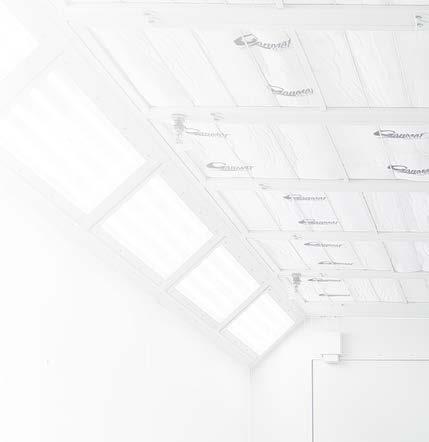


Featuring Industry-Leading GARMAT USA Equipment








Family-Owned and Operated, Serving the Industry with Quality and Dedication Since 1983

Providing a Full Spectrum of Licensed Services for All Your Needs
Delivering Hassle-Free Turnkey Installations and Complete Permit Services

Ensuring Full Compliance with California’s City, Fire, and Environmental Regulations
Delivering Warranty-Backed Equipment and Installation
Empowering Your Success with Customized Solutions Just for You
Licensed Comprehensive Construction Services
Specializing in Total Shop Utility Upgrades and Retrofits
Experts in New Facility Permit Acquisition and Architectural Engineering
Guaranteeing ADA Compliant Tenant Improvements

Offering Full Installation of Permitted Wash Bays
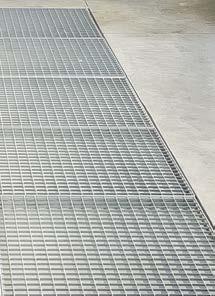
Commitment to Paint Booth Health with Annual Service and Maintenance Programs
